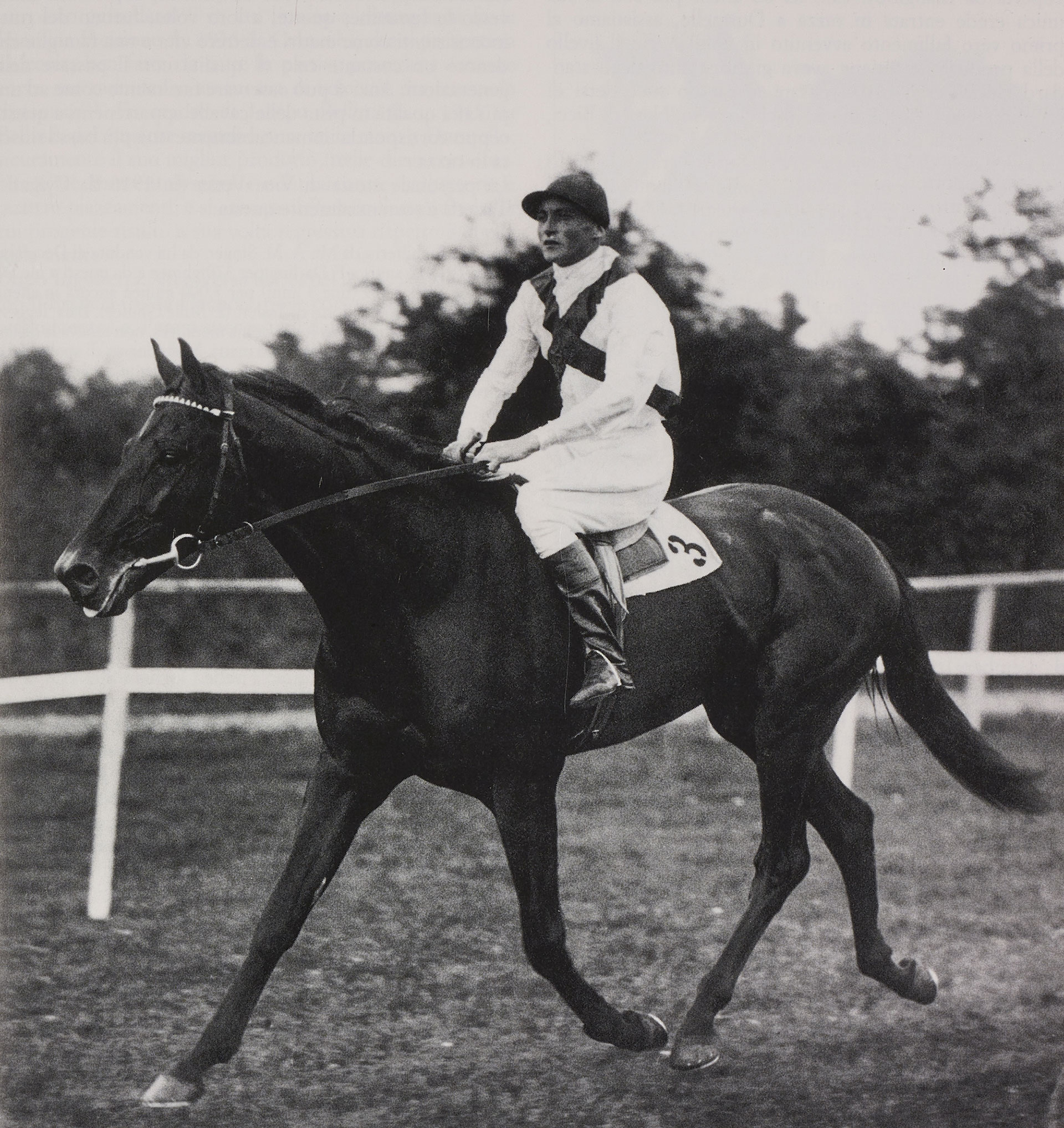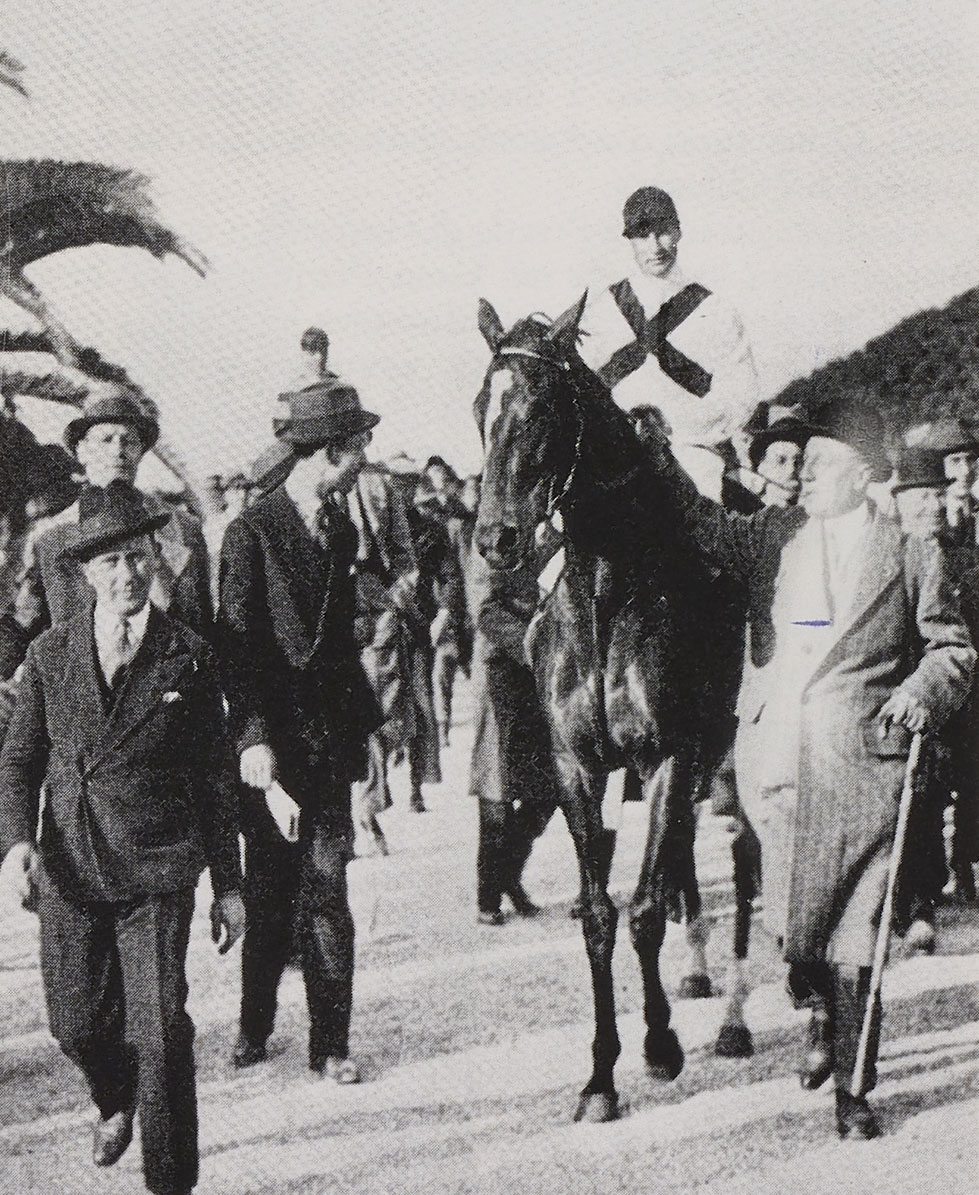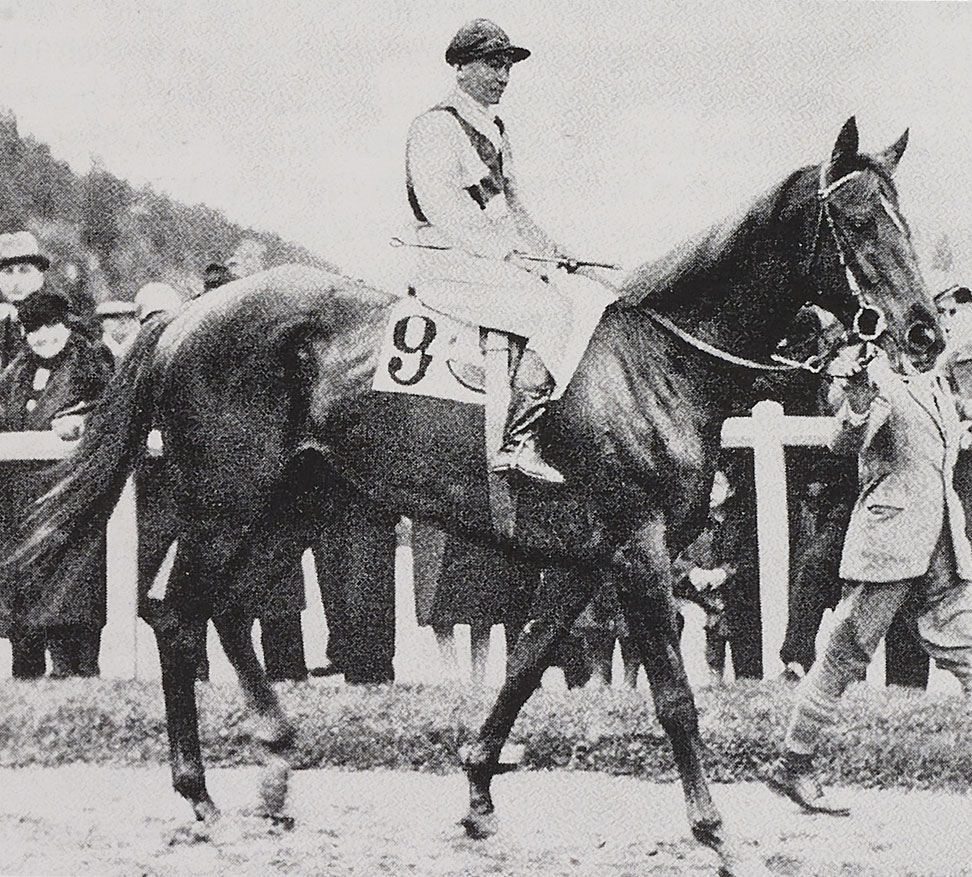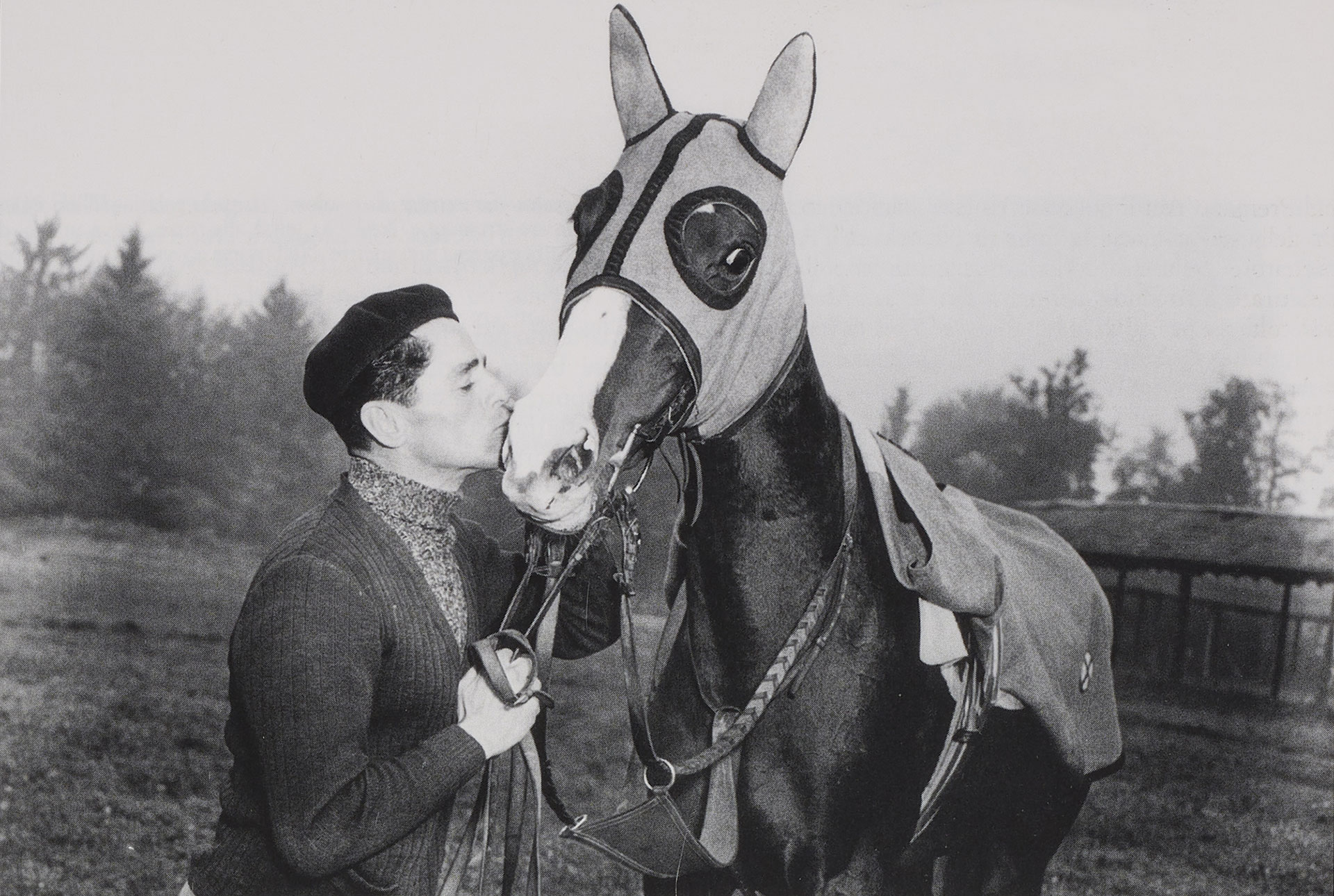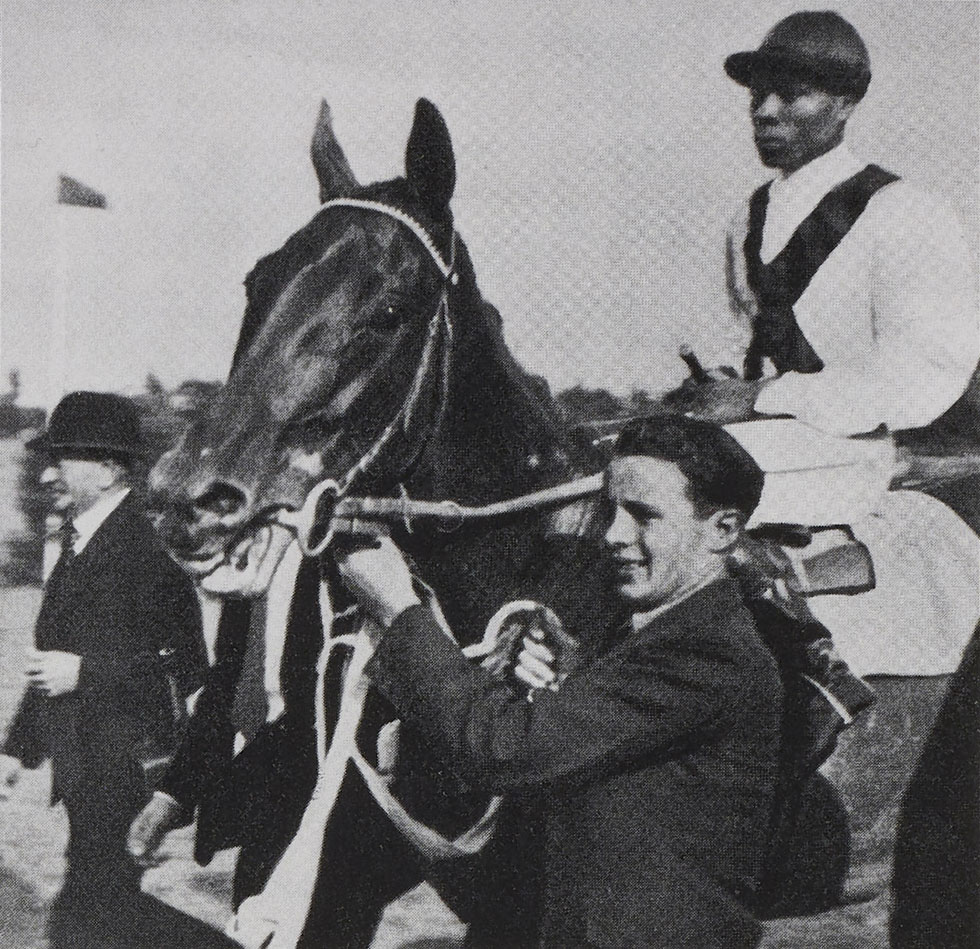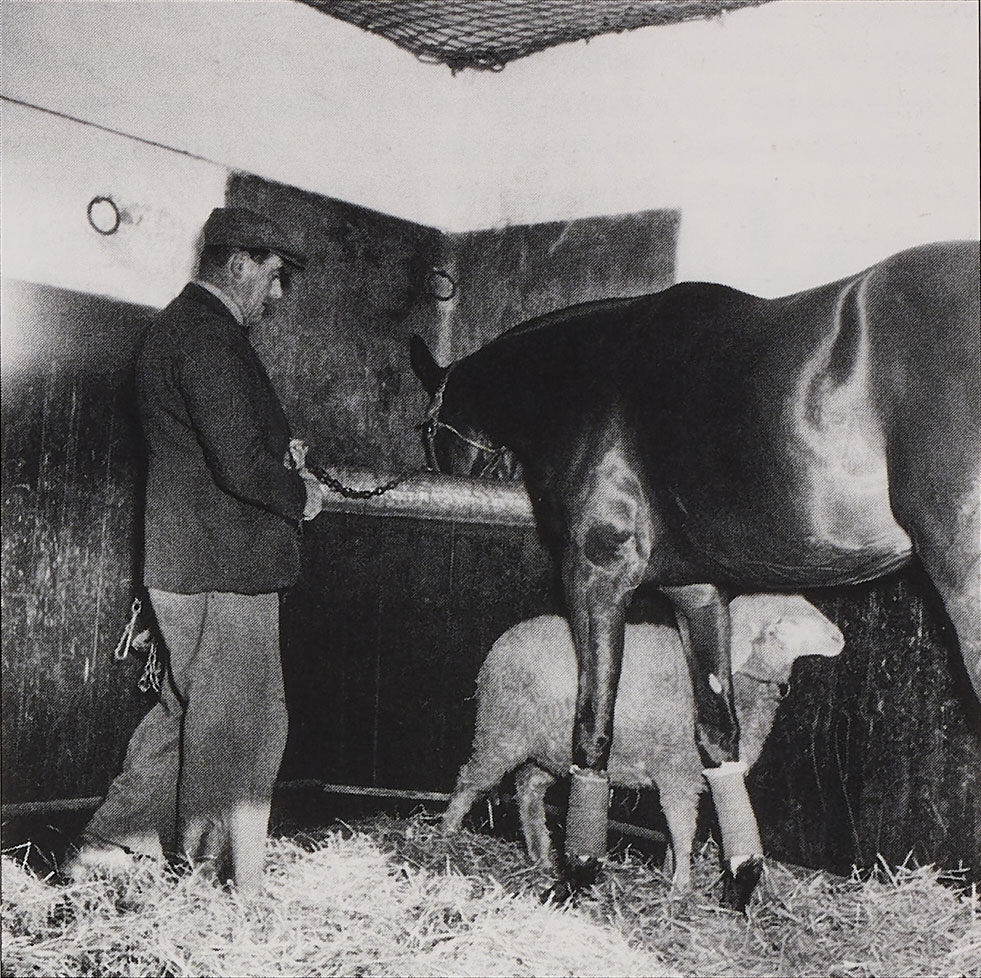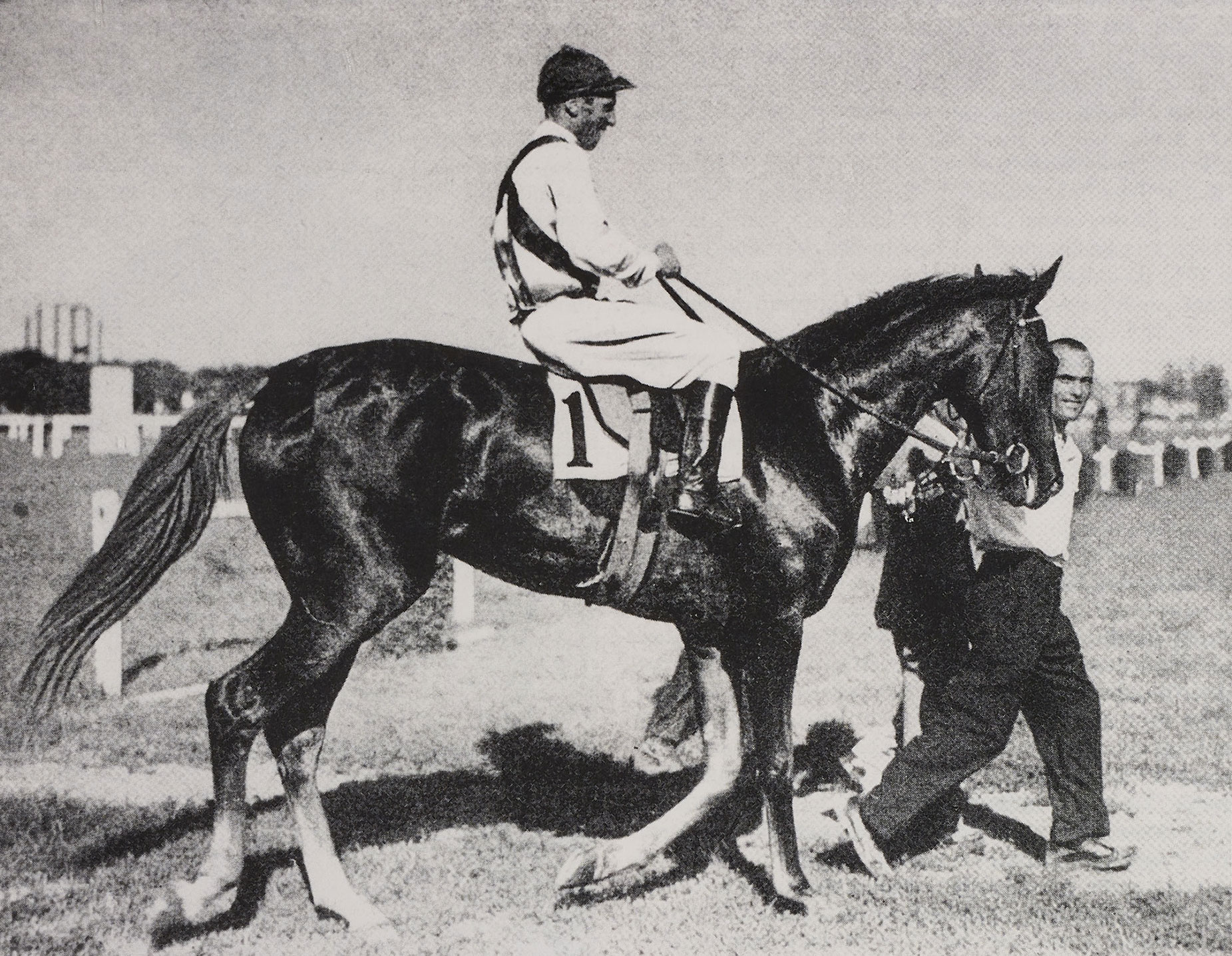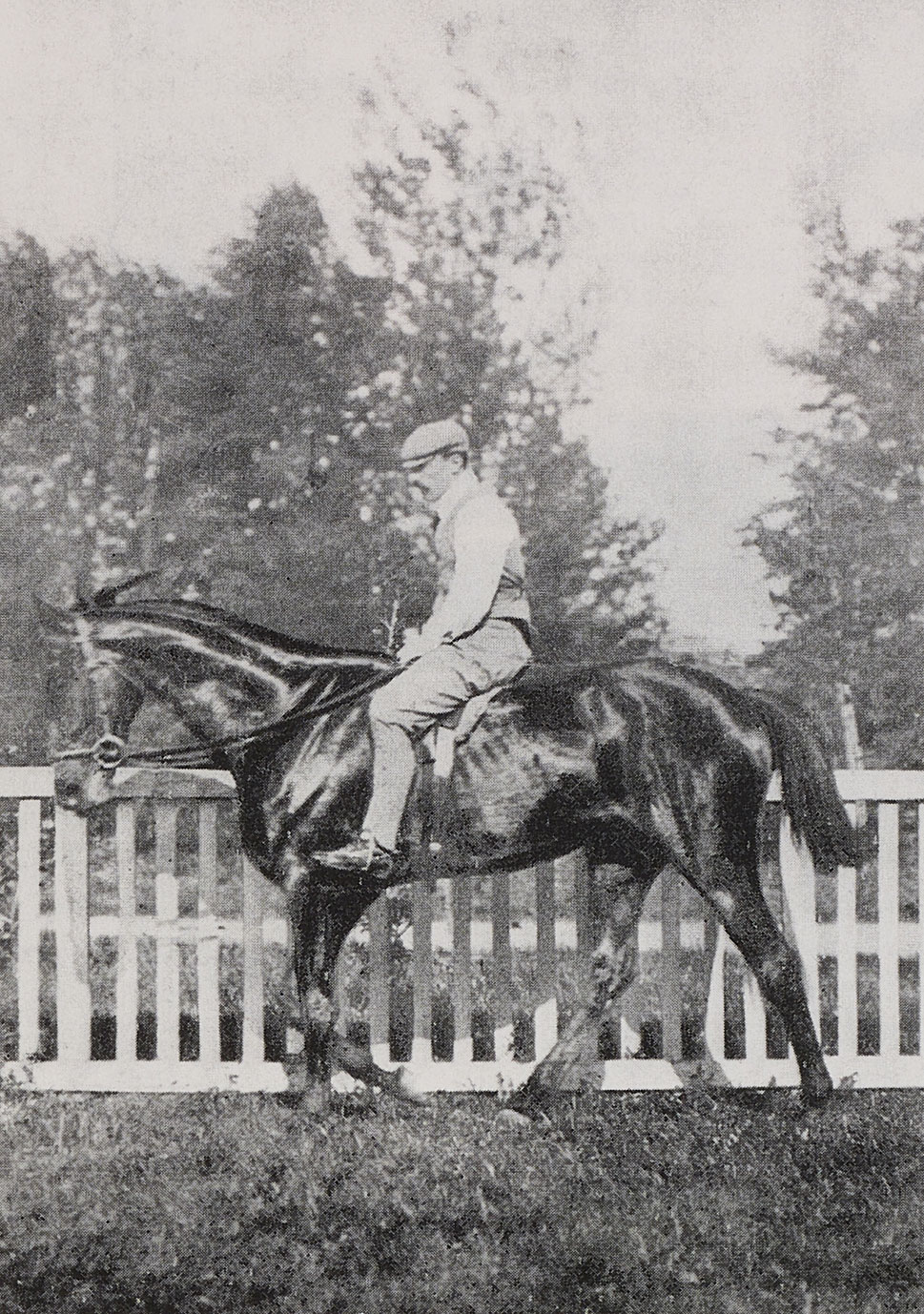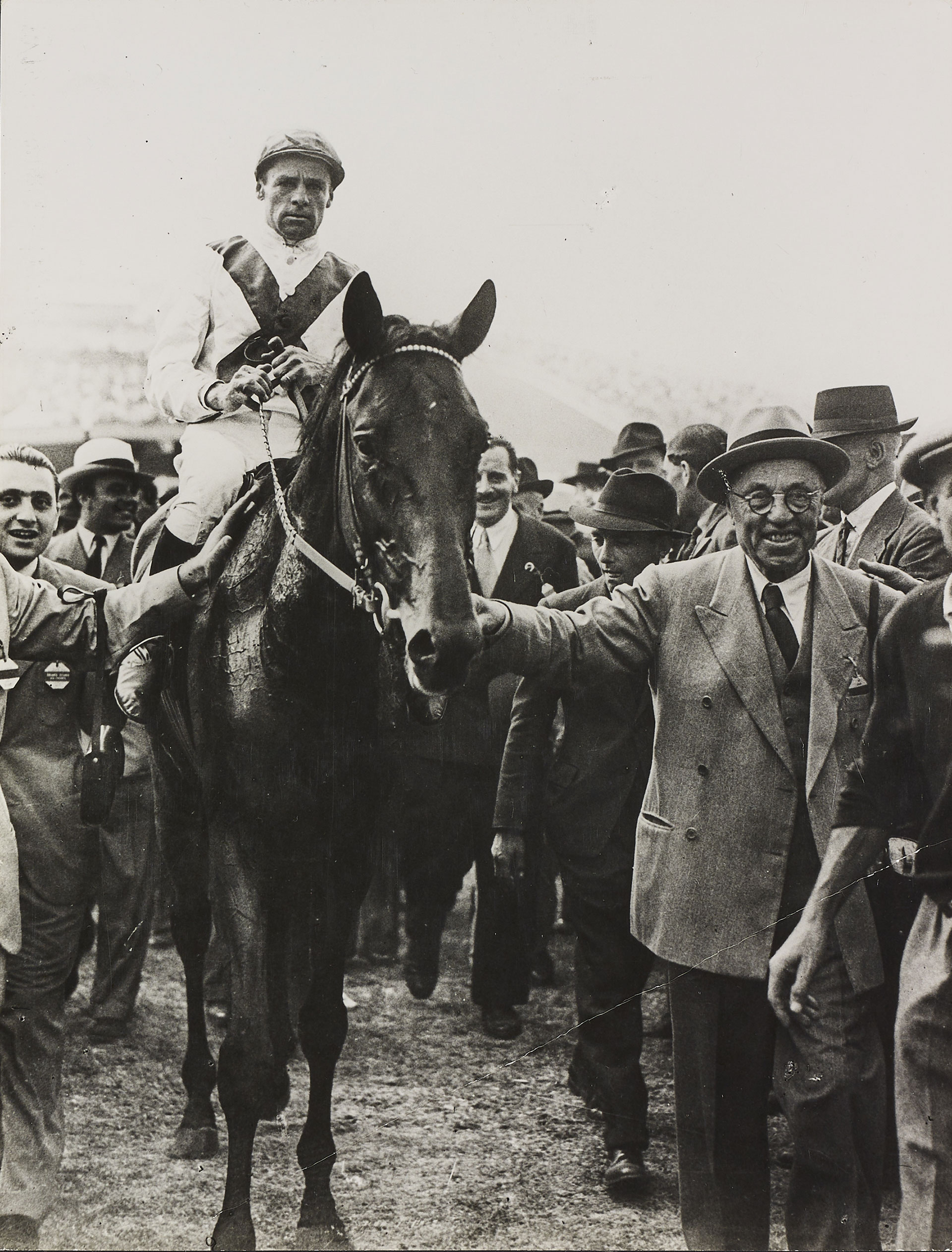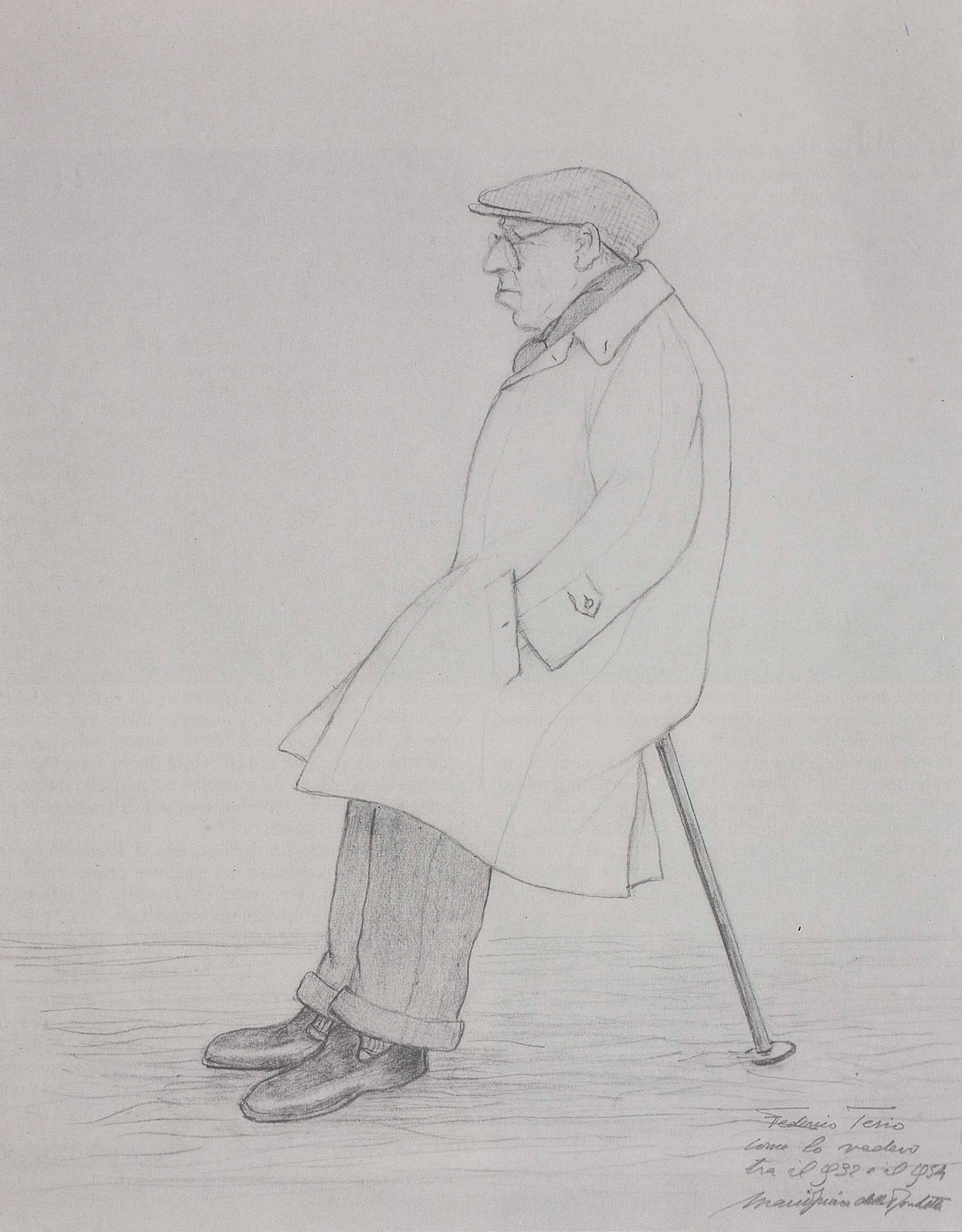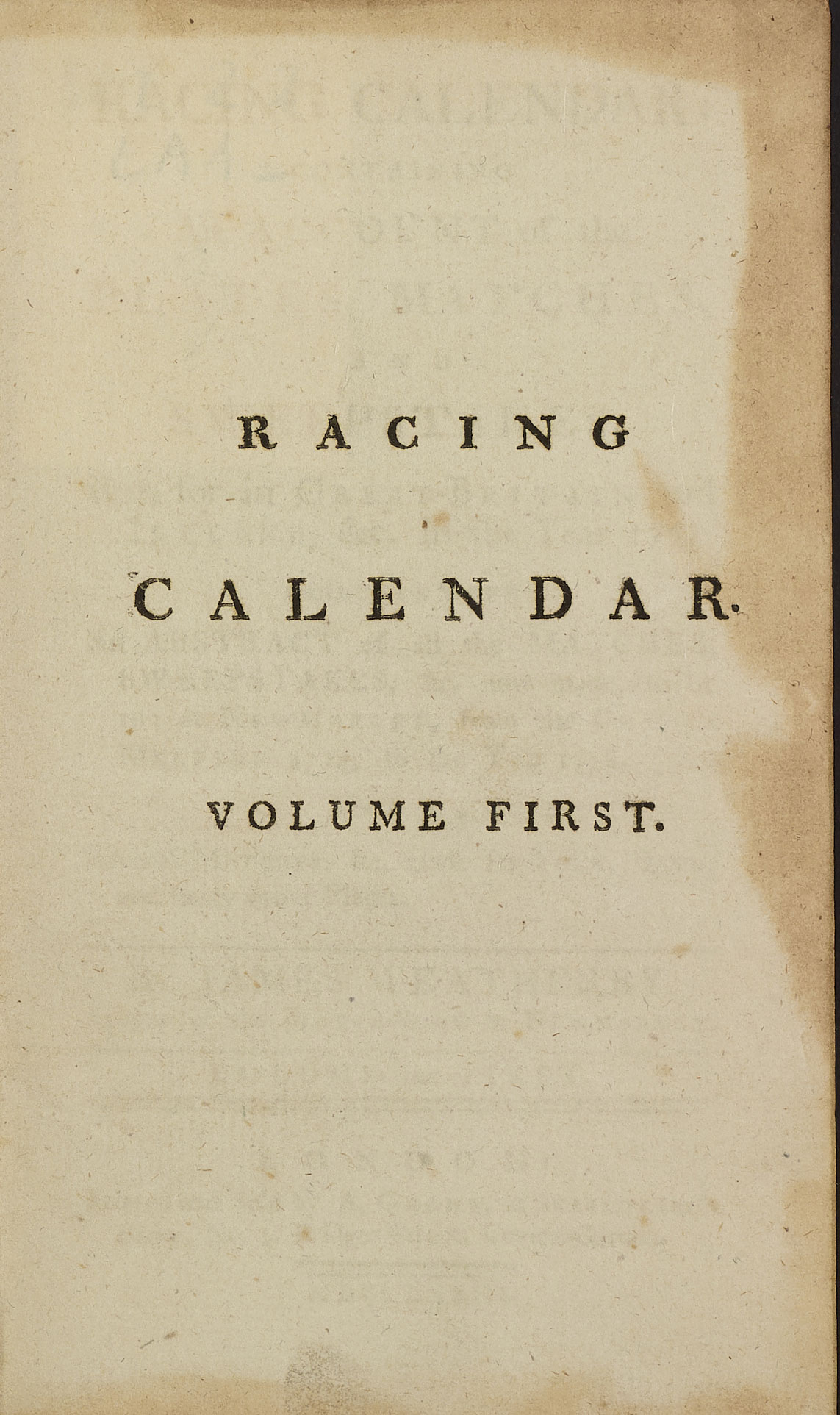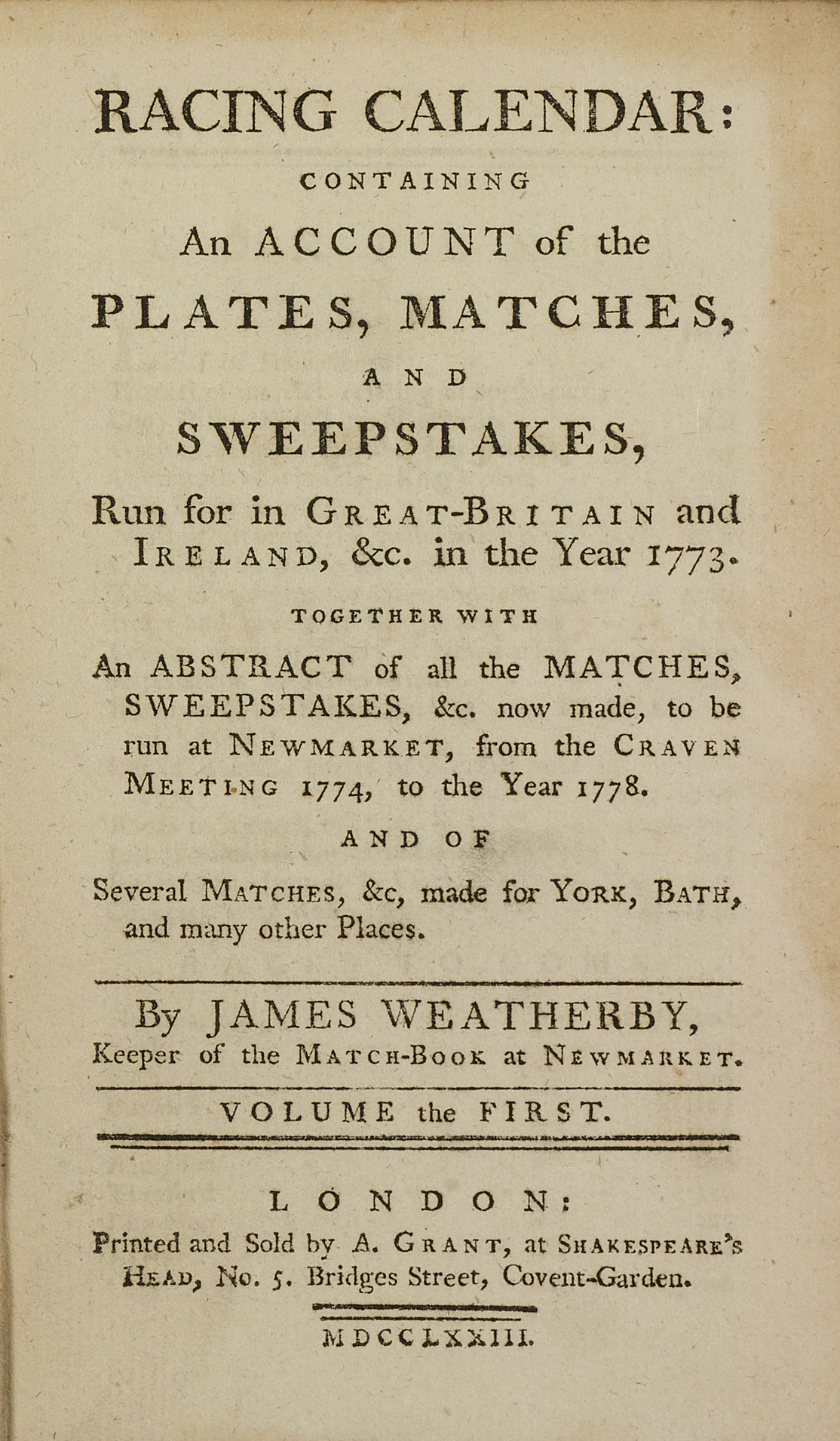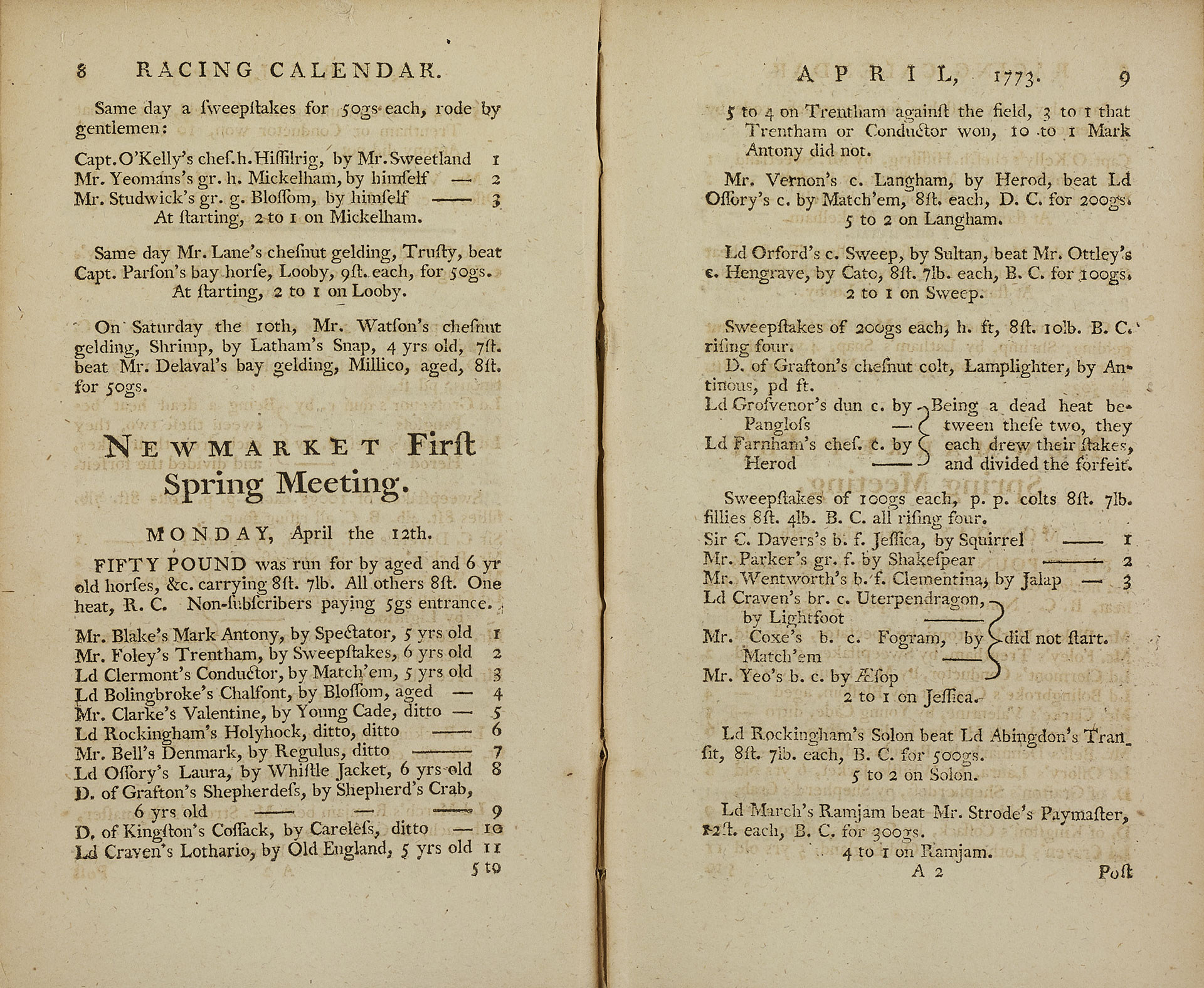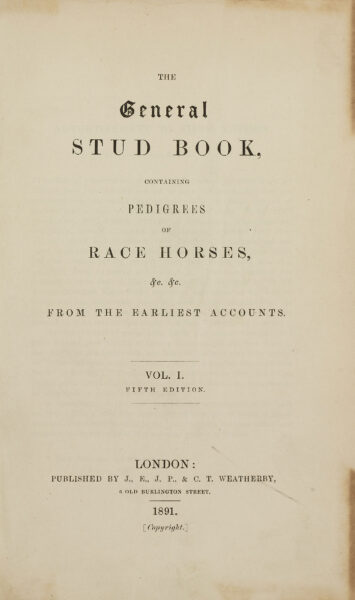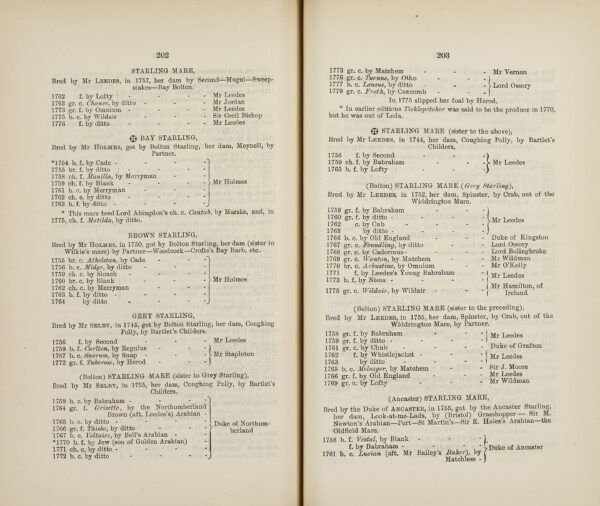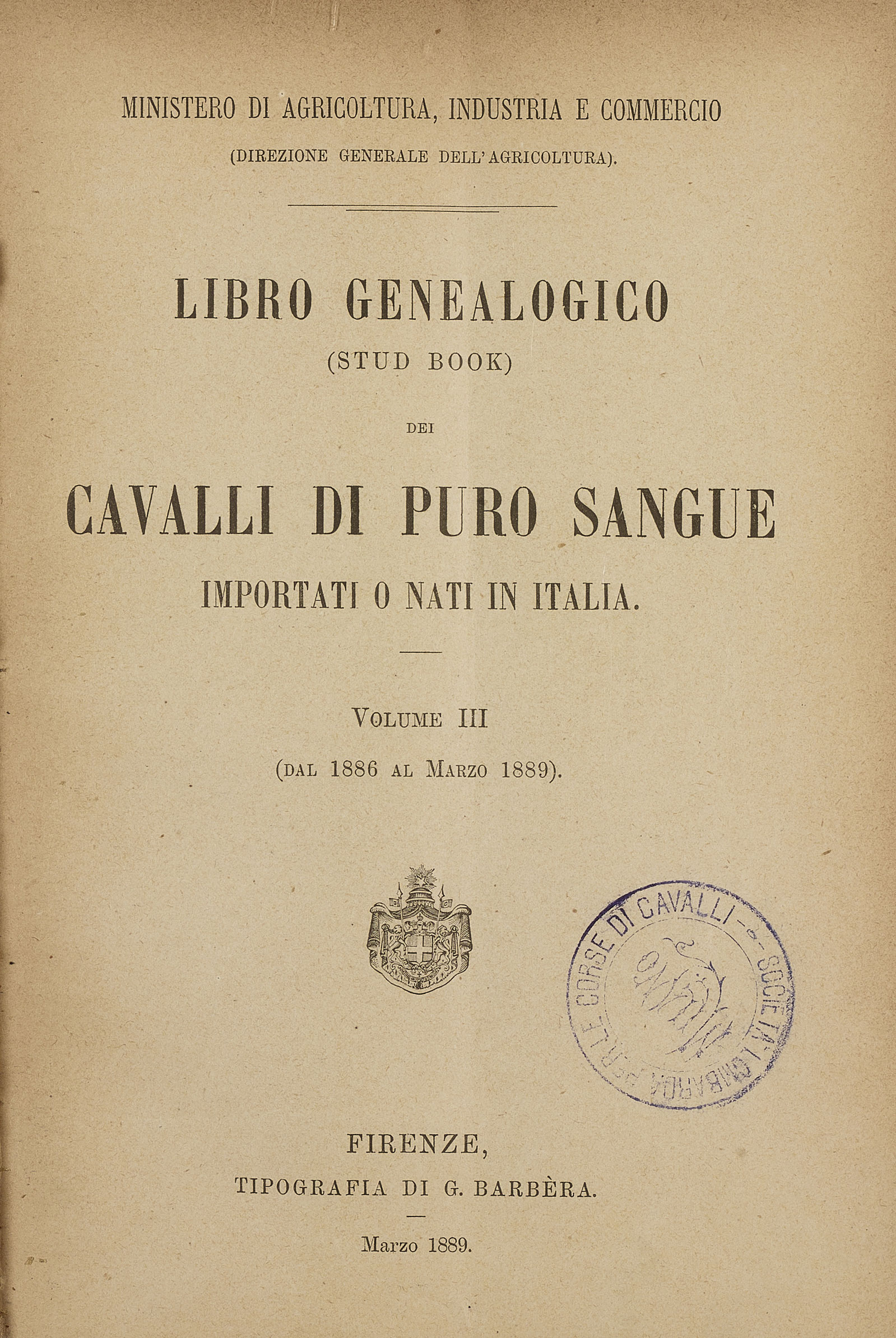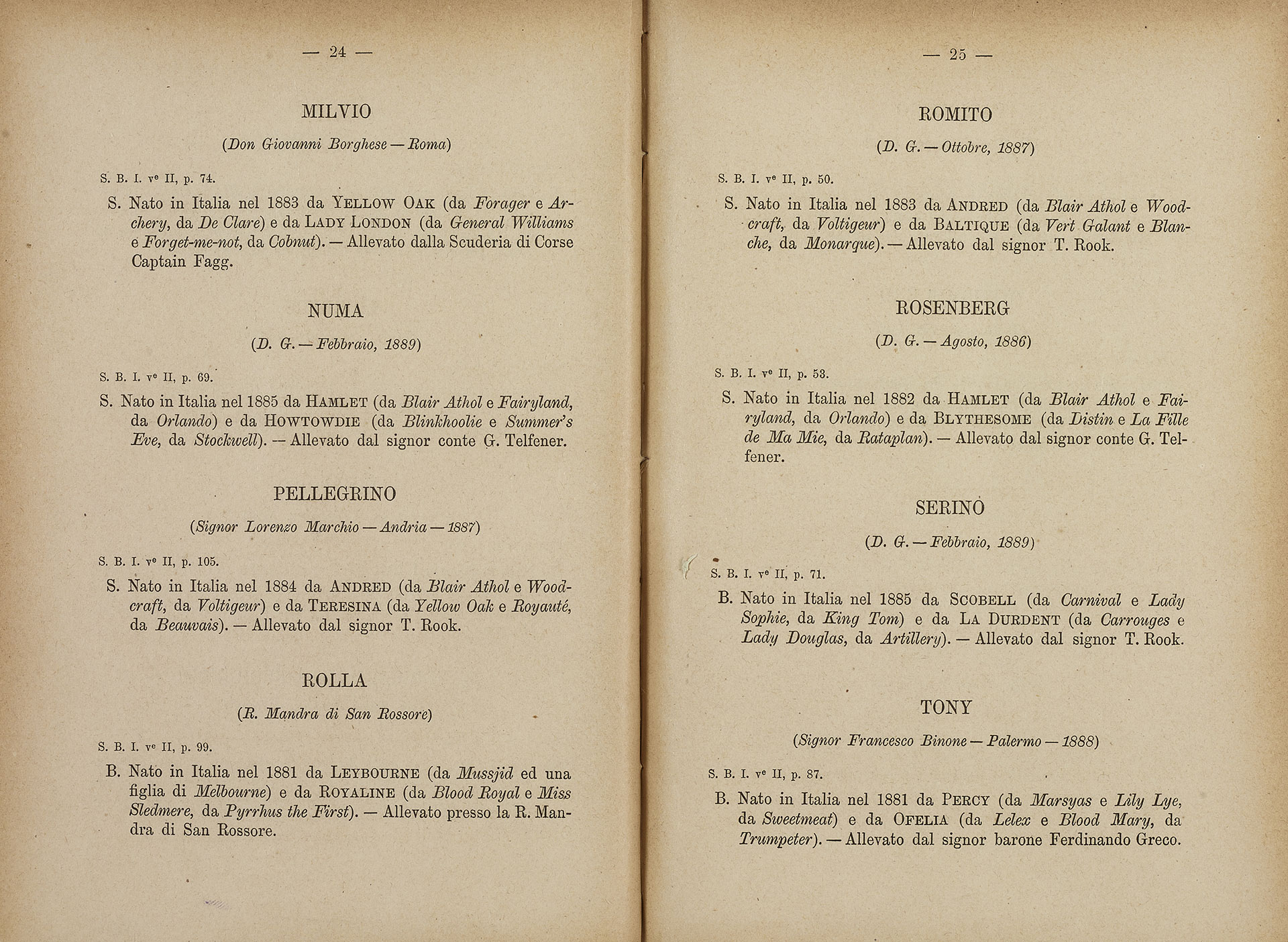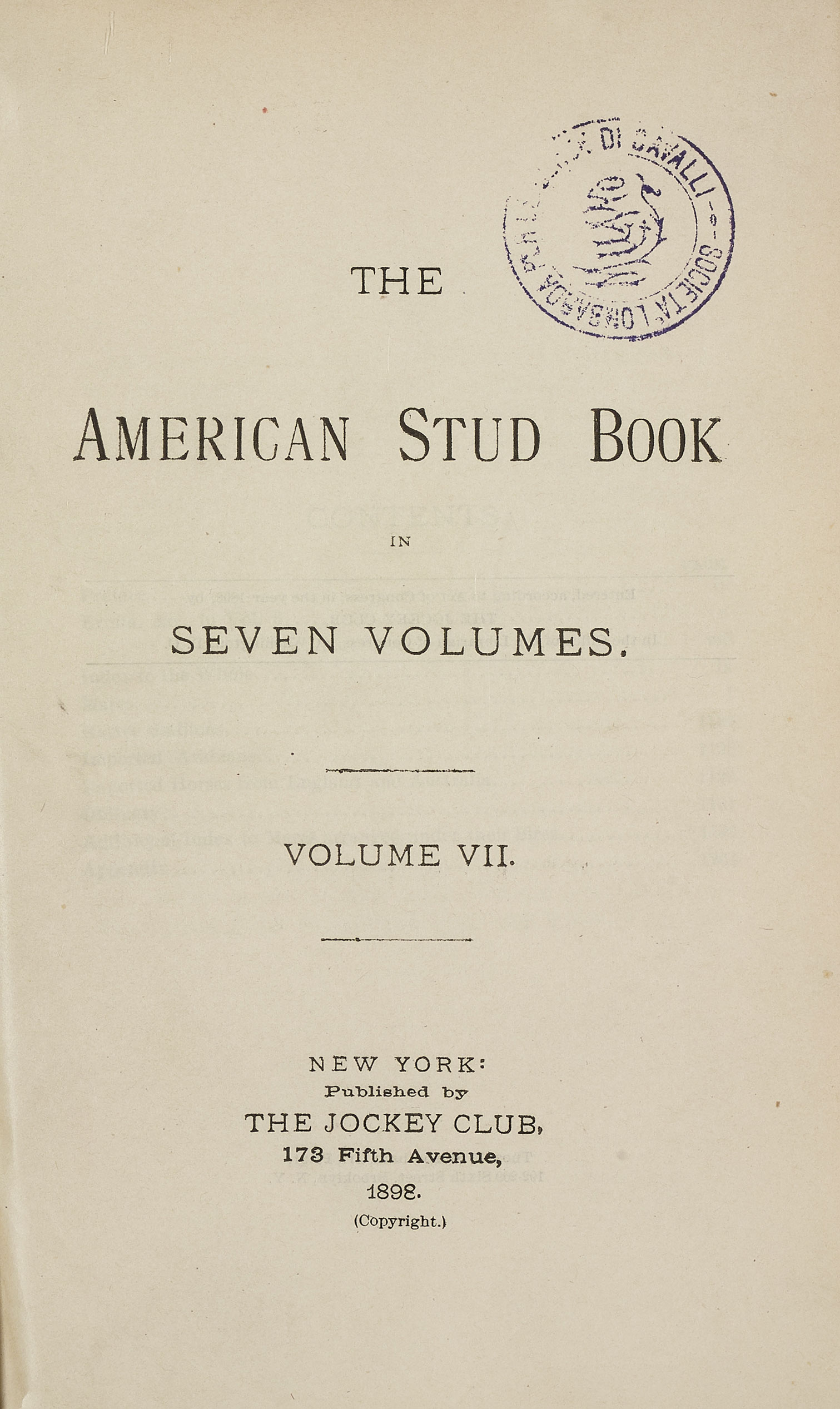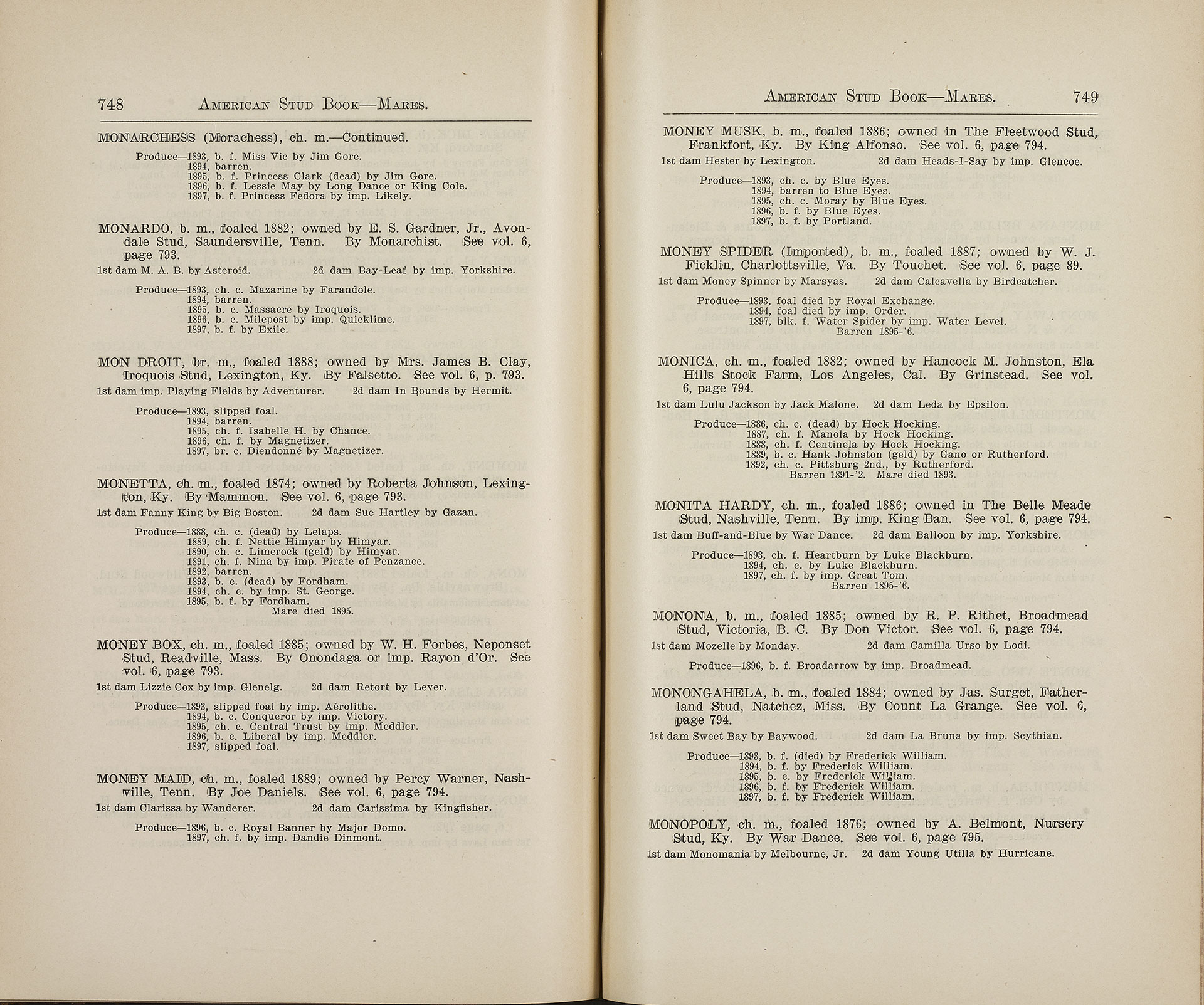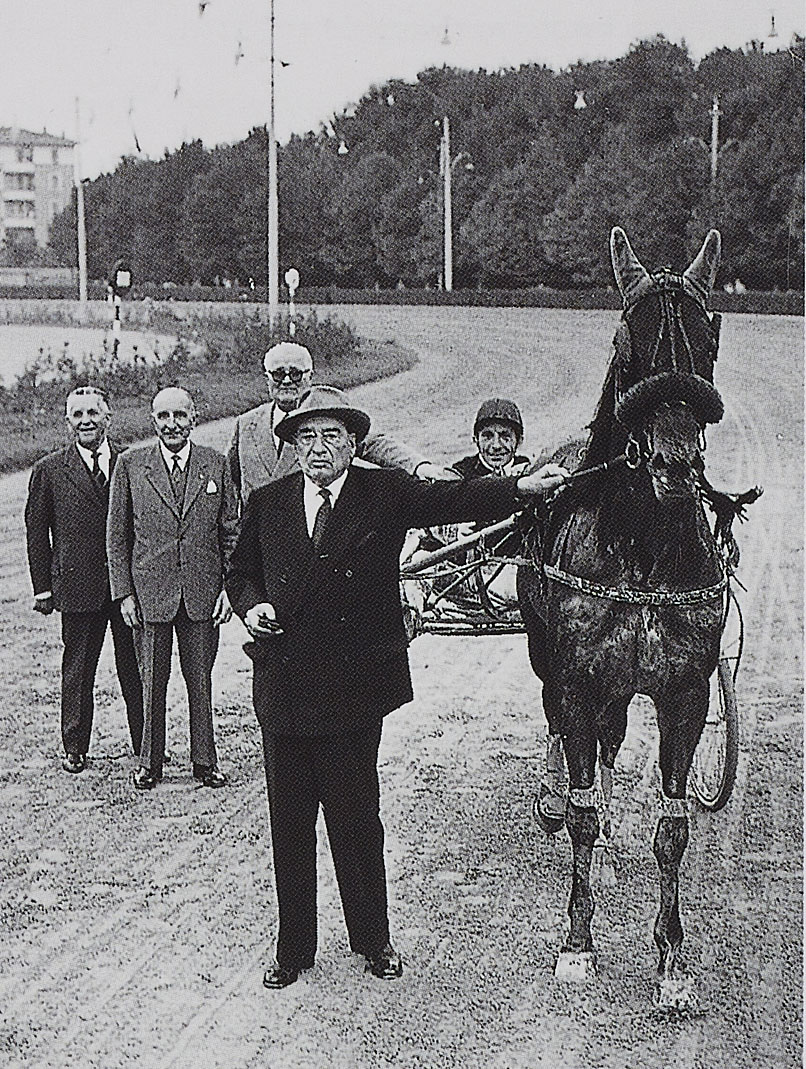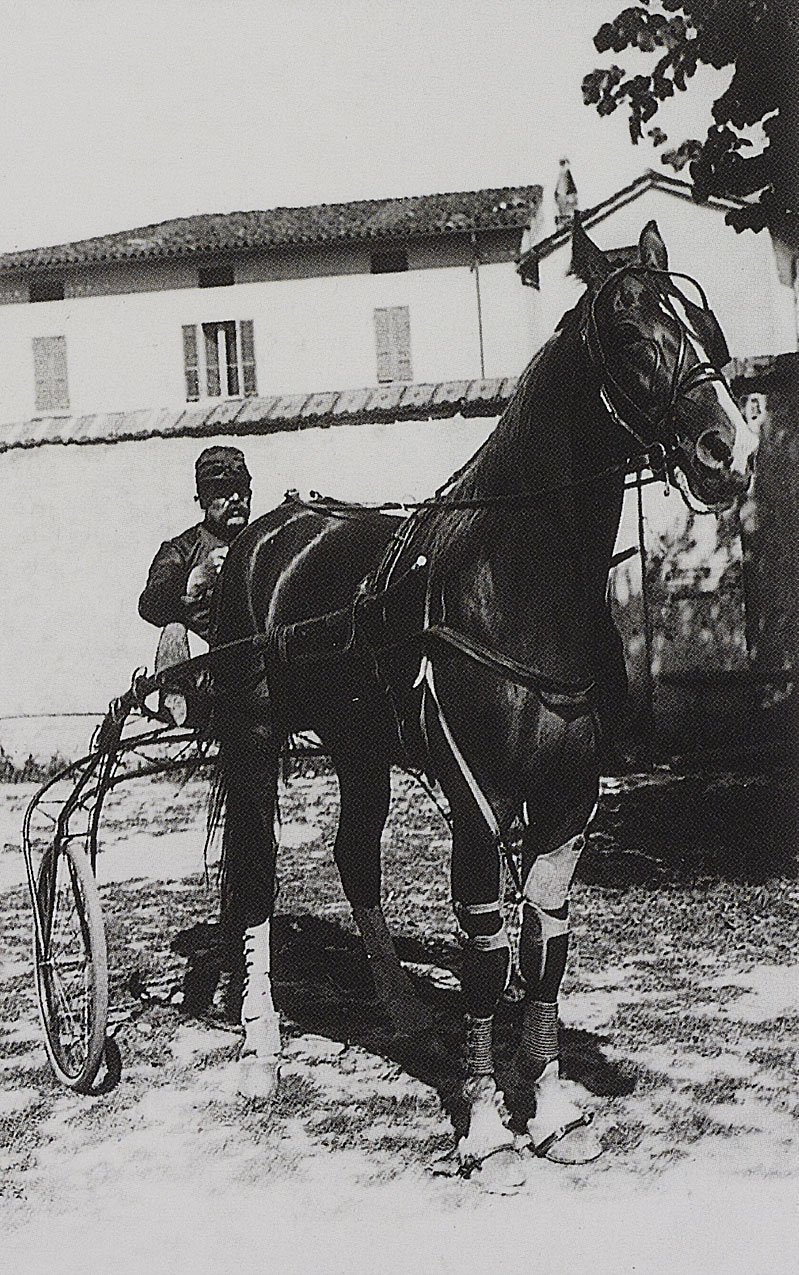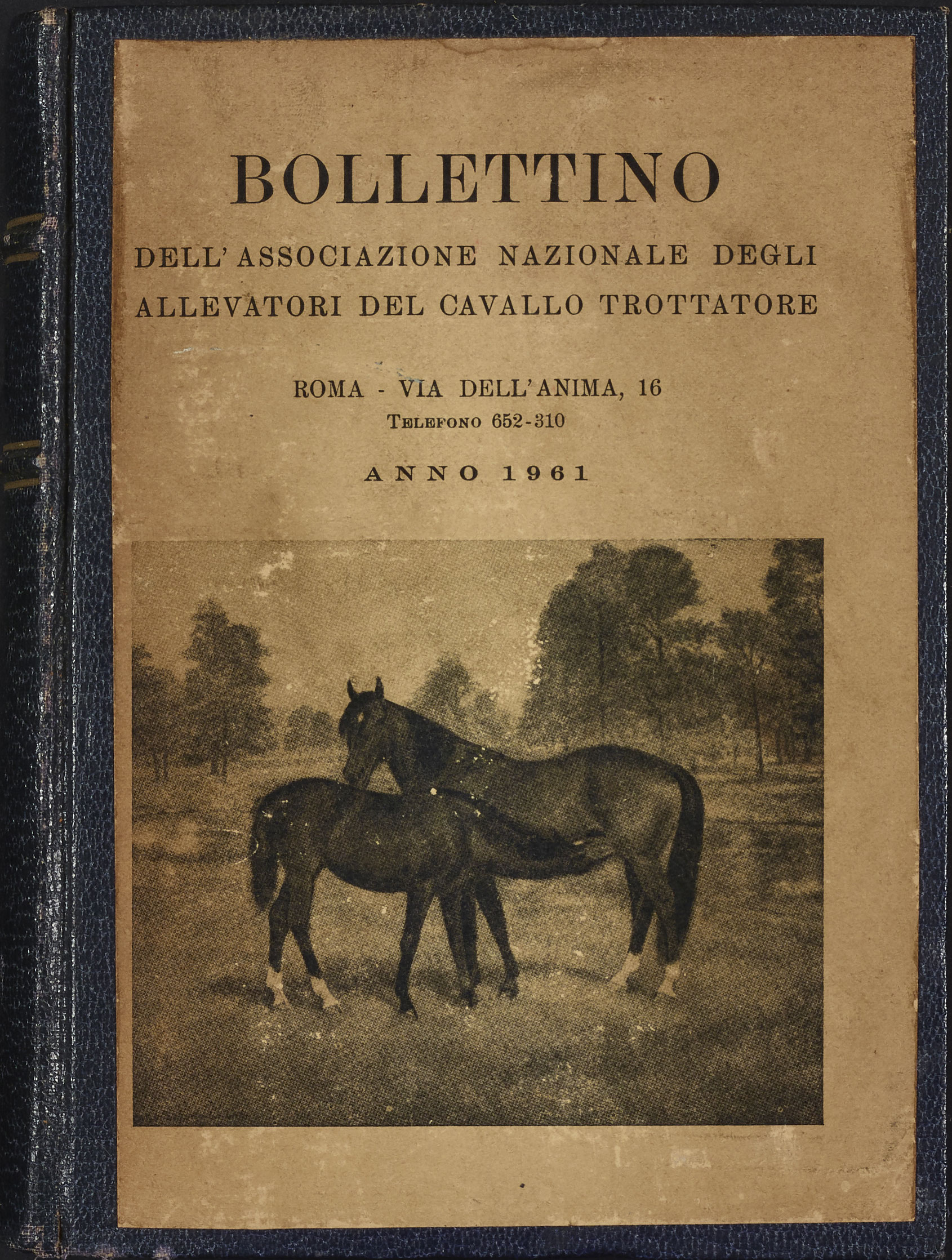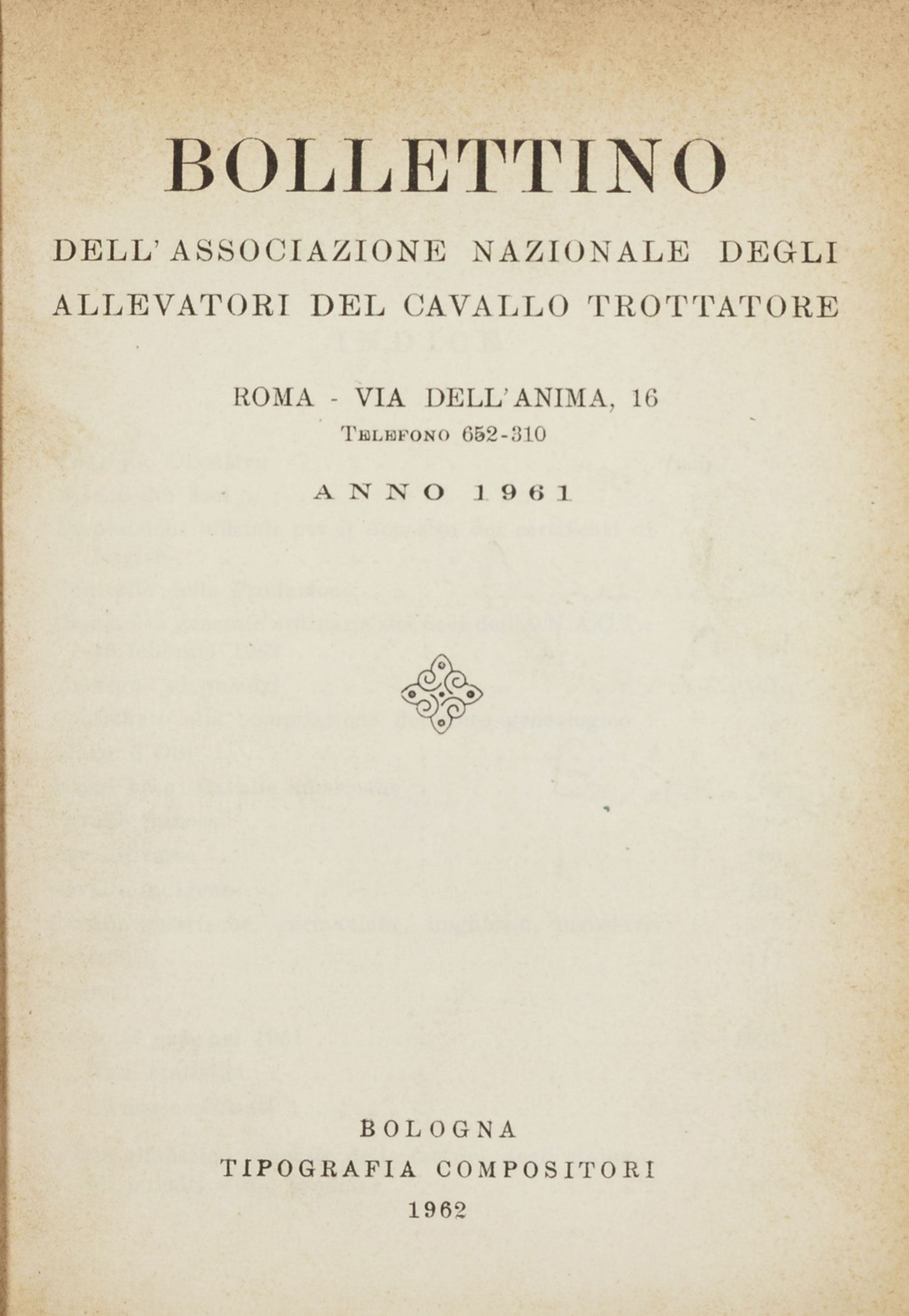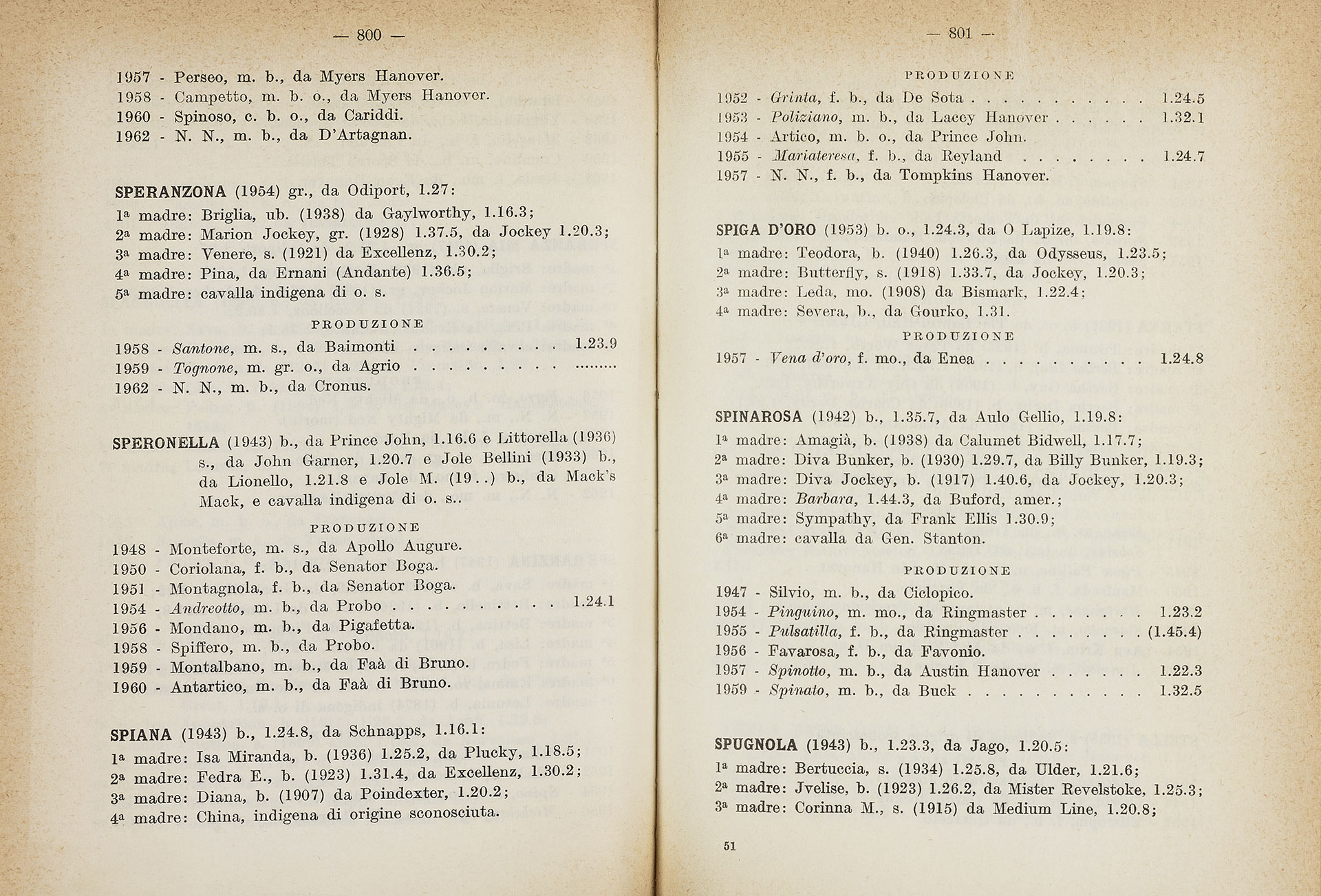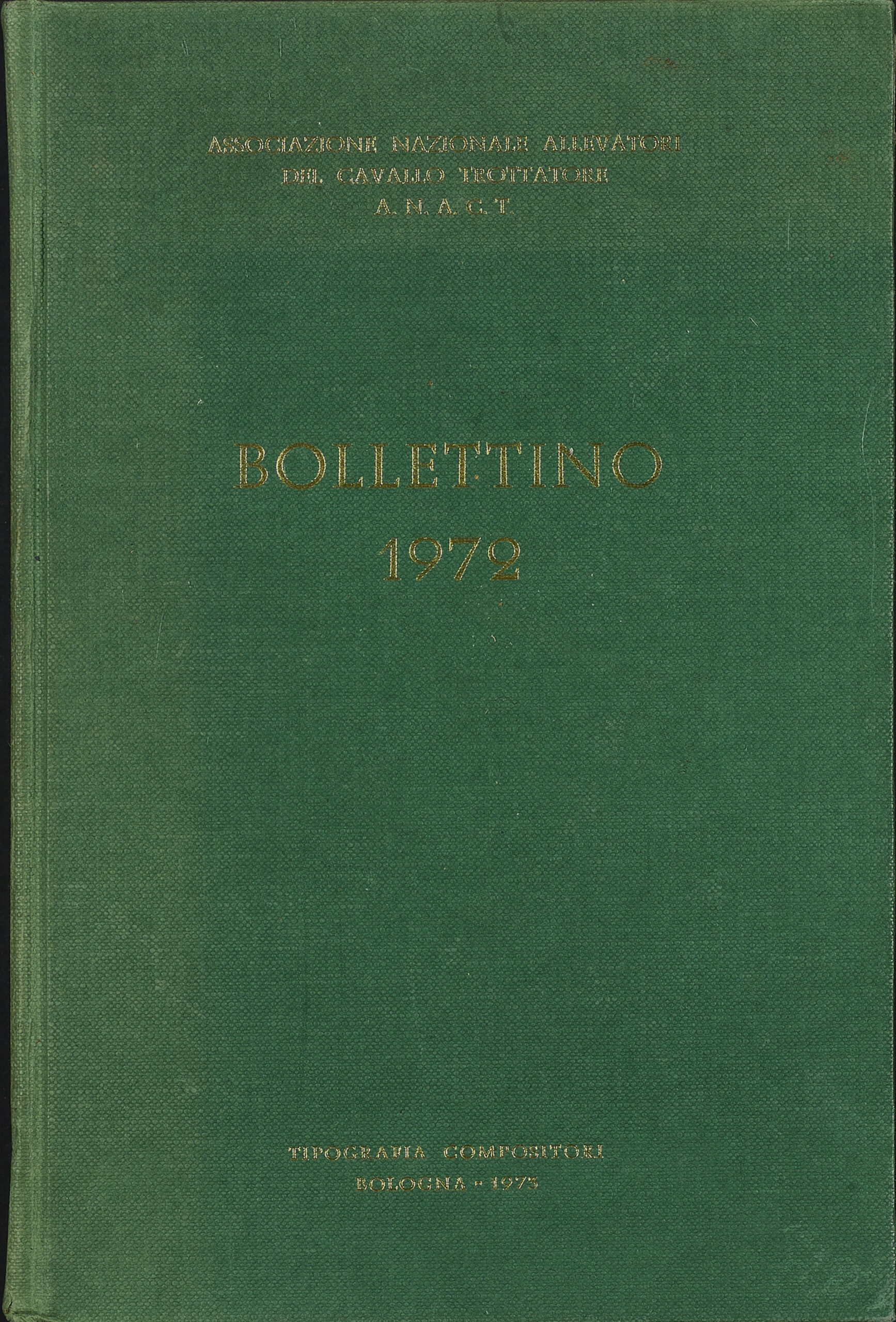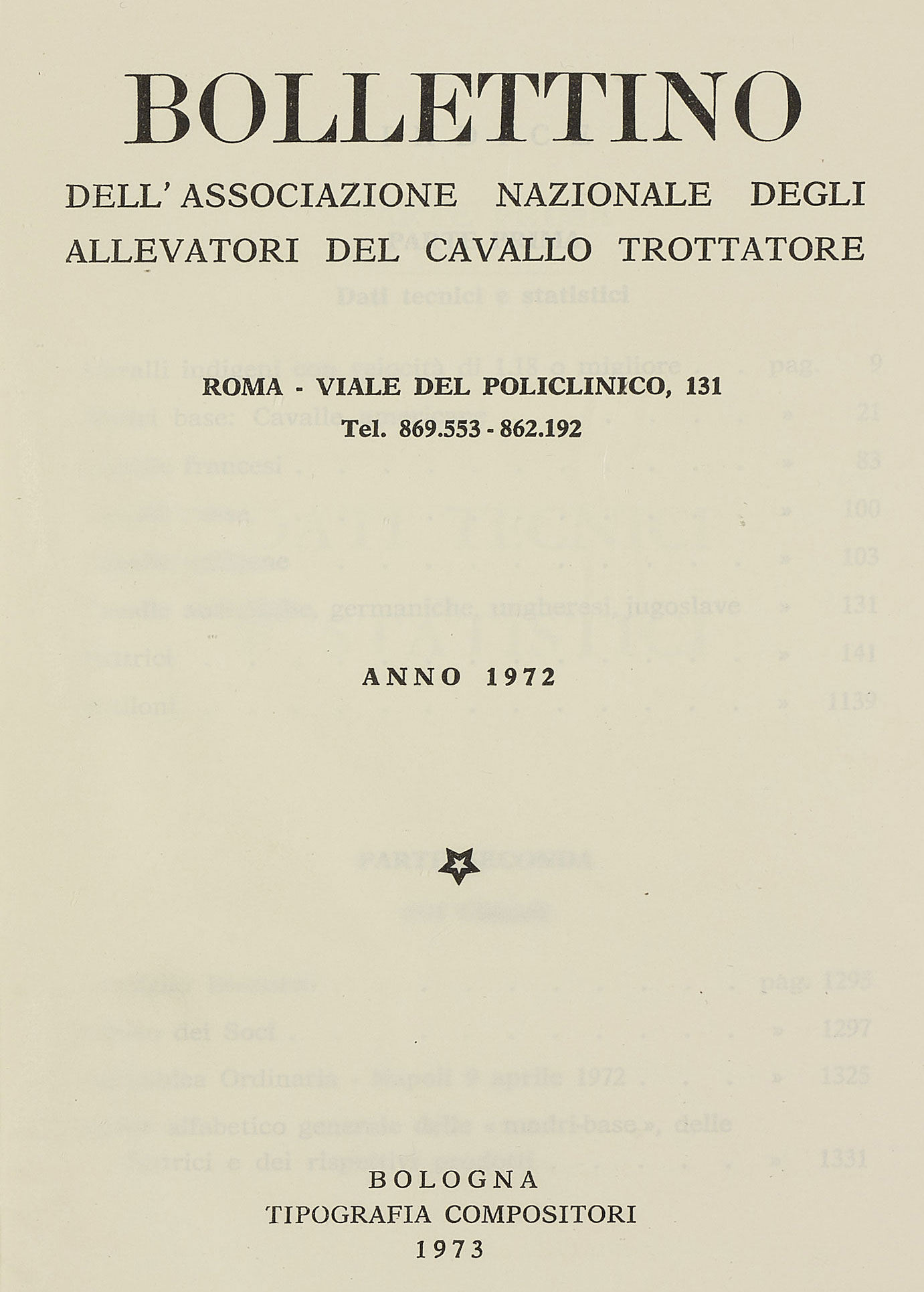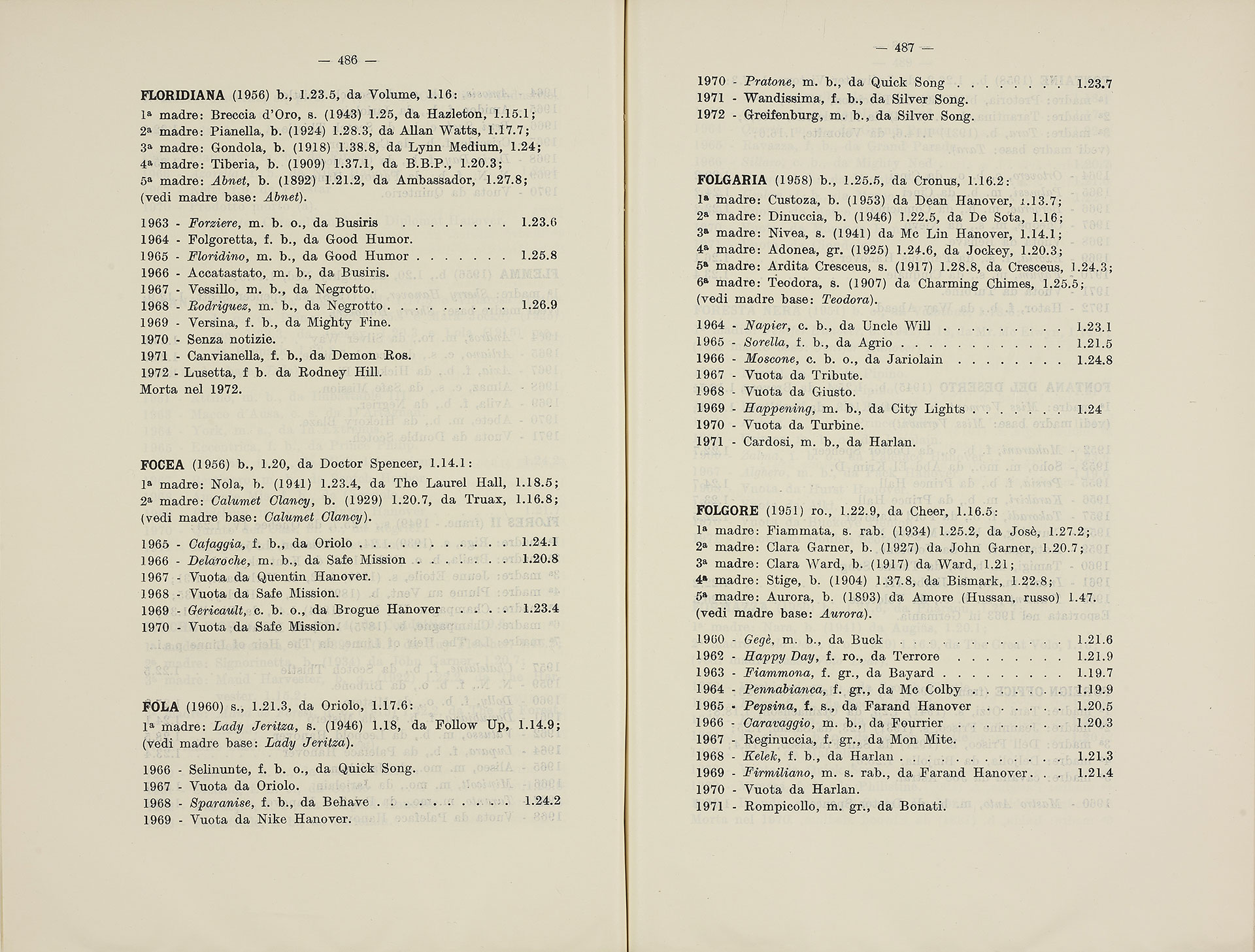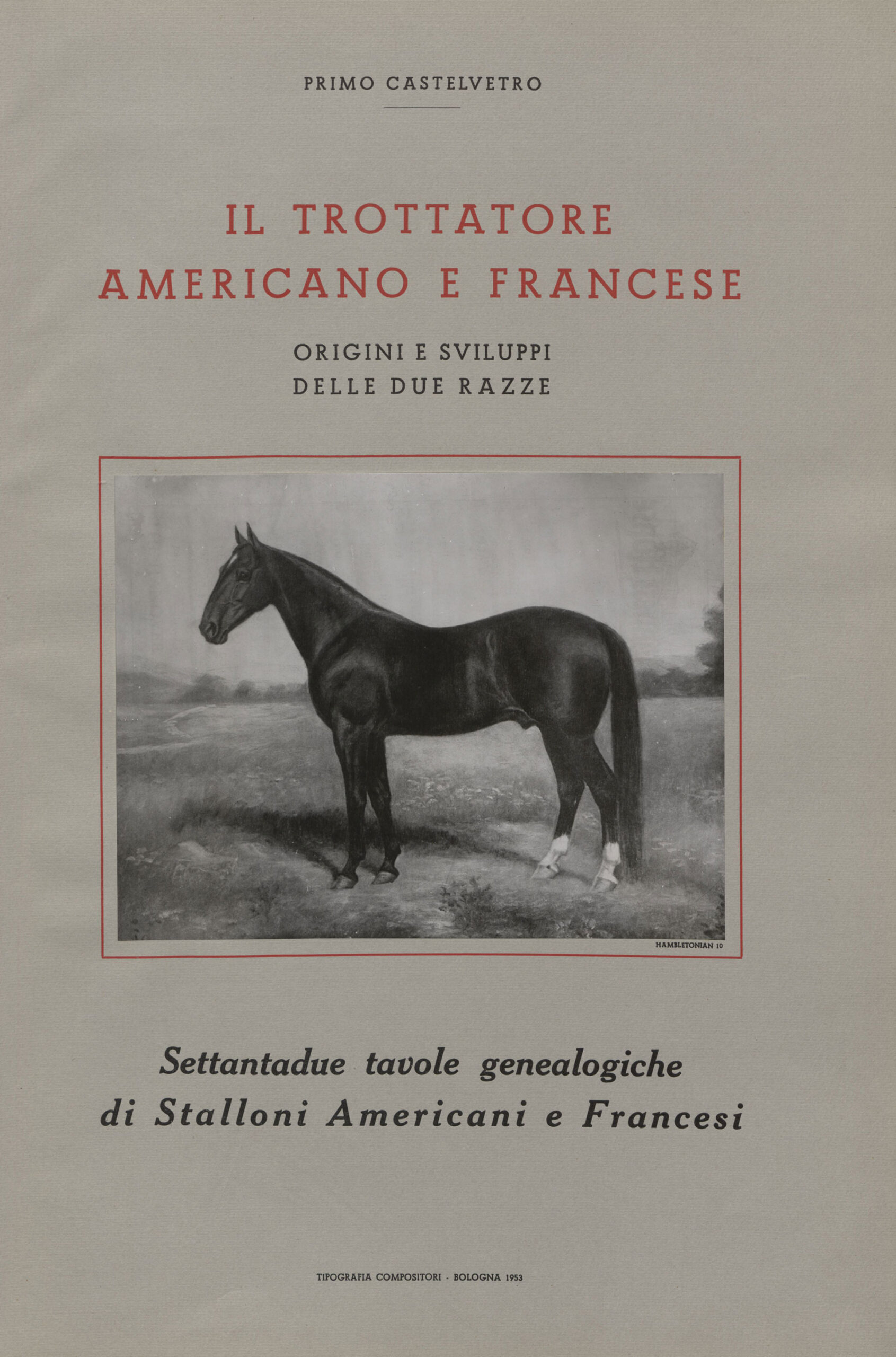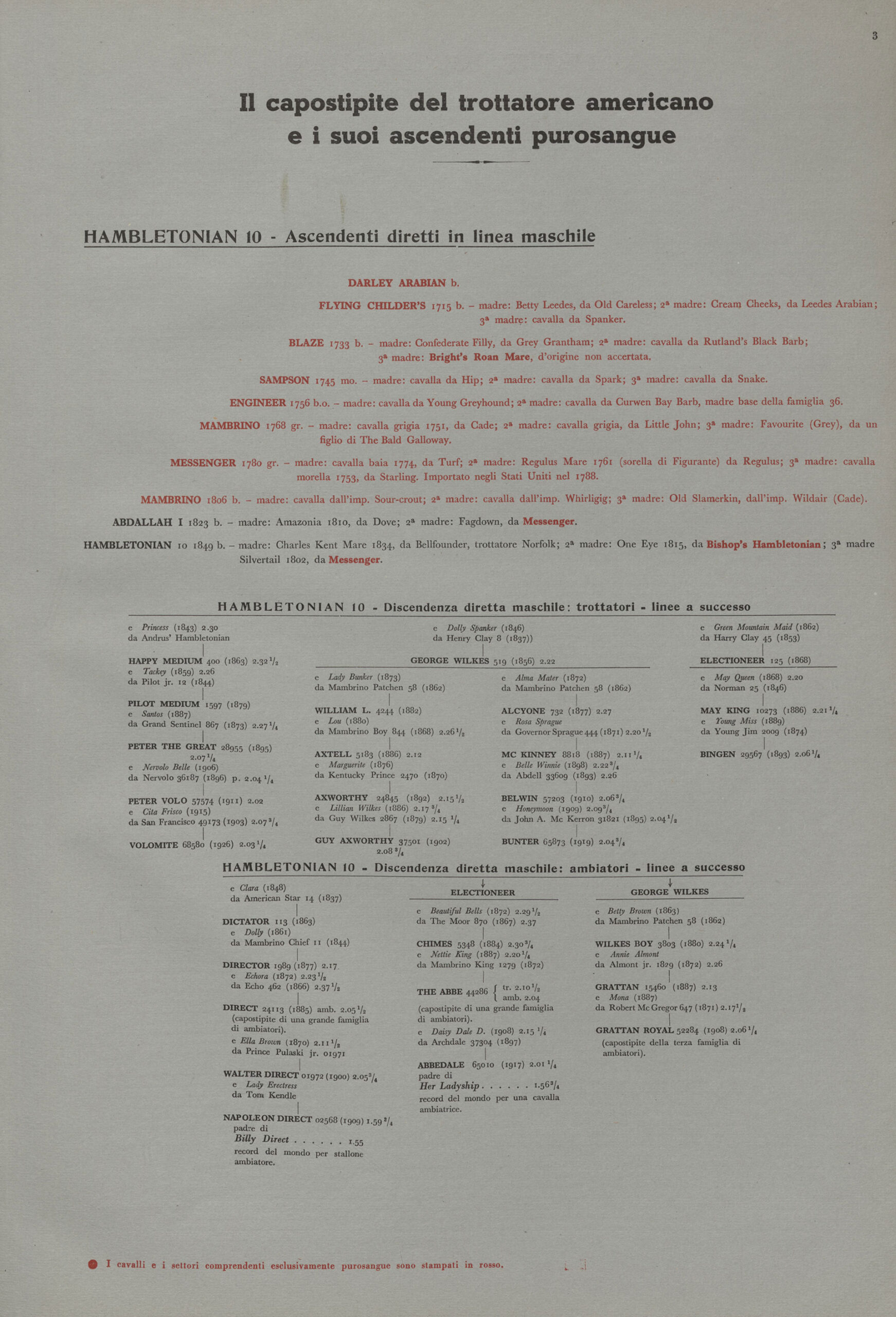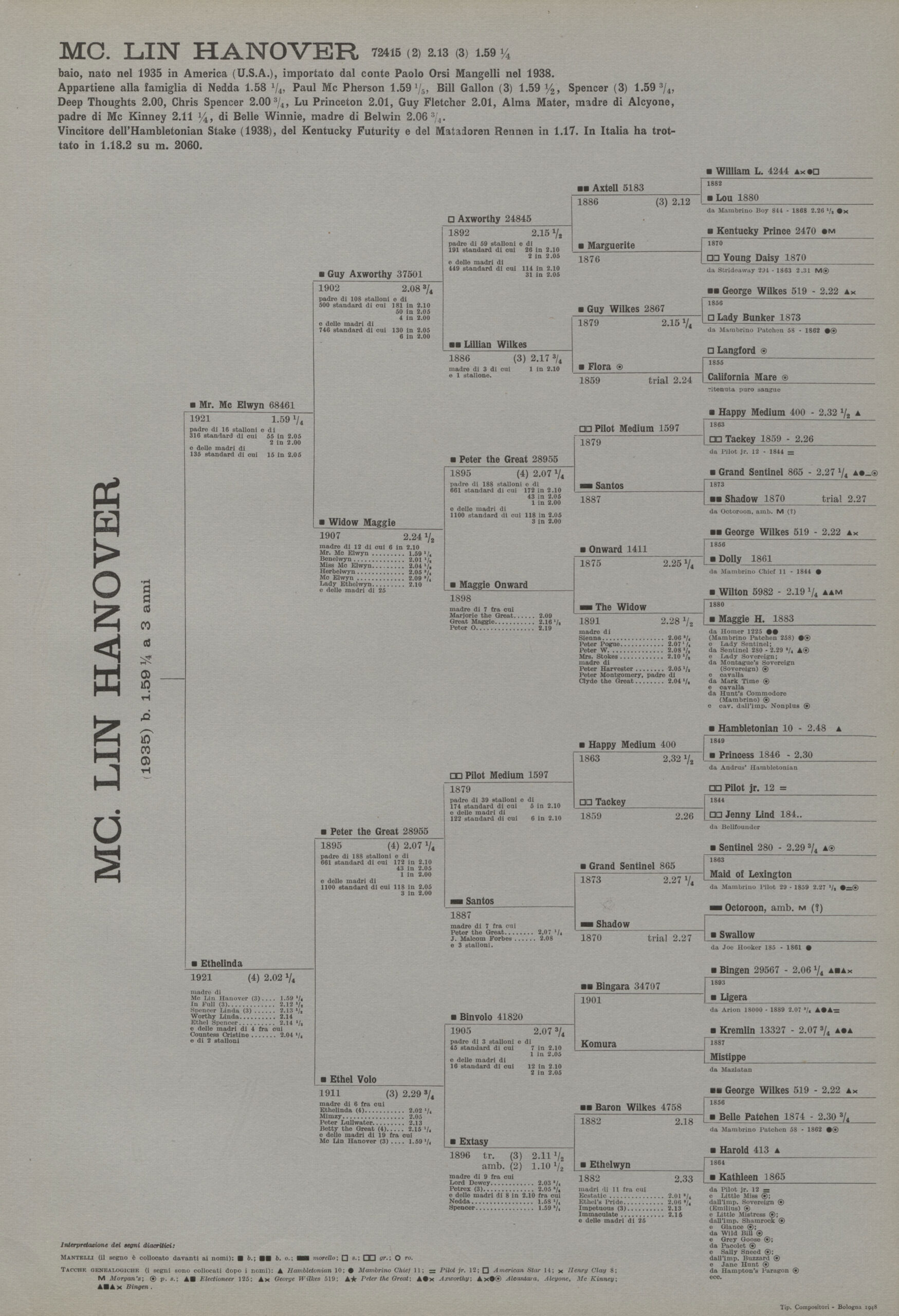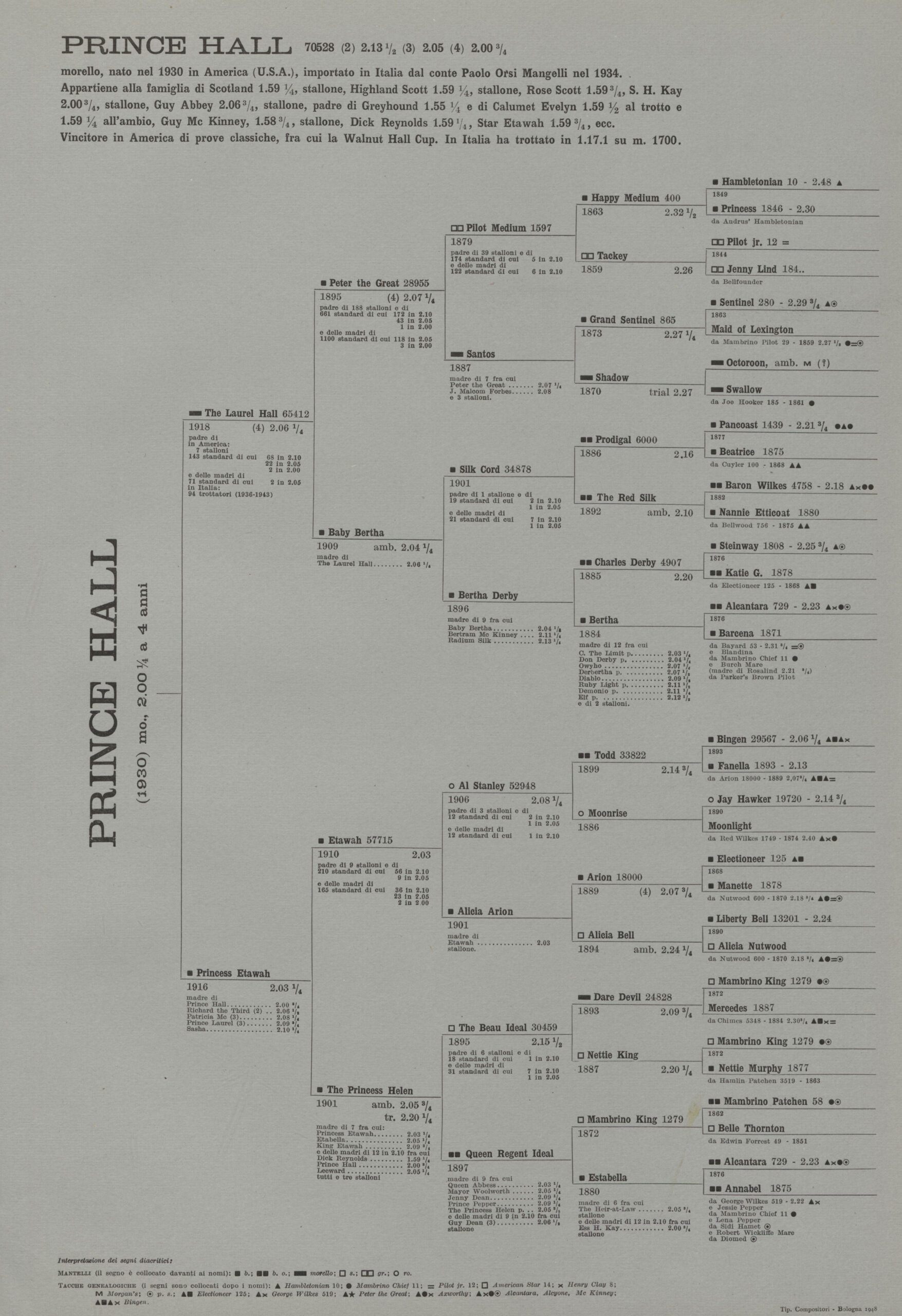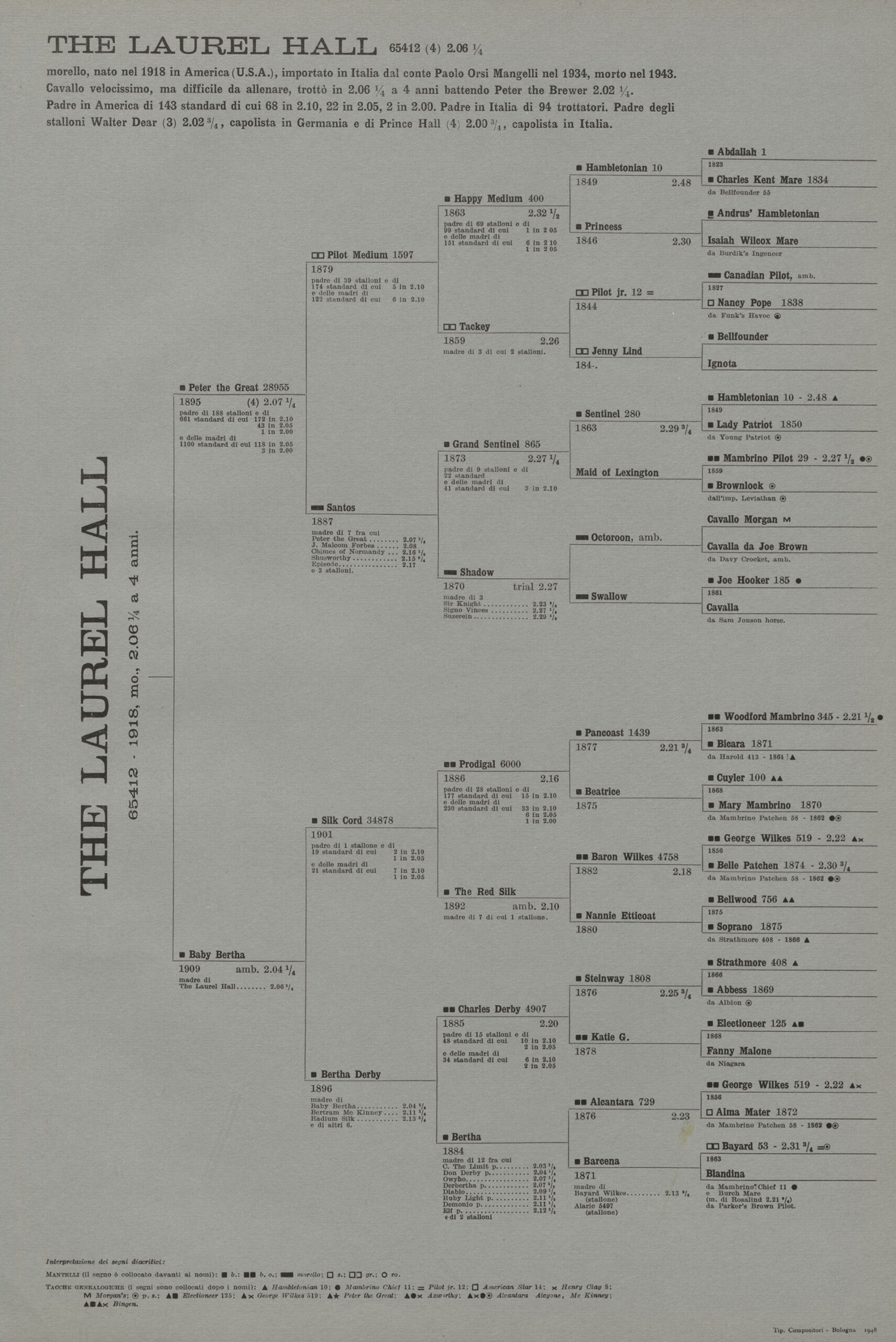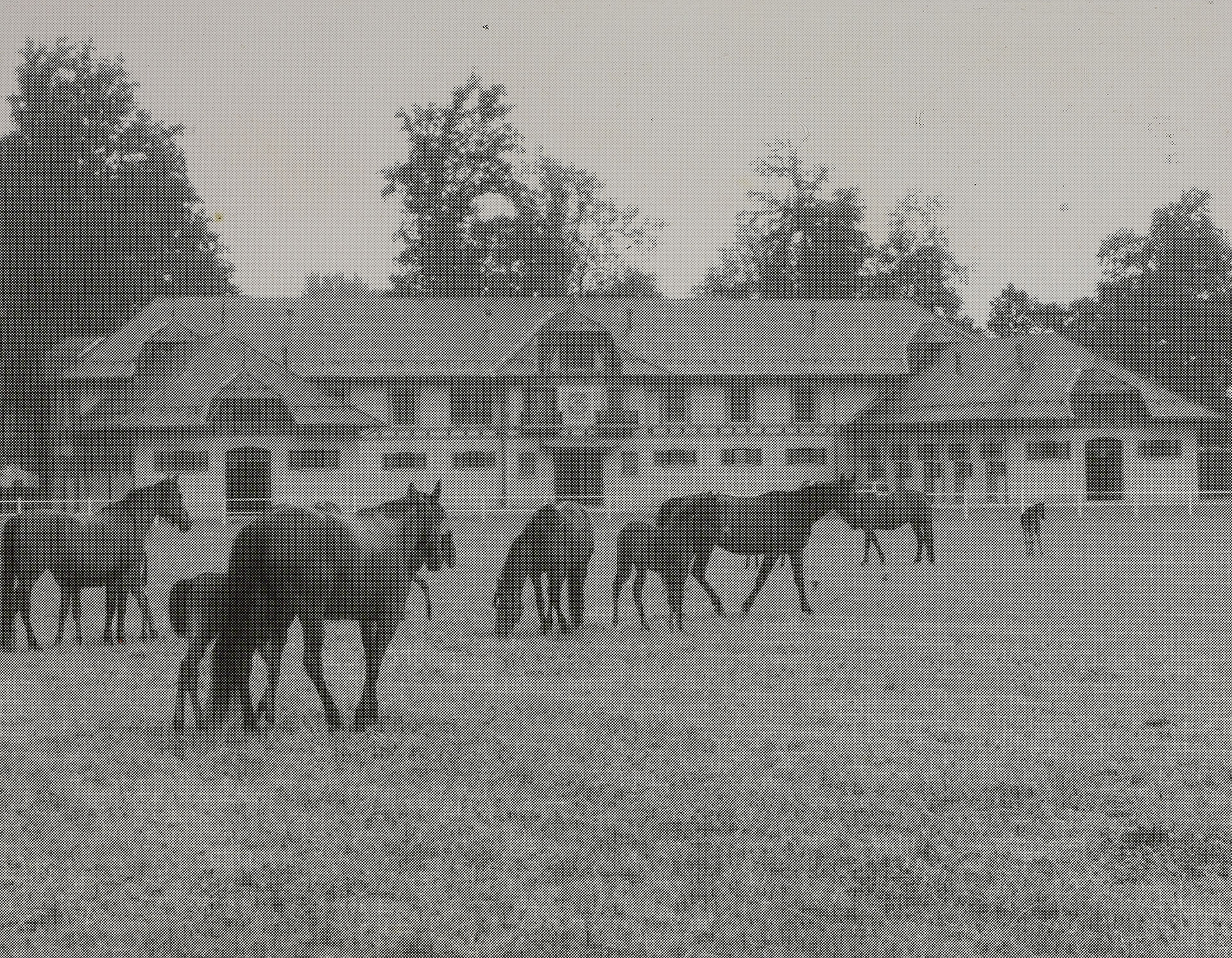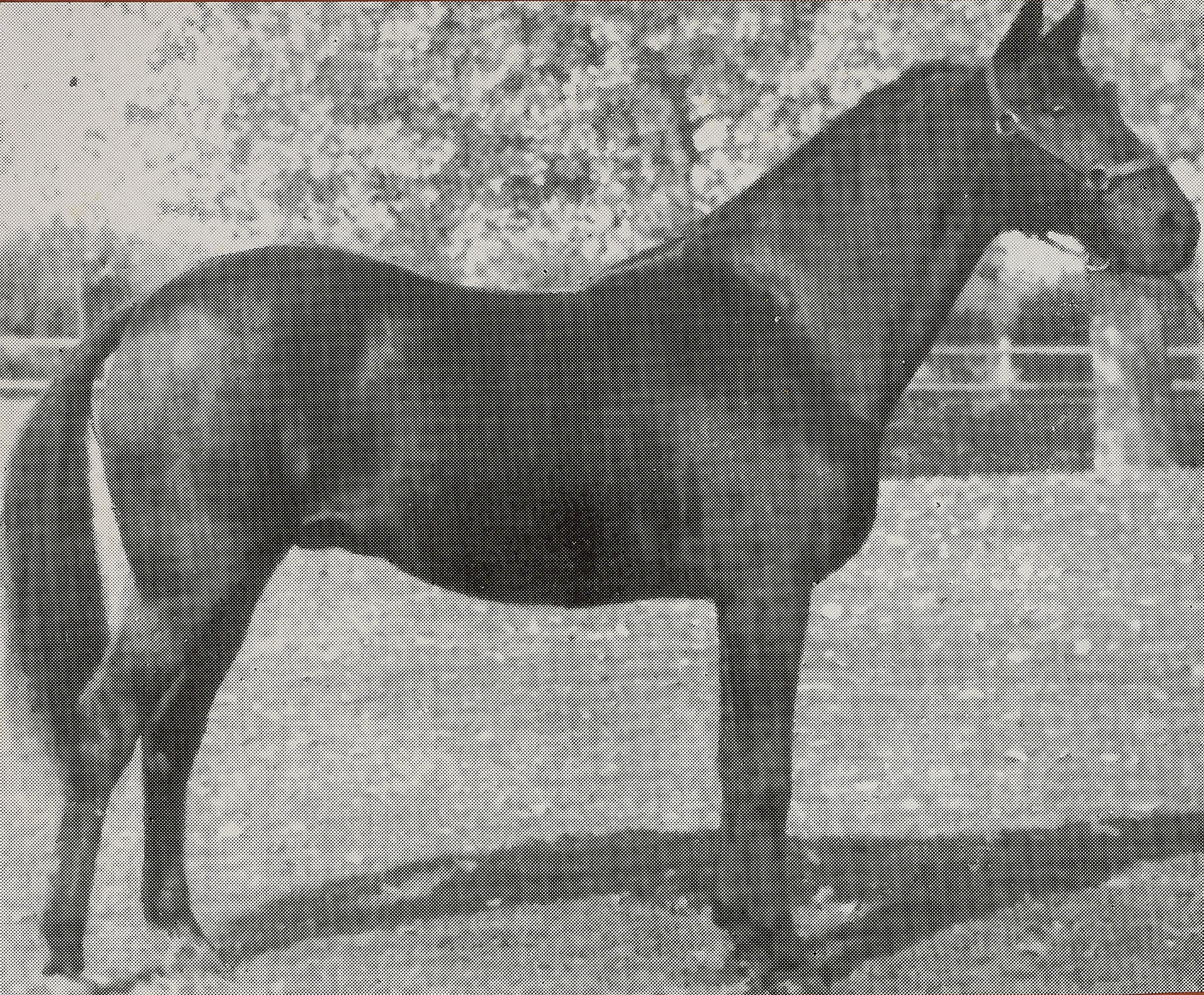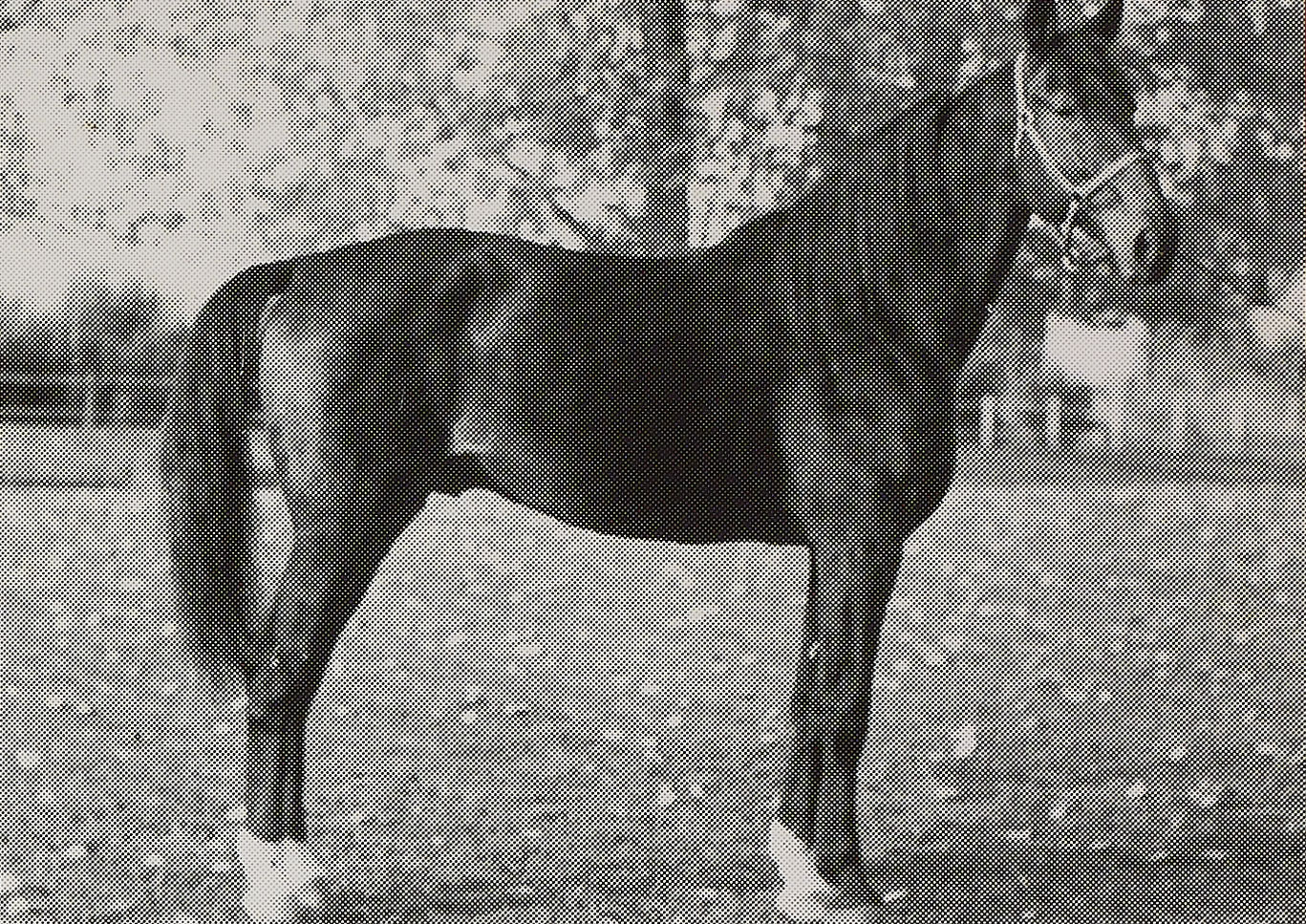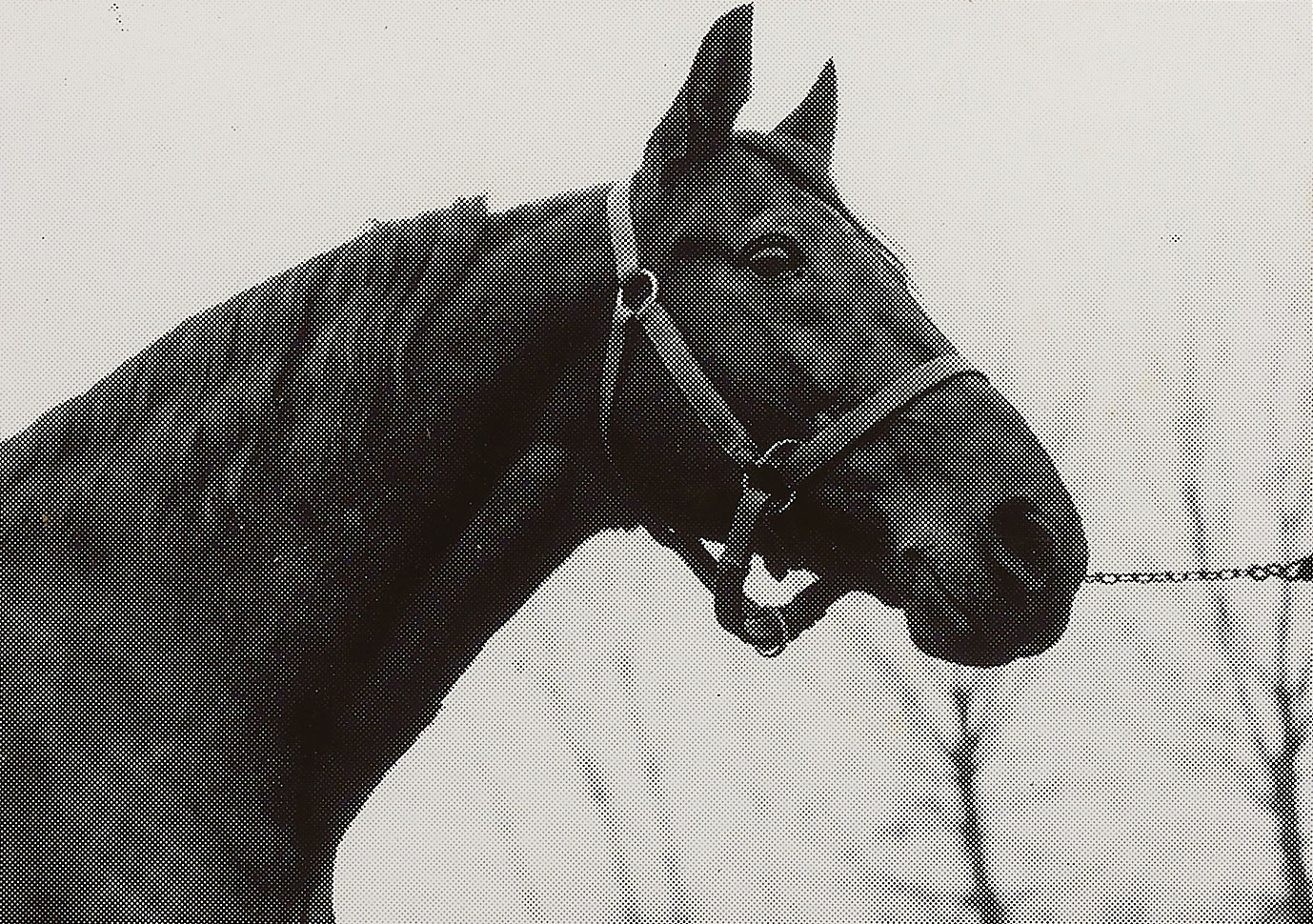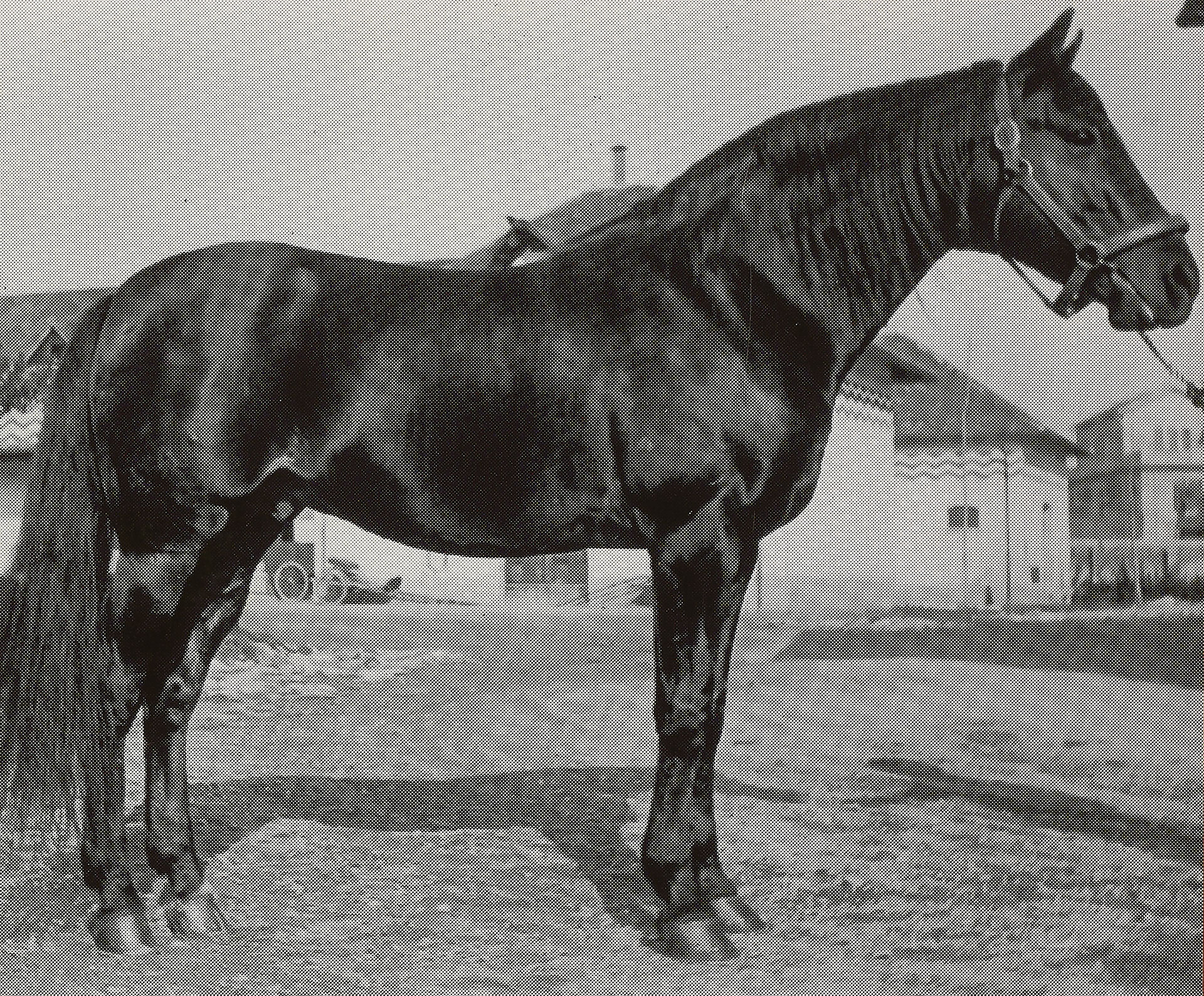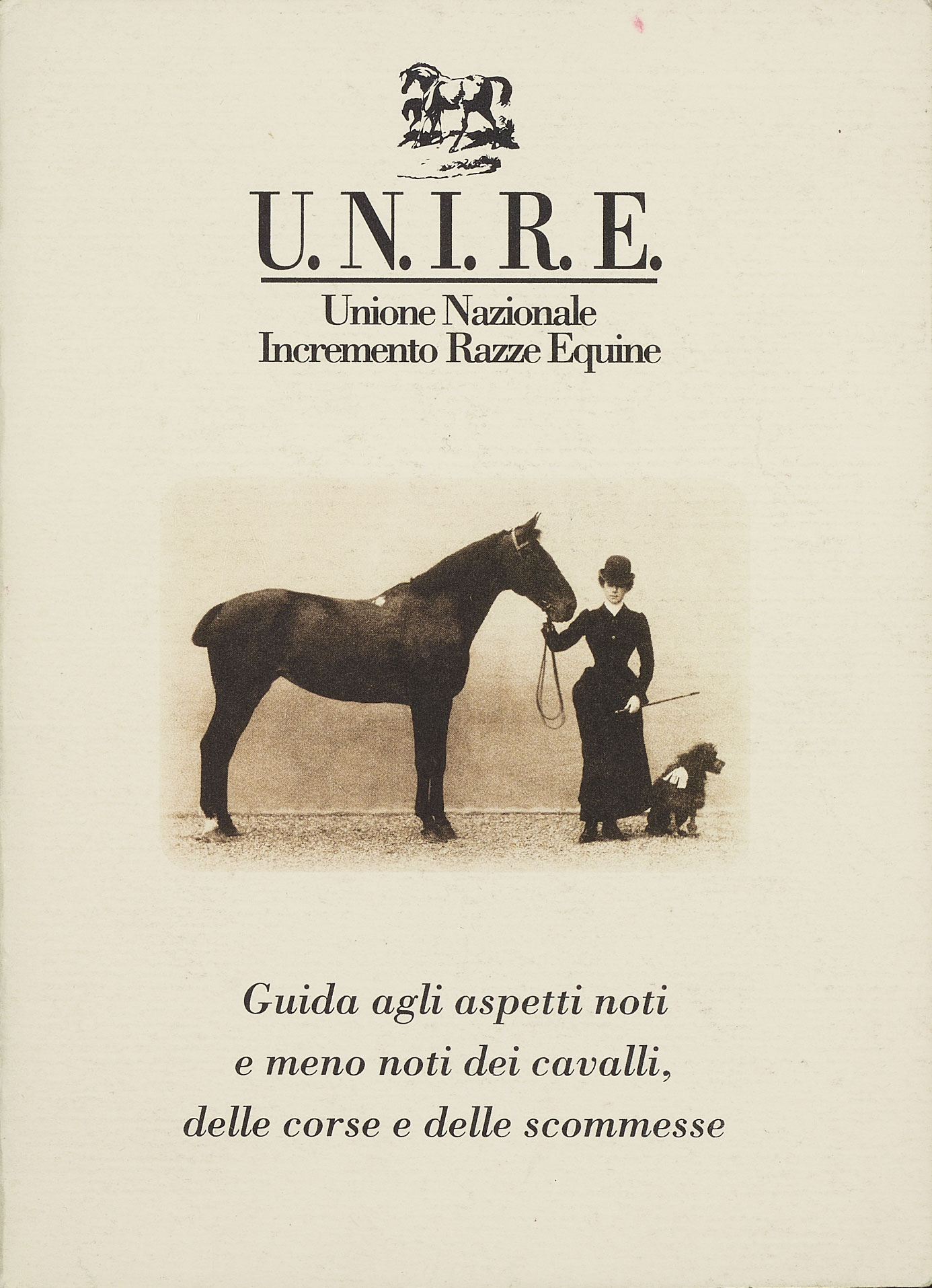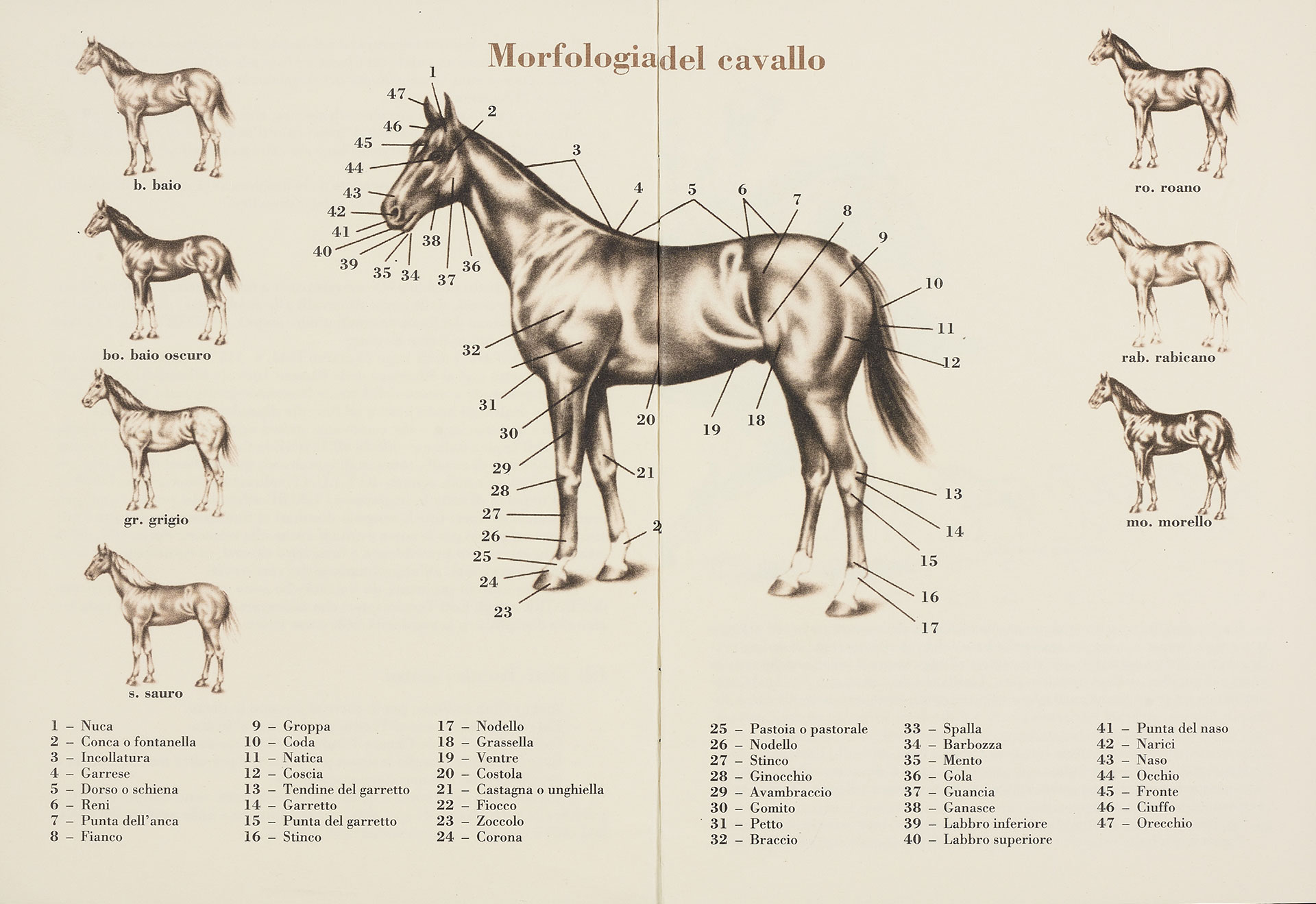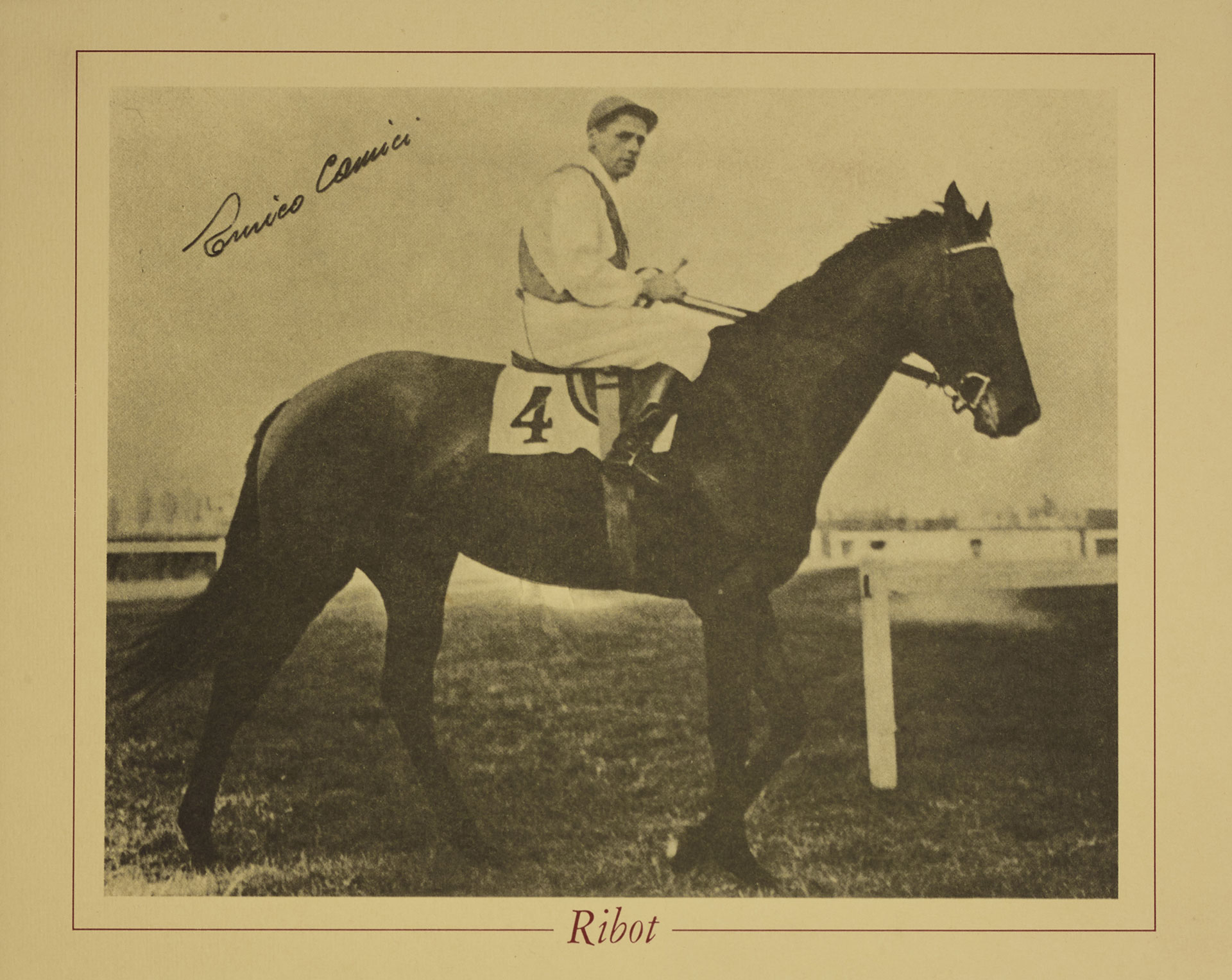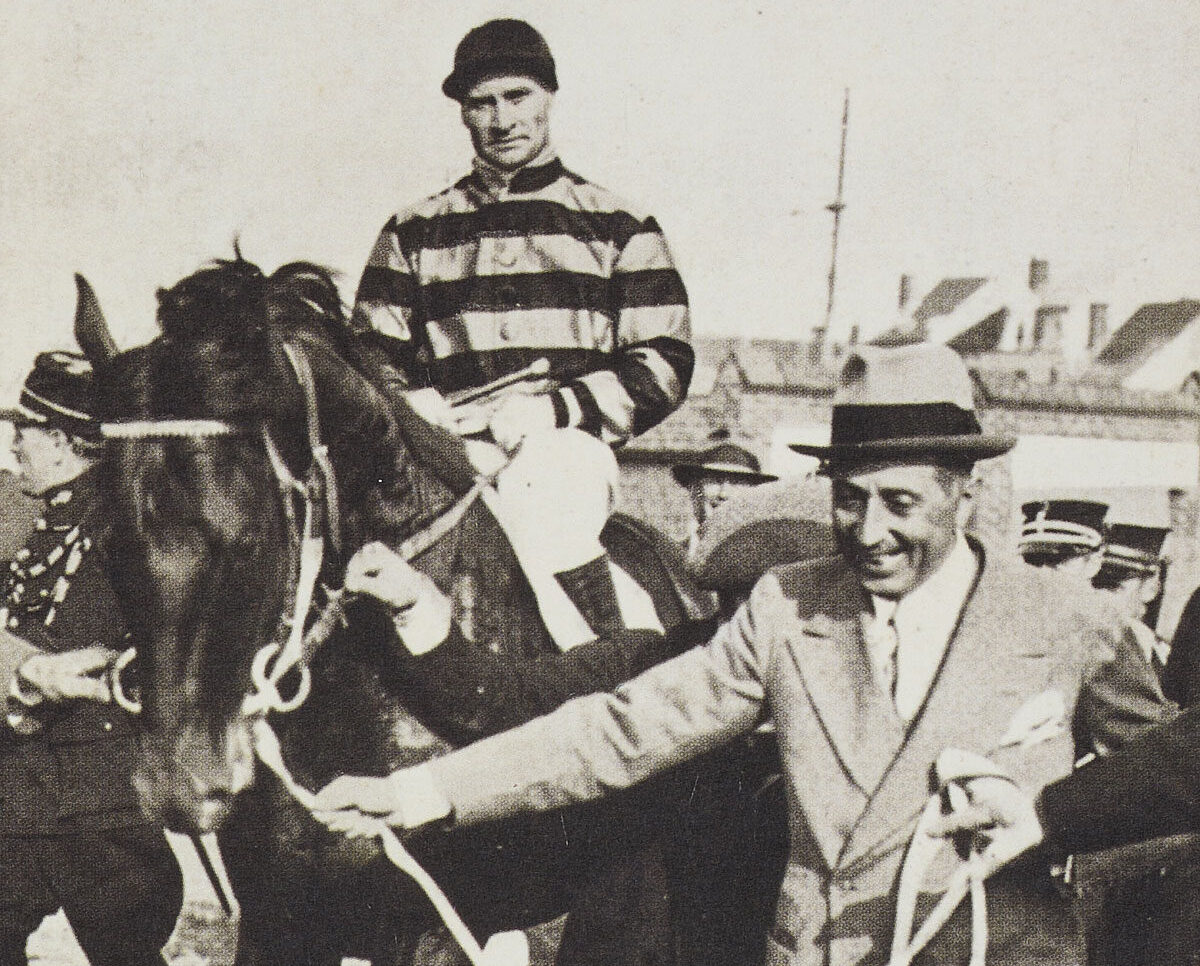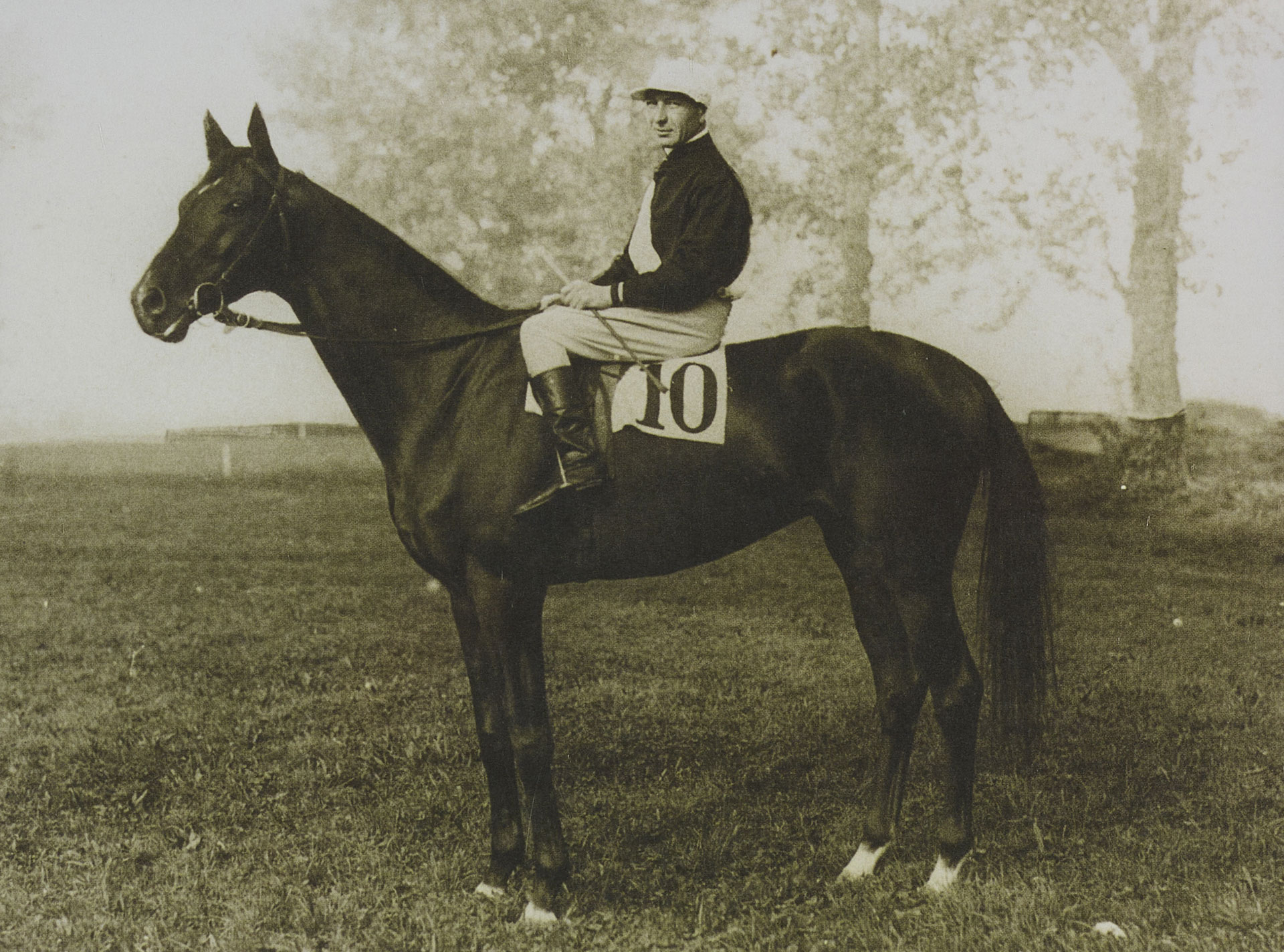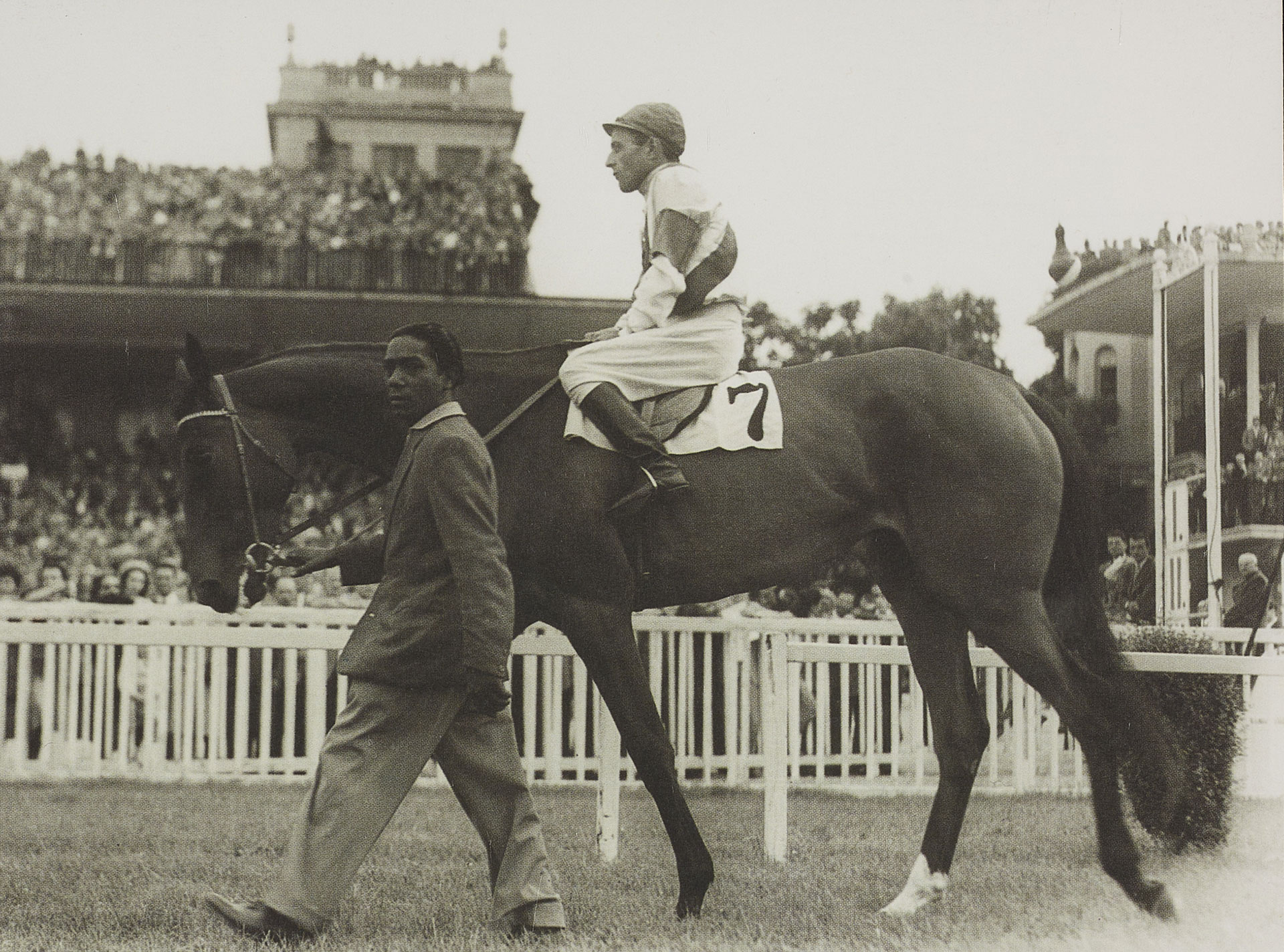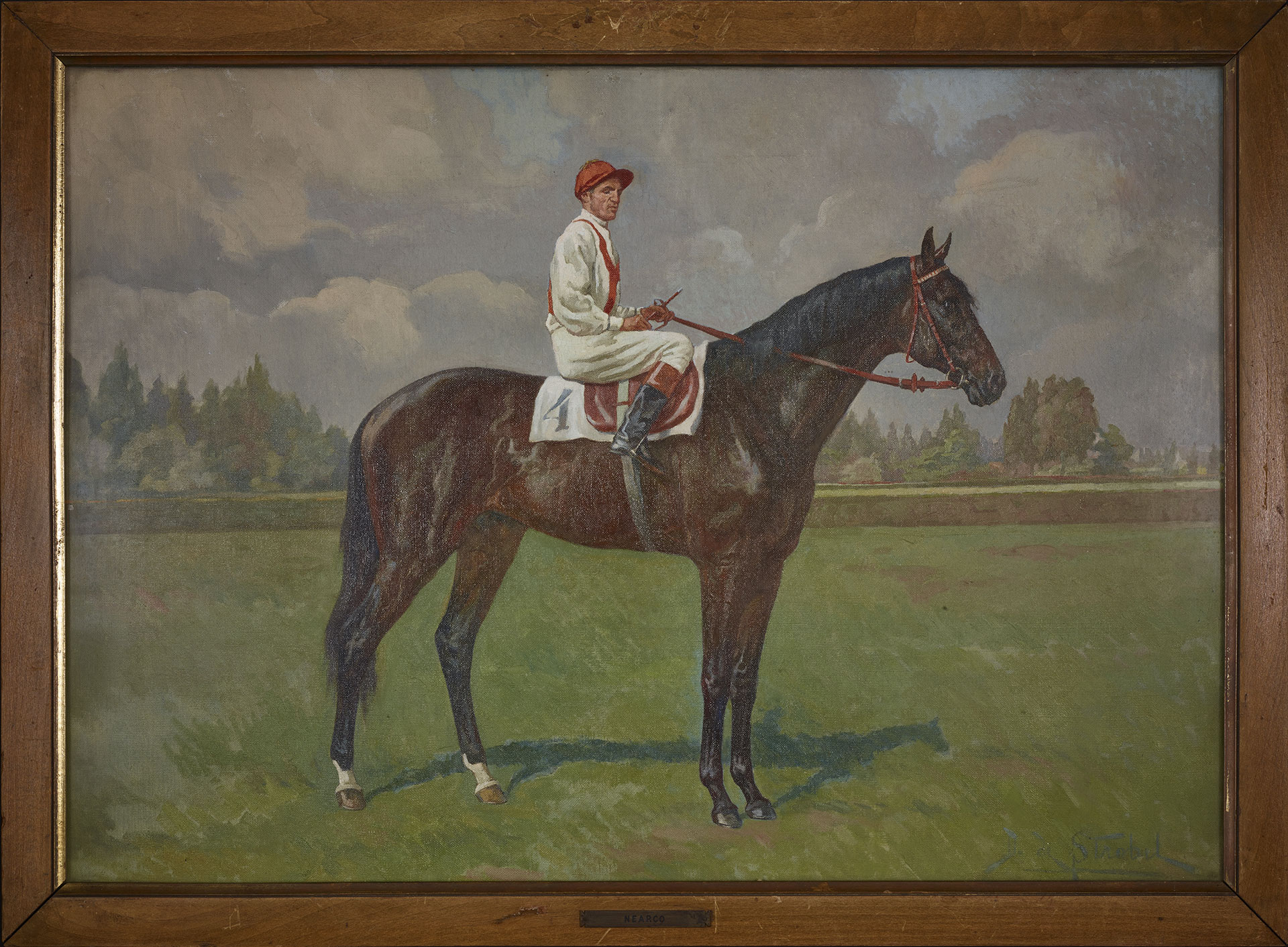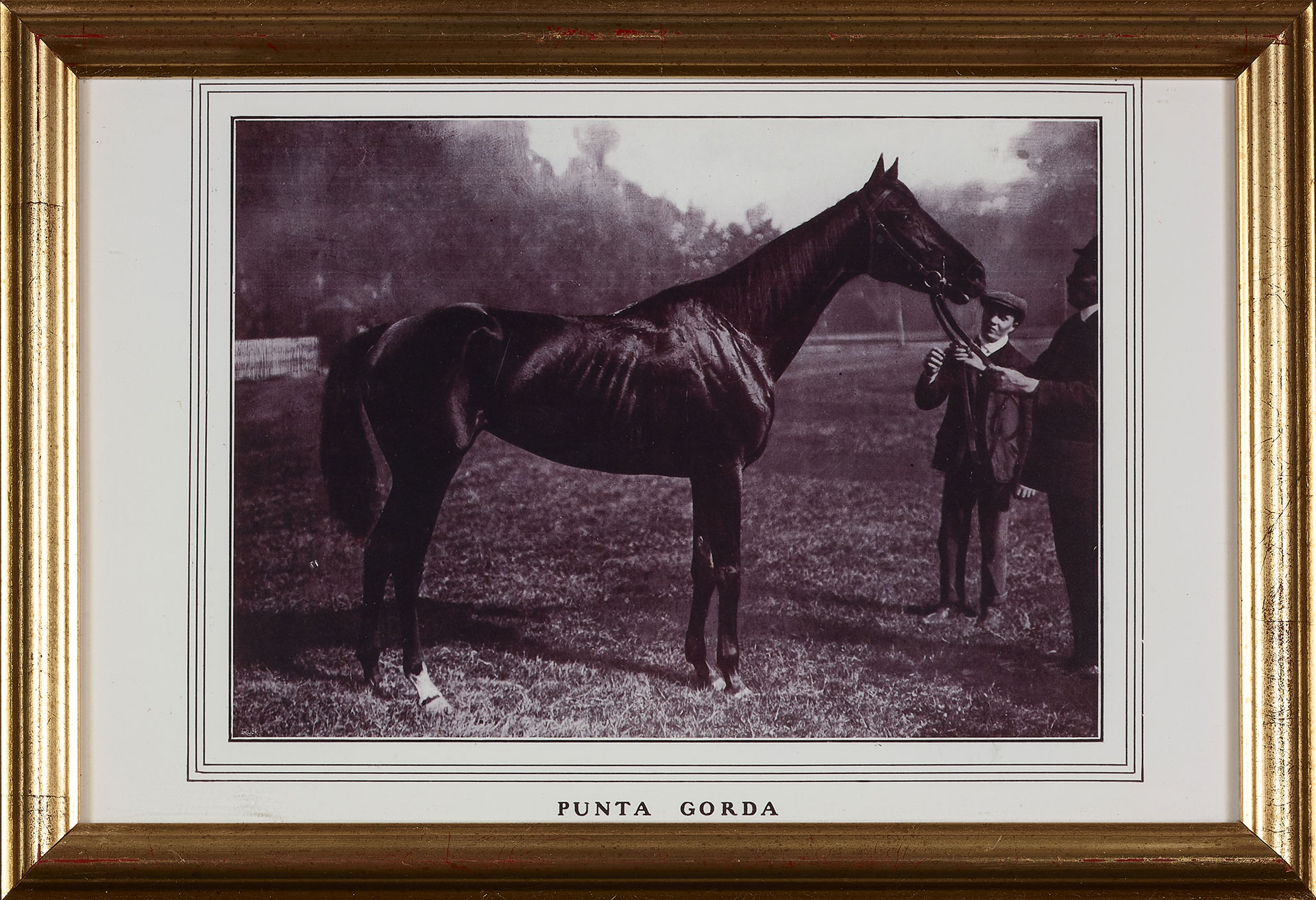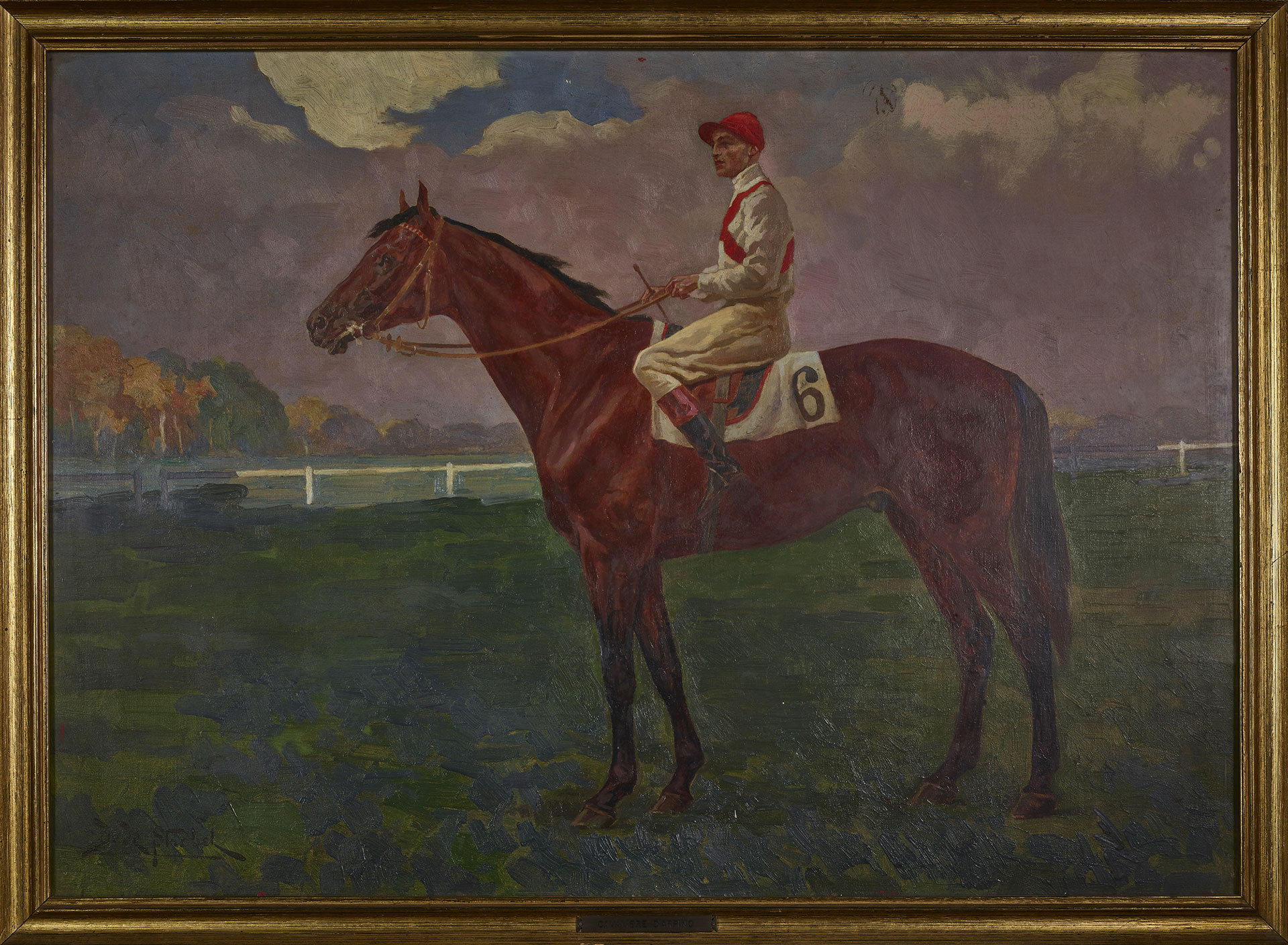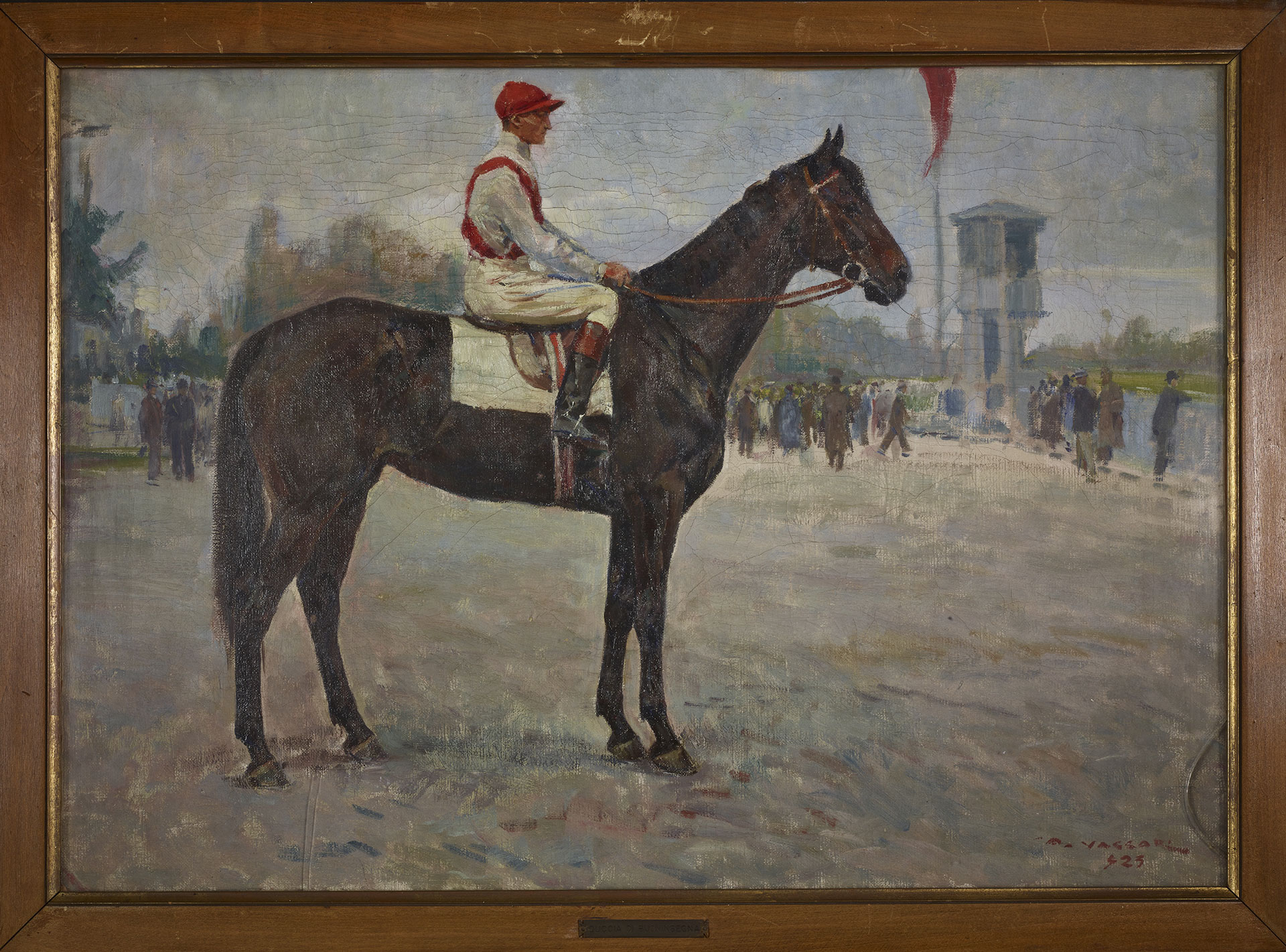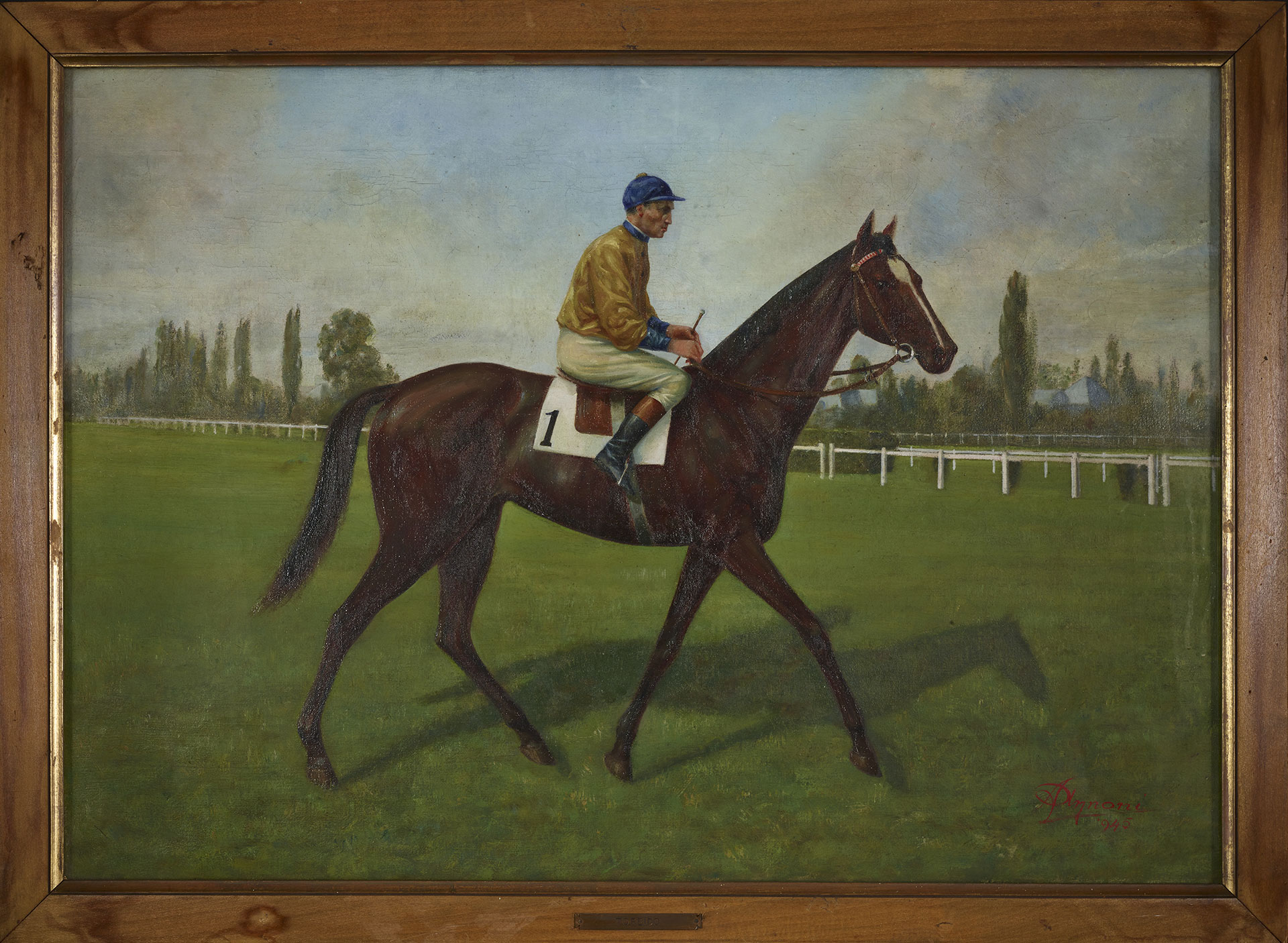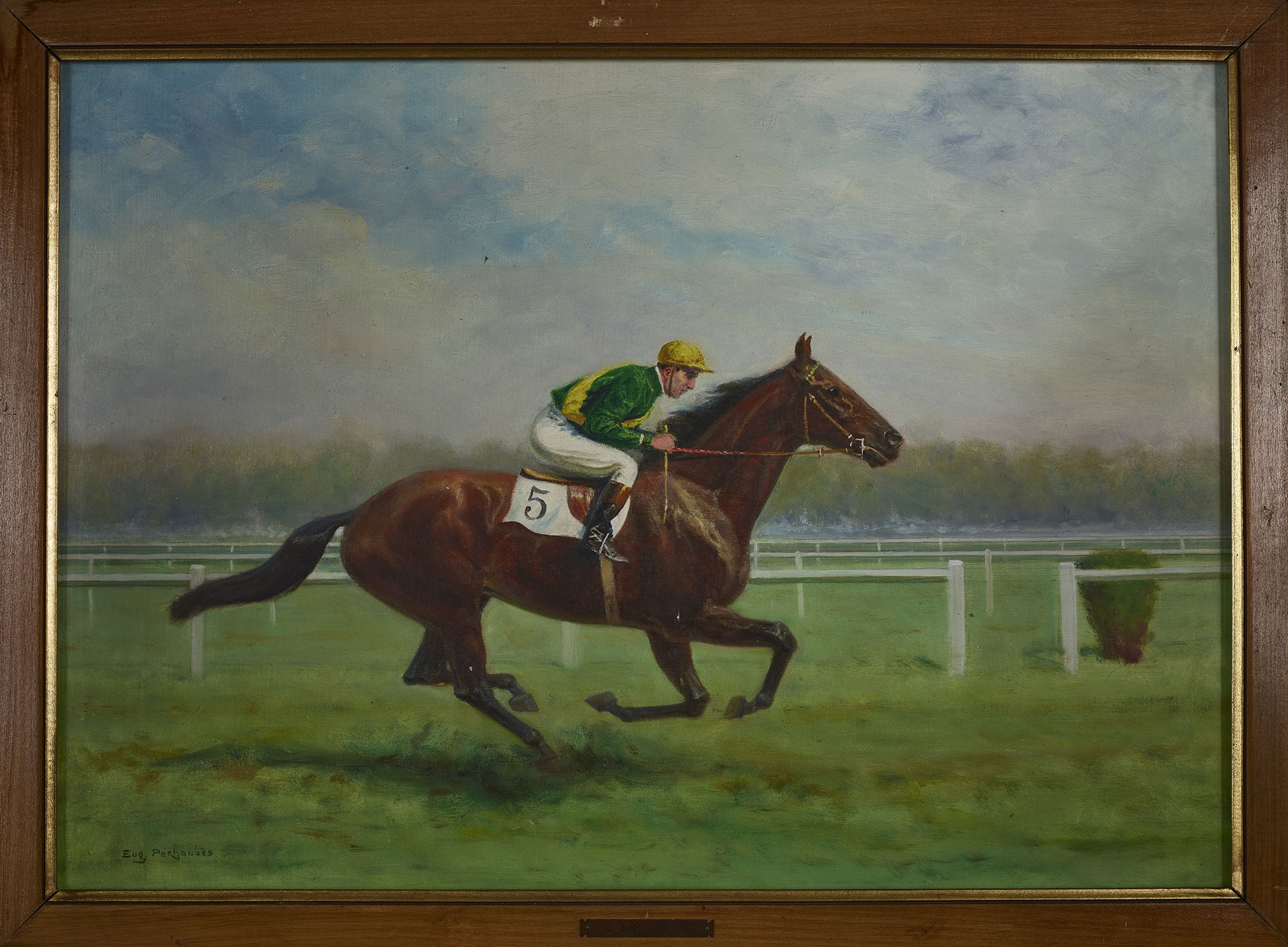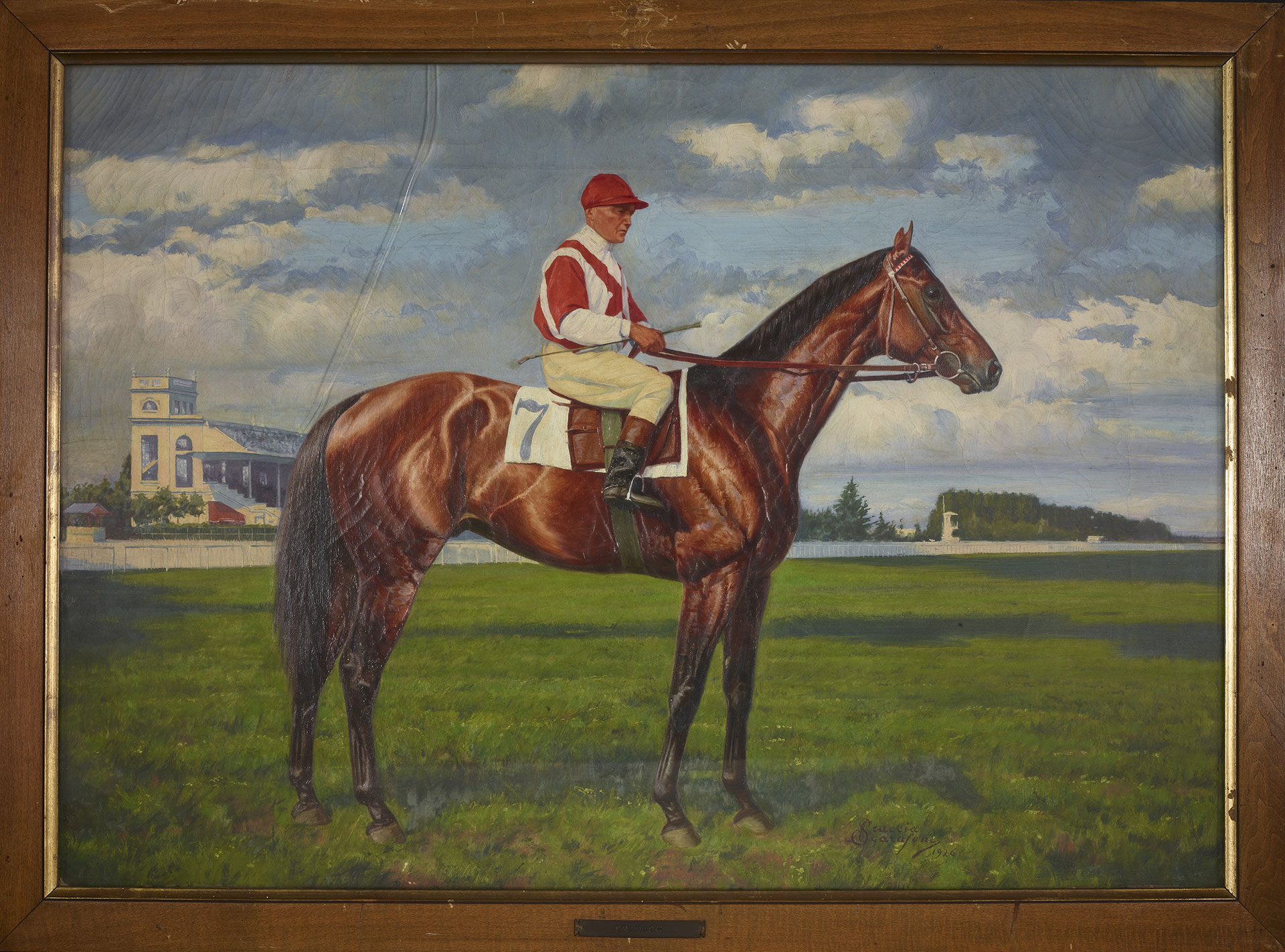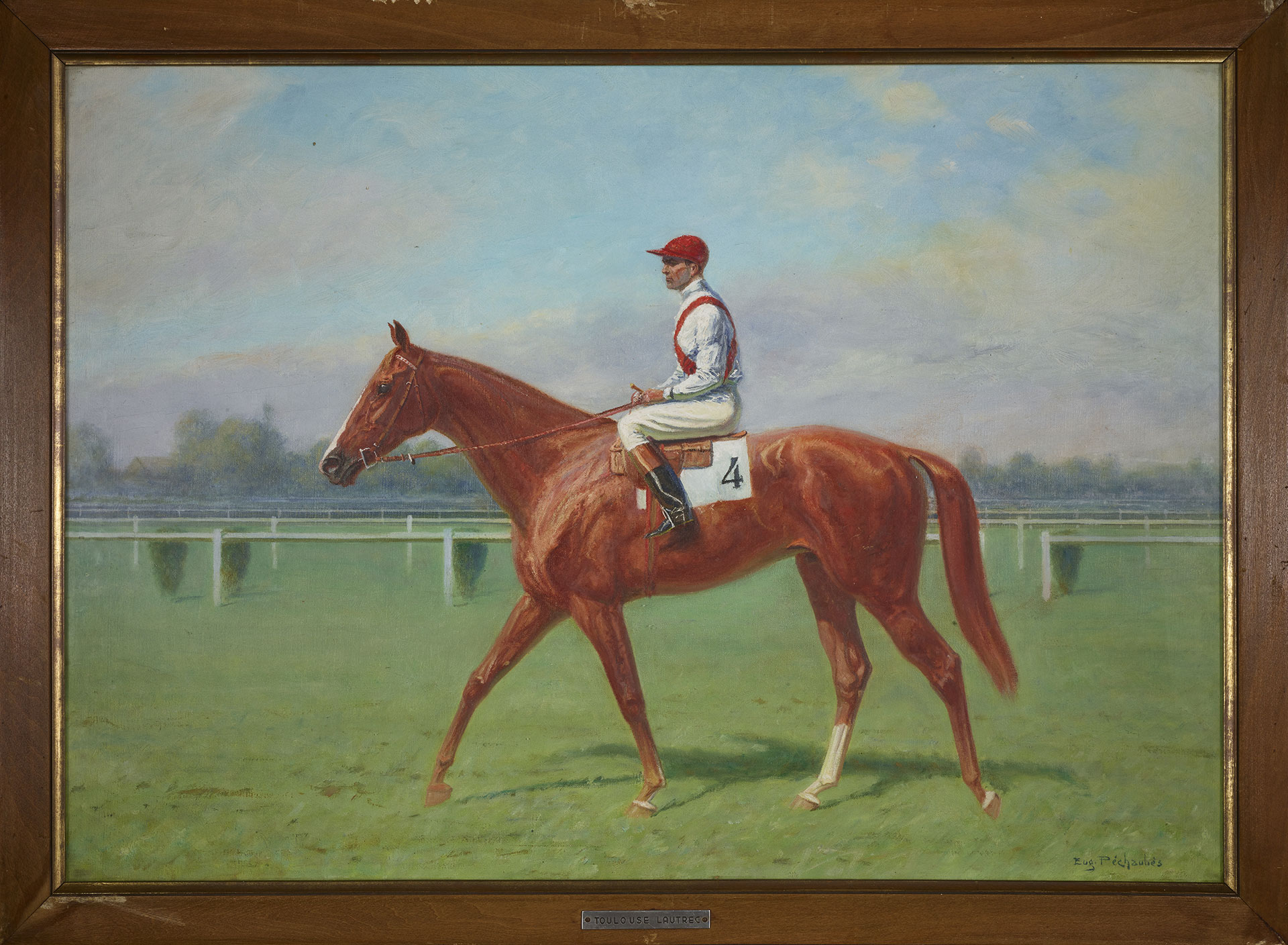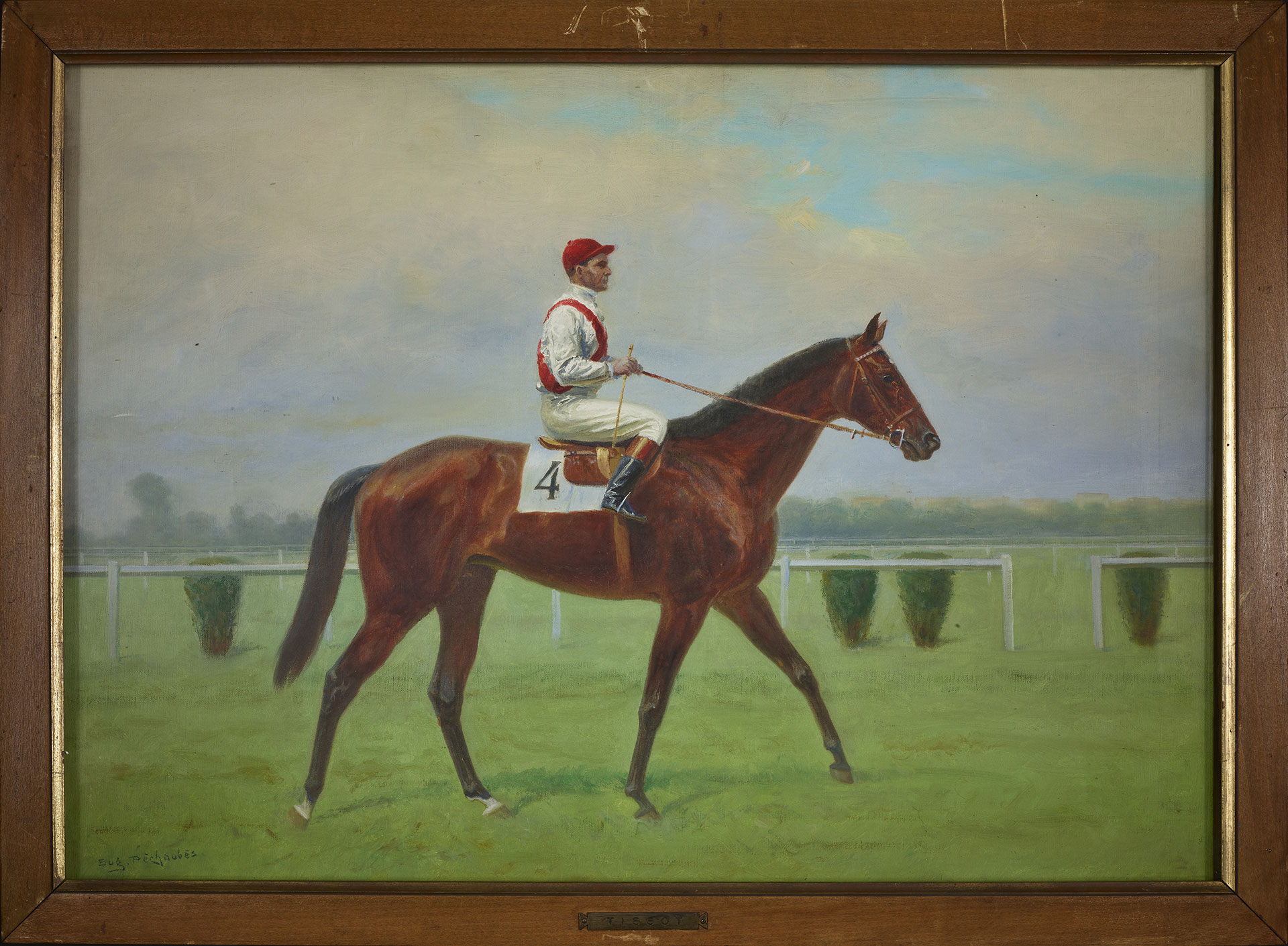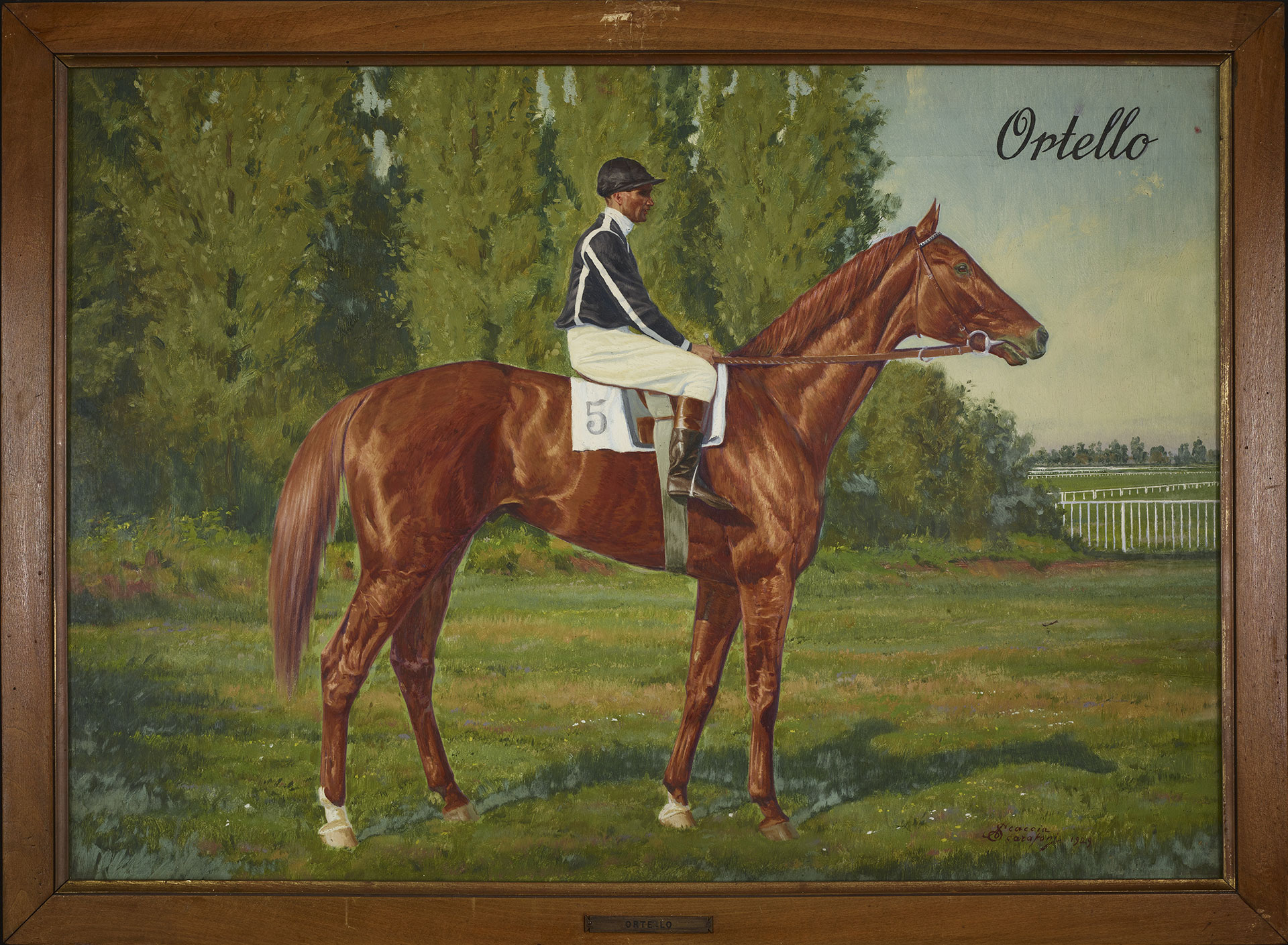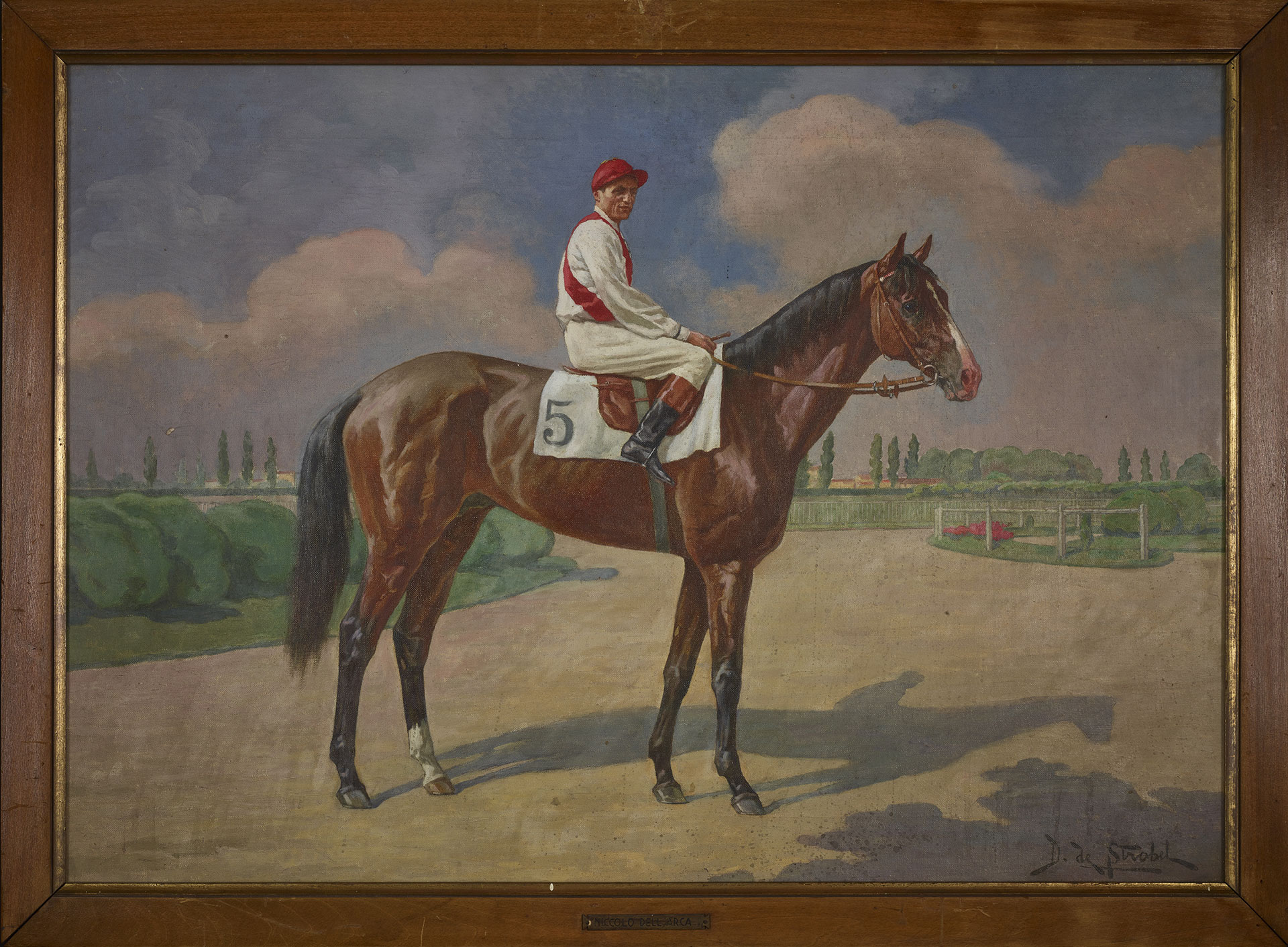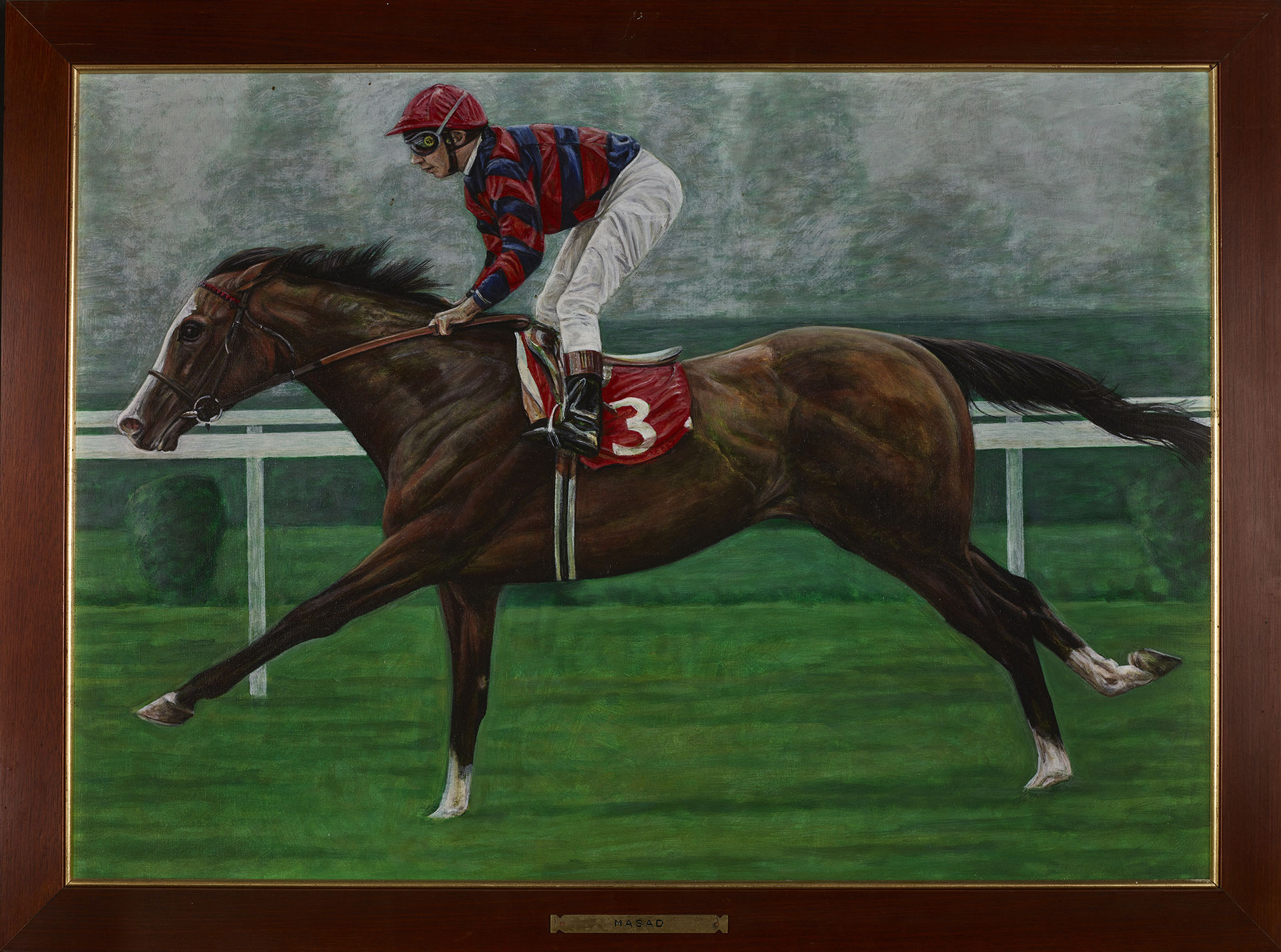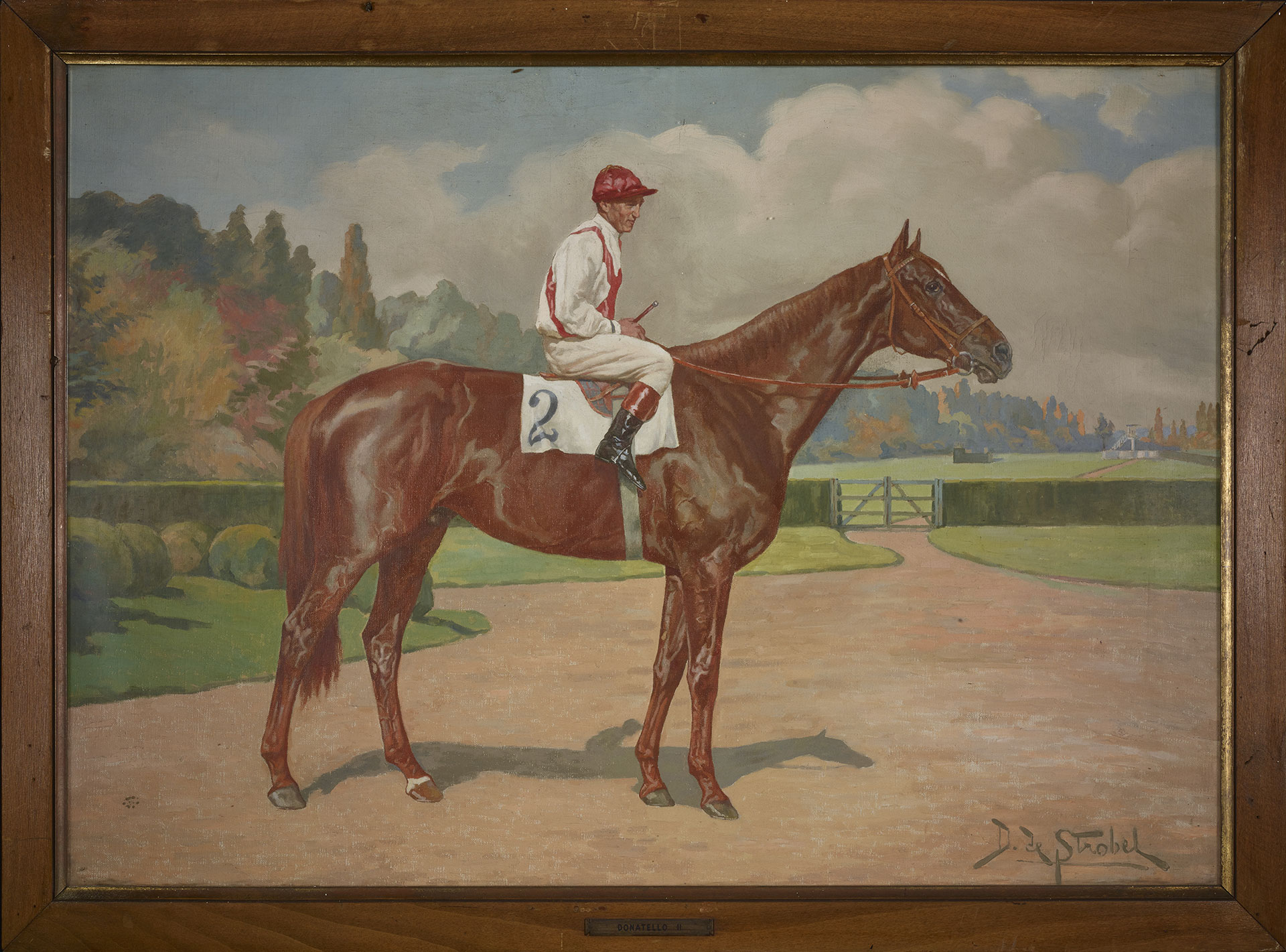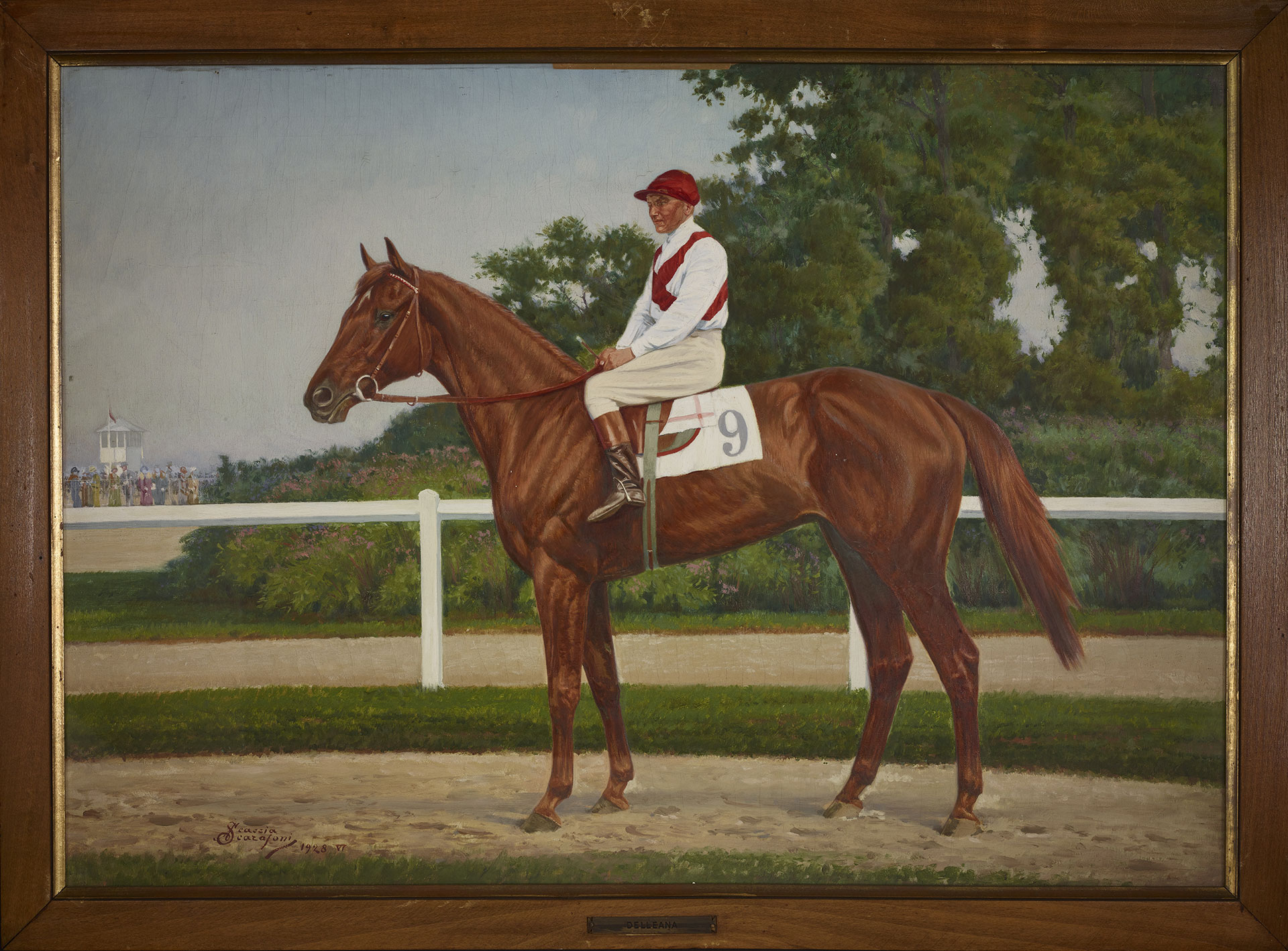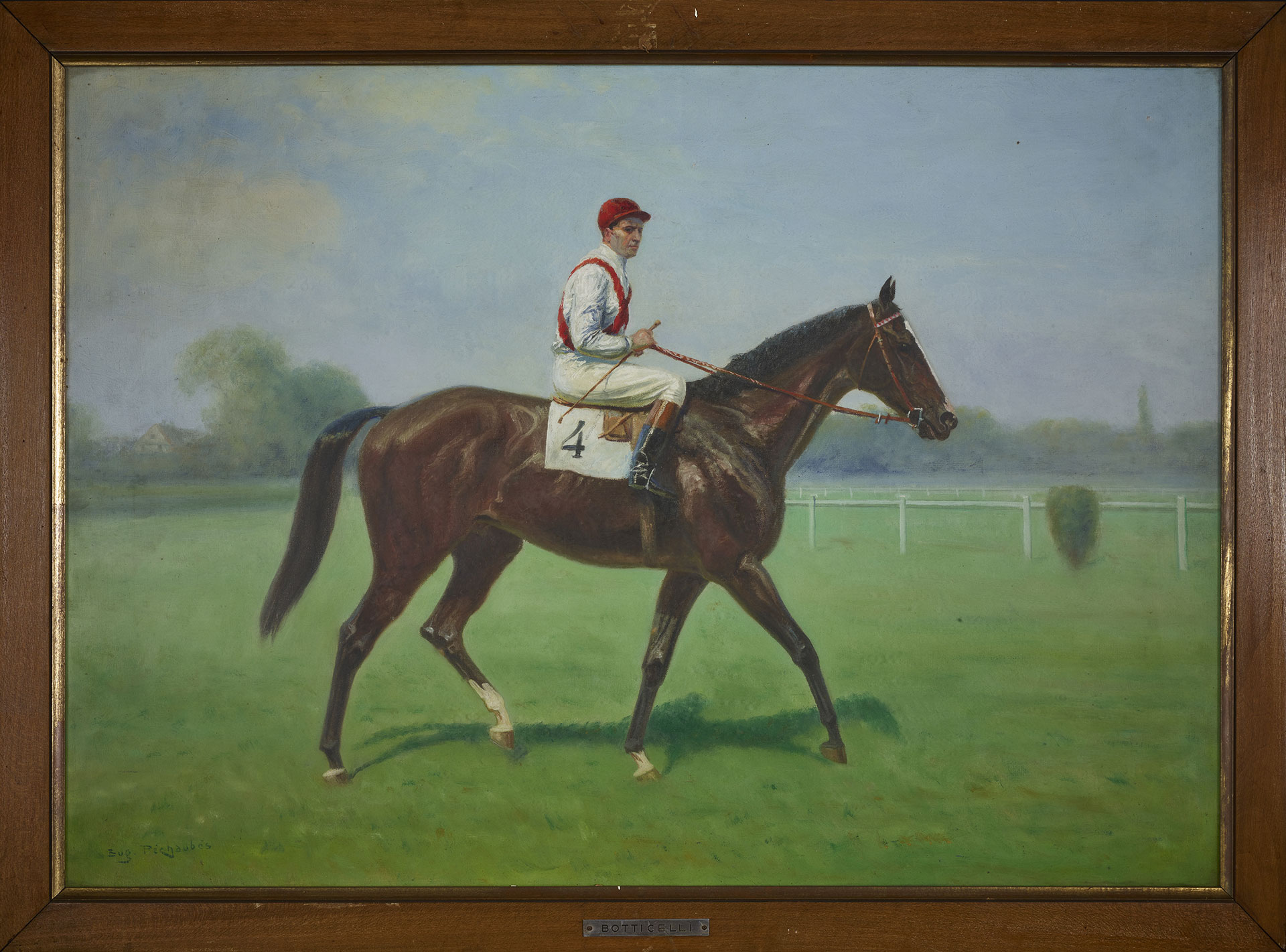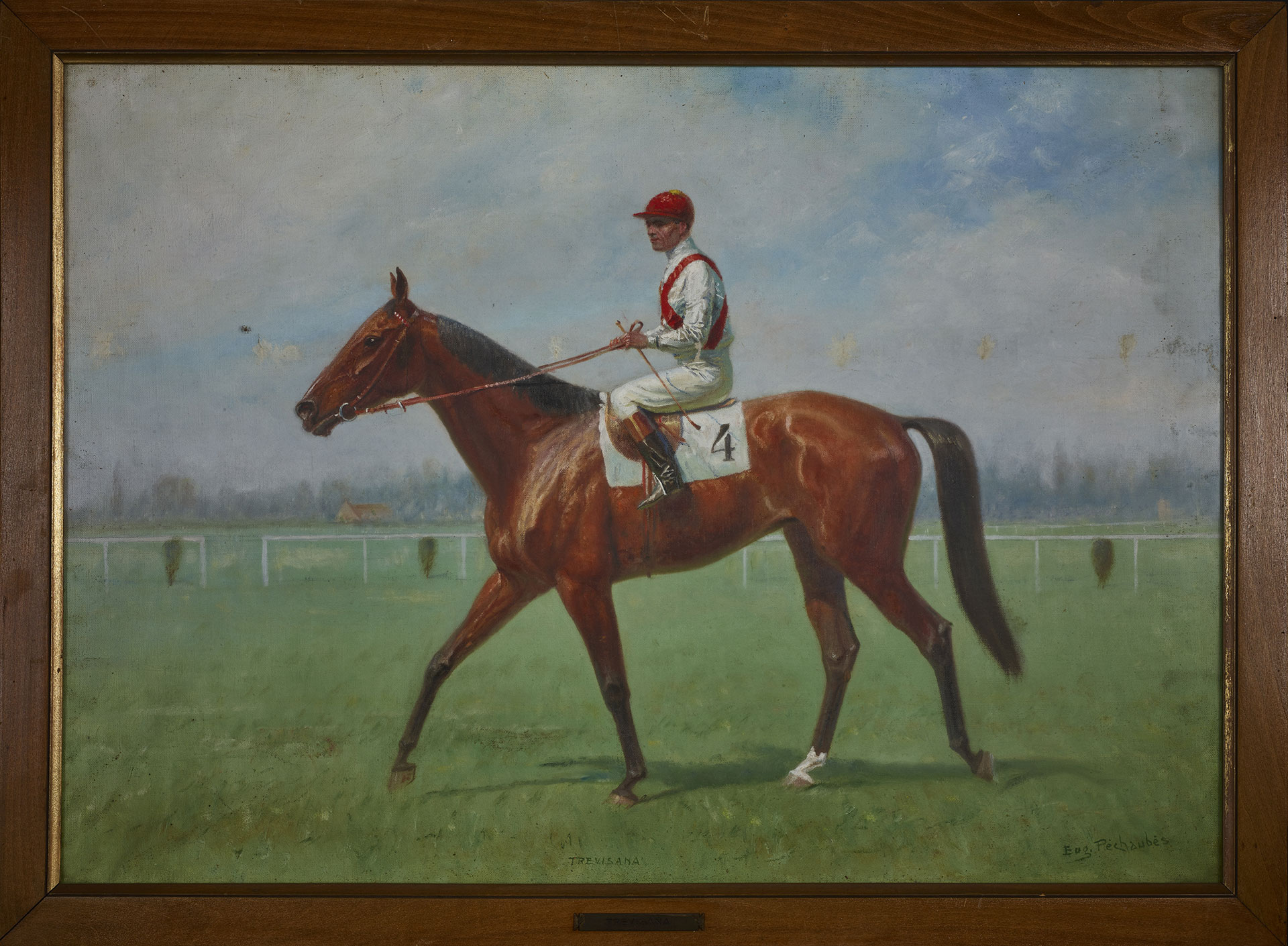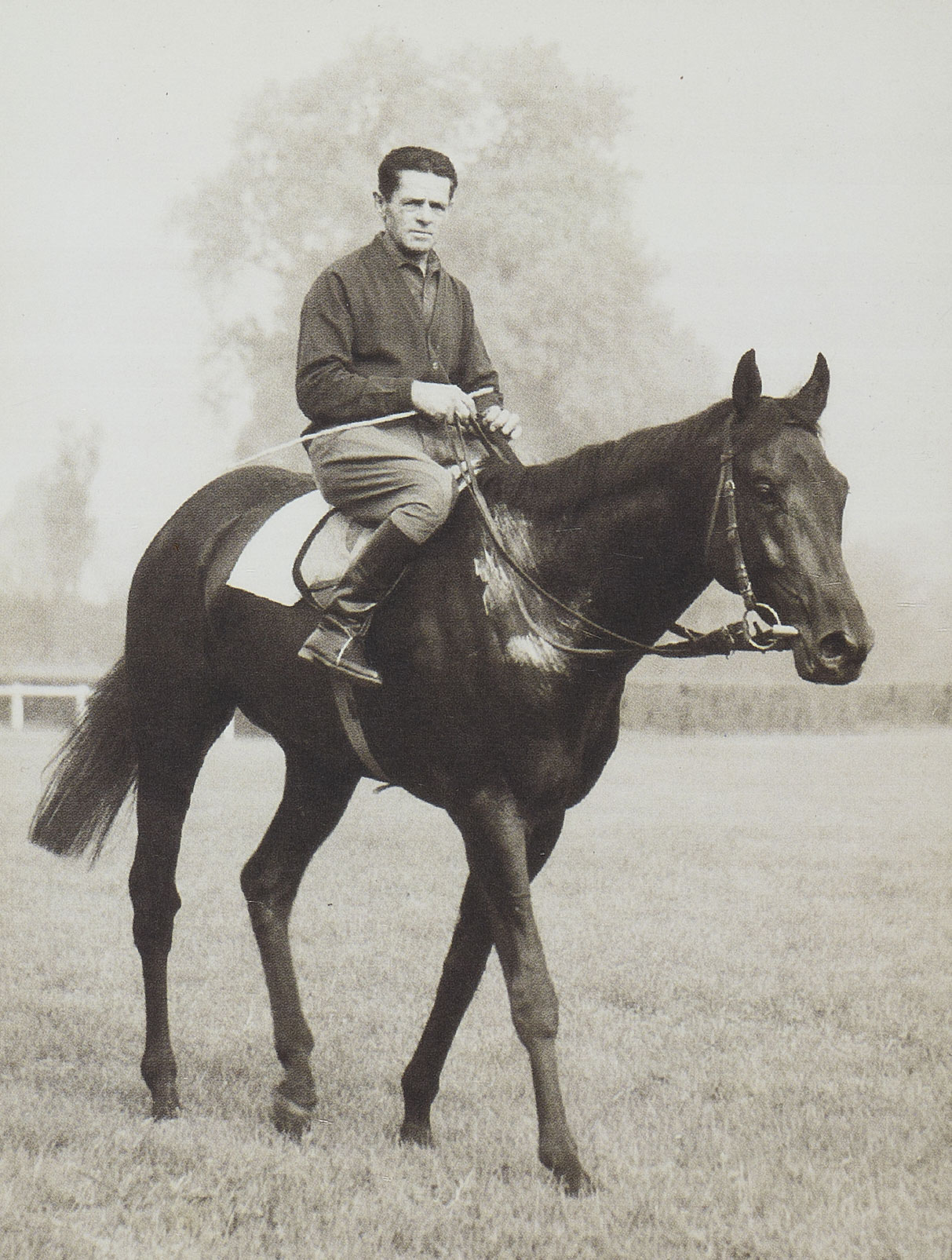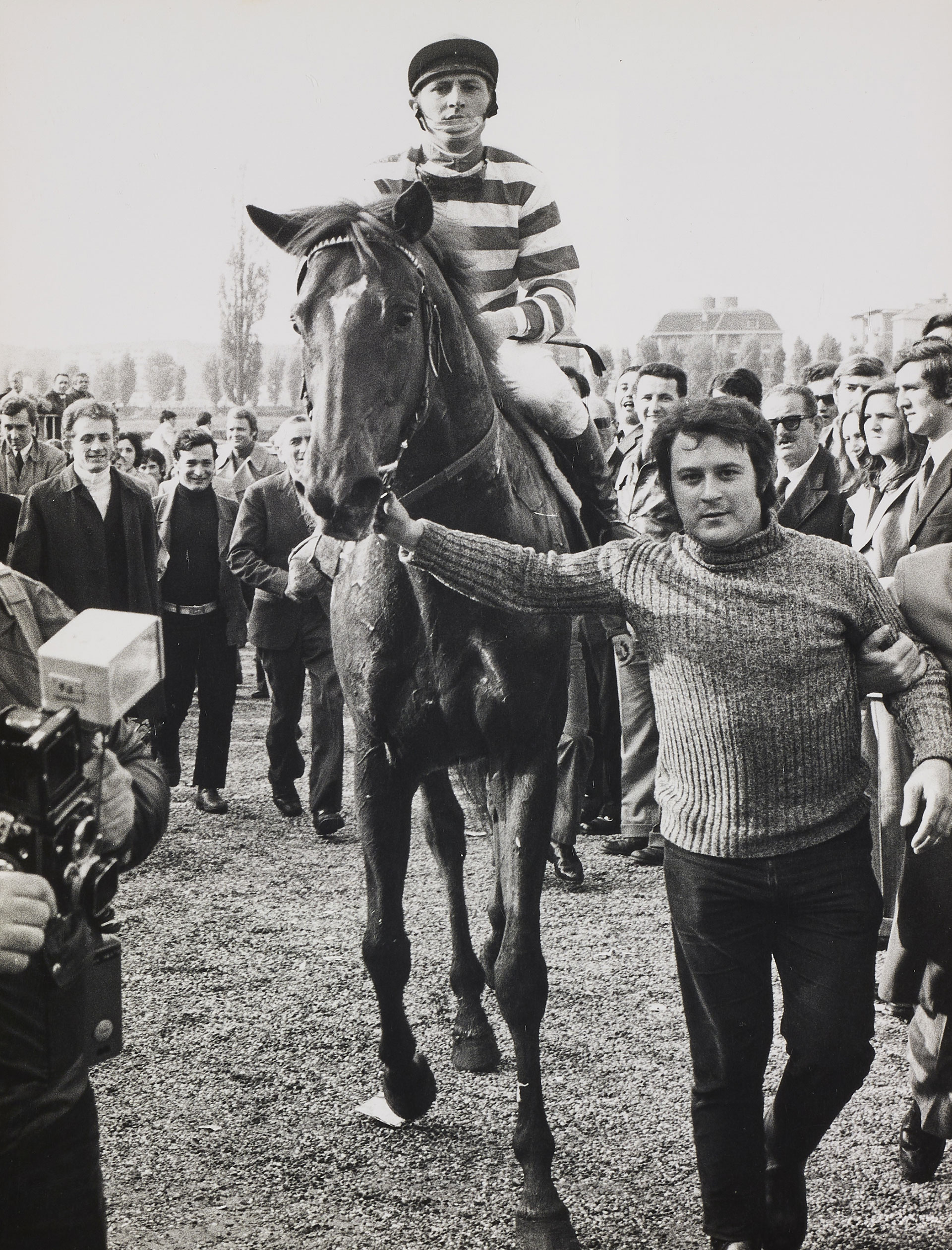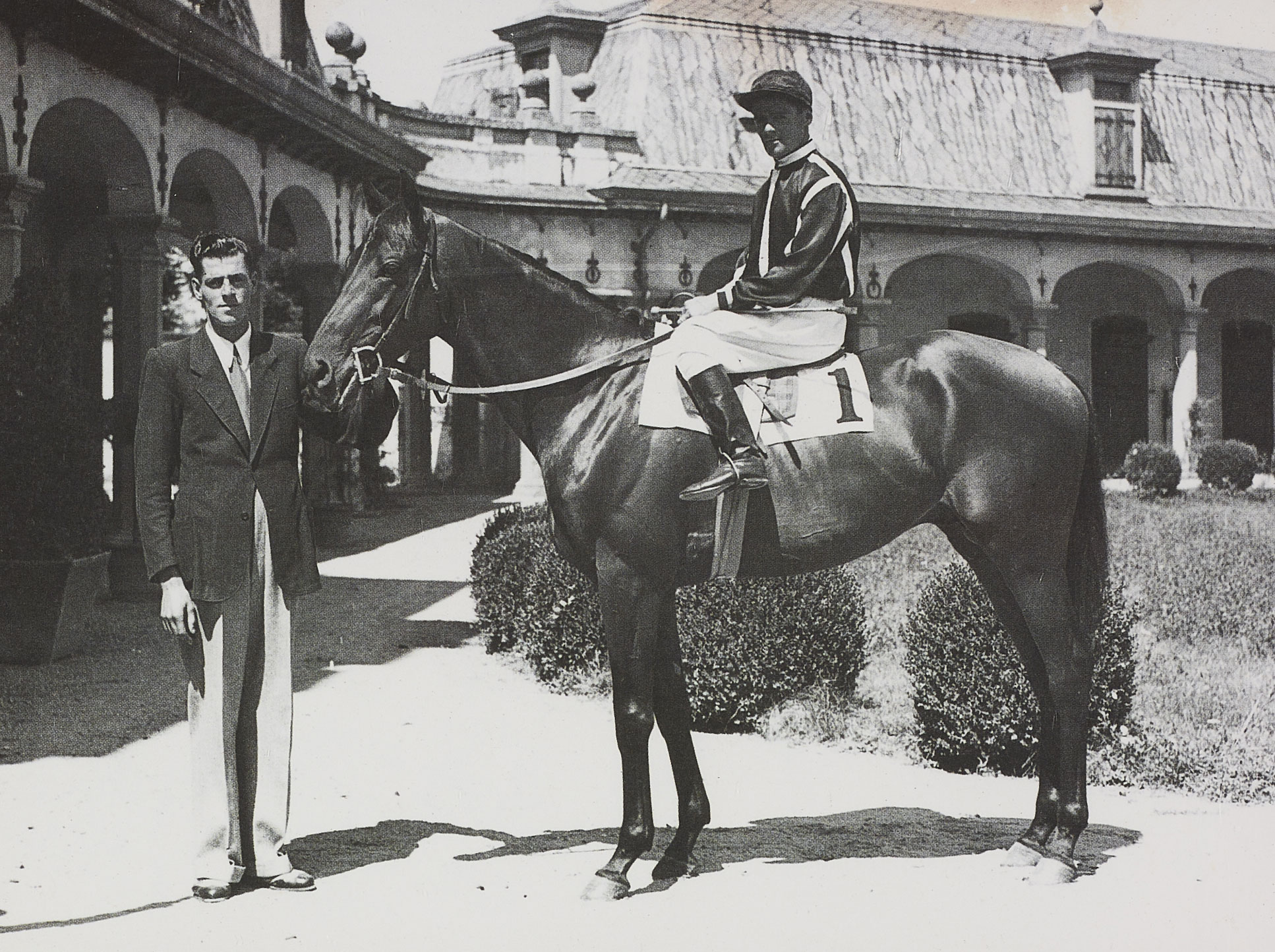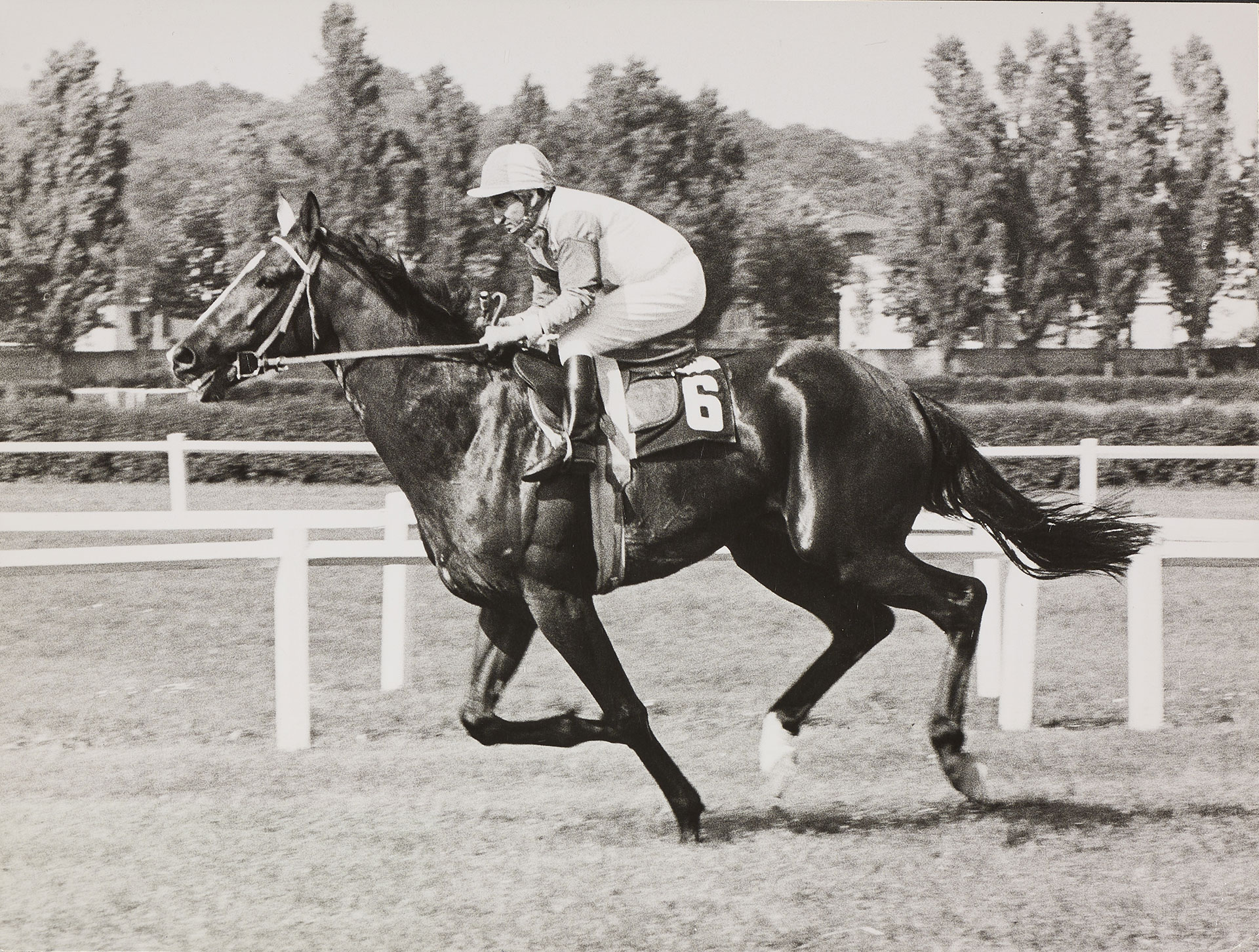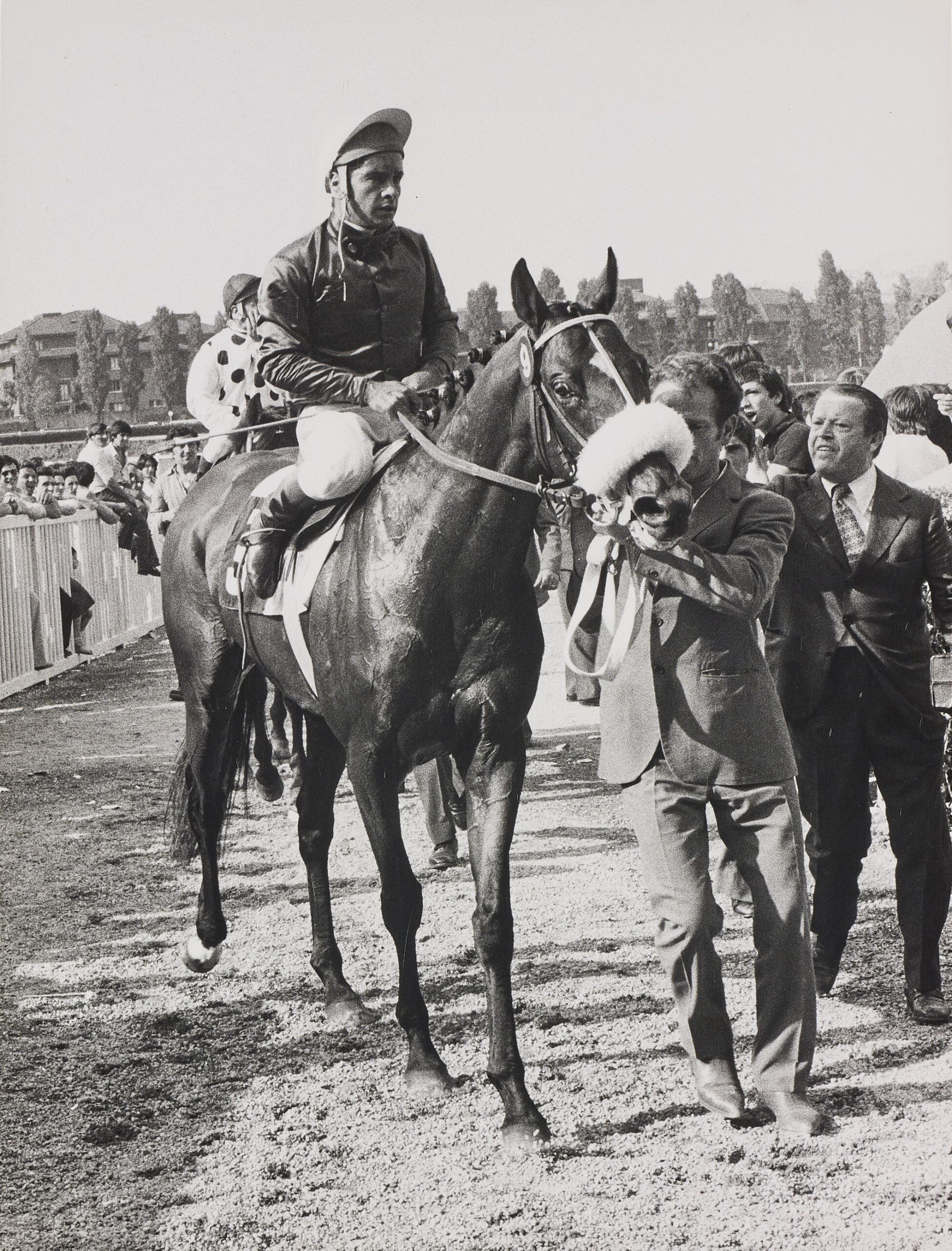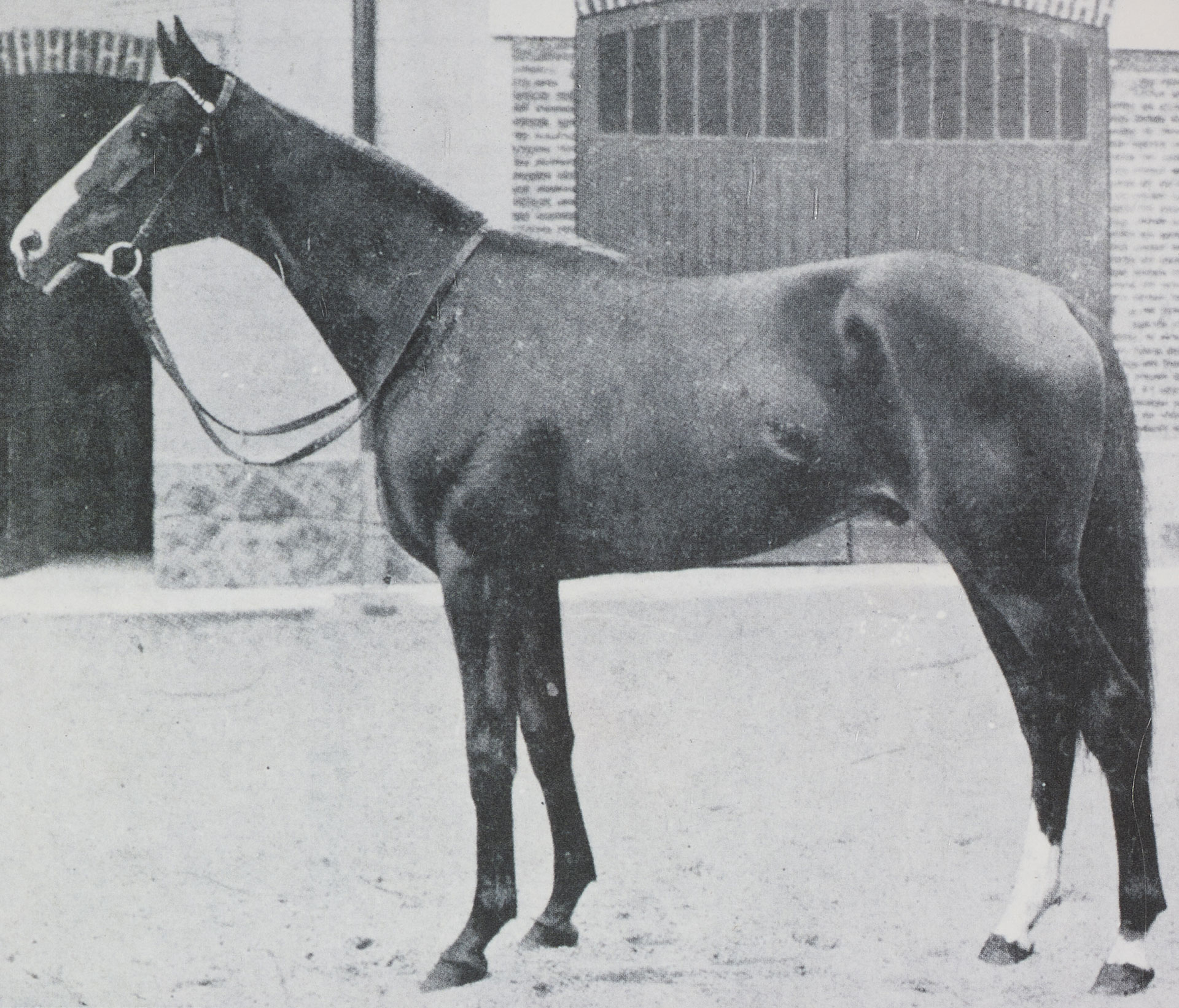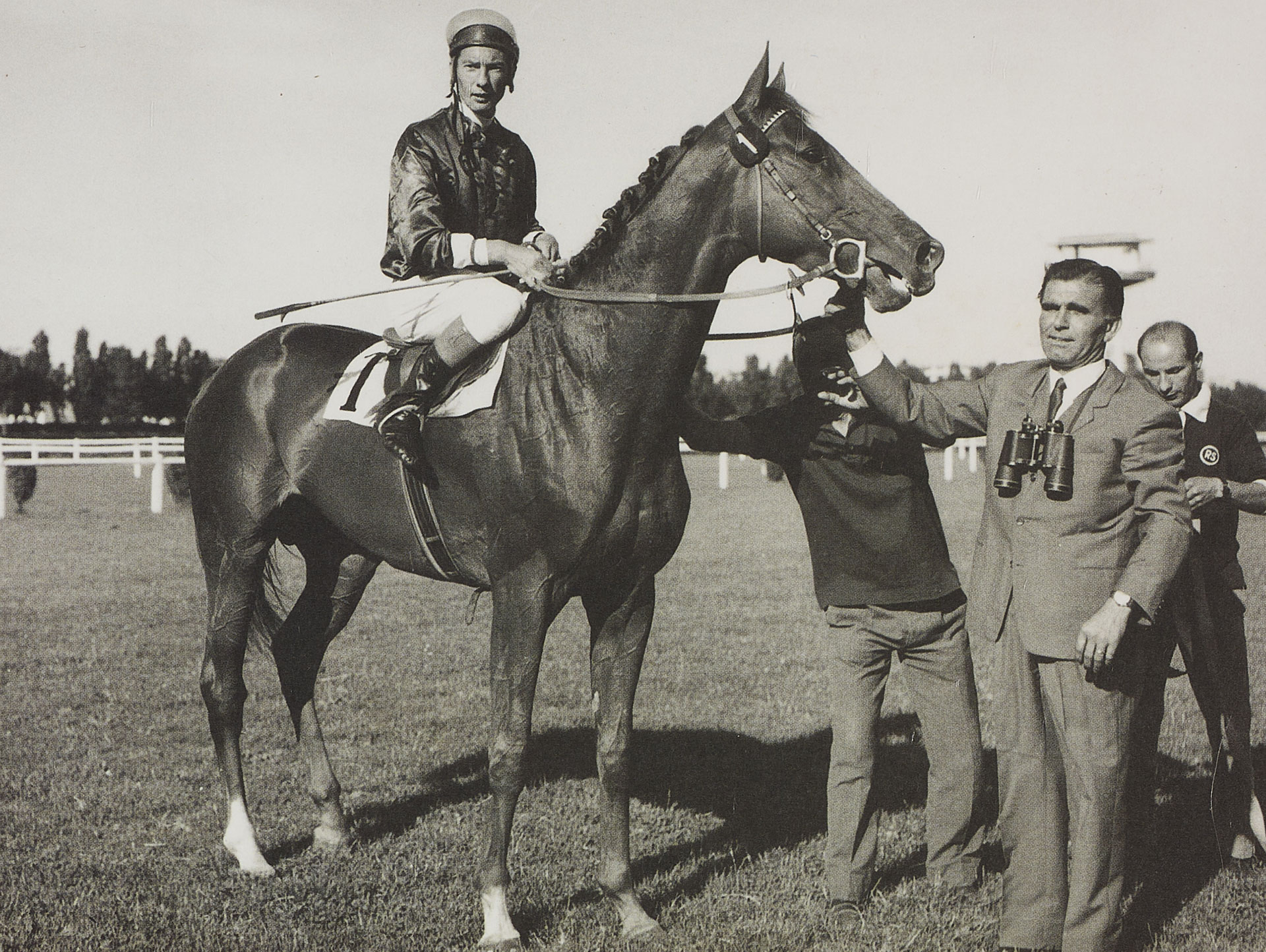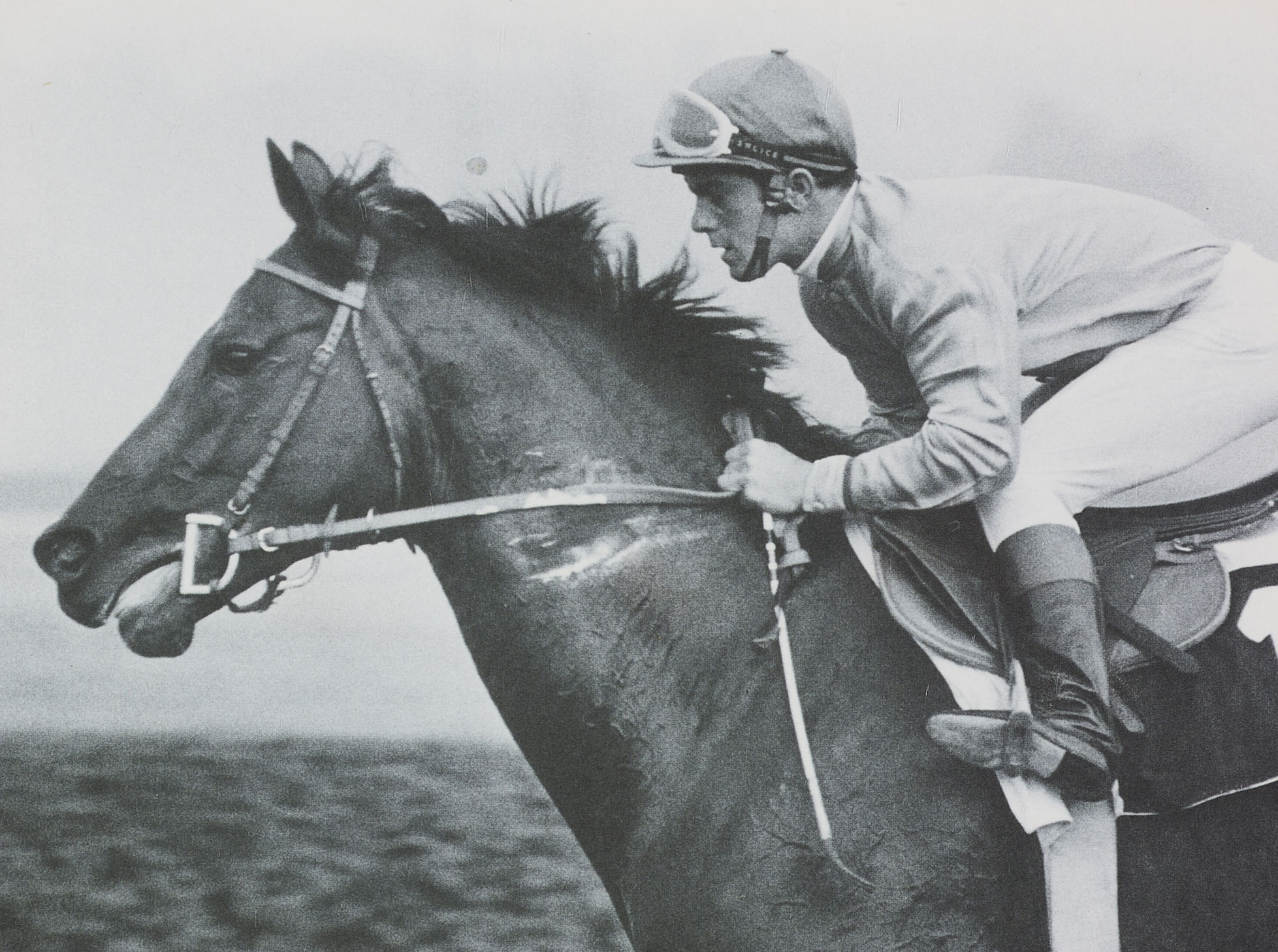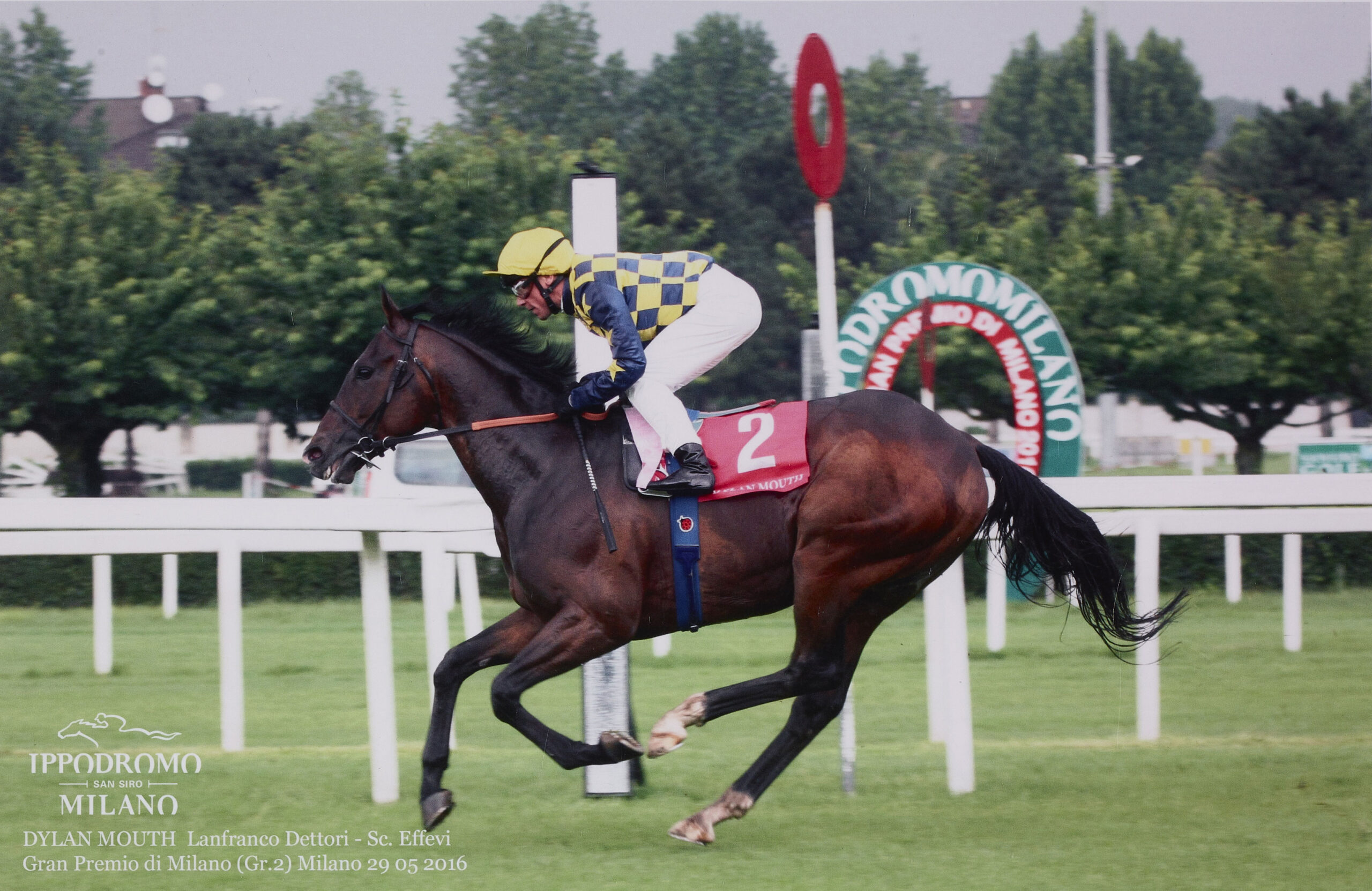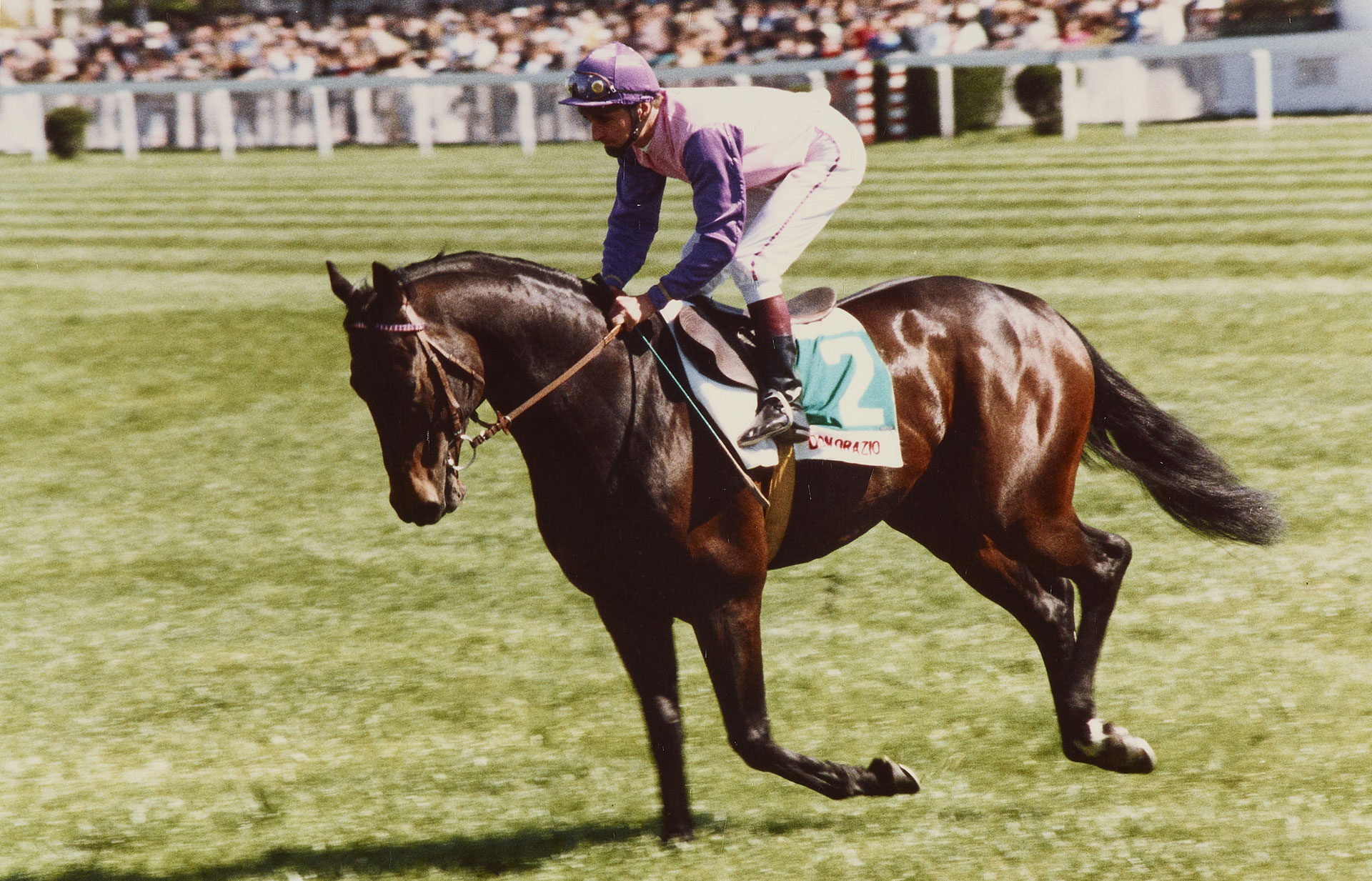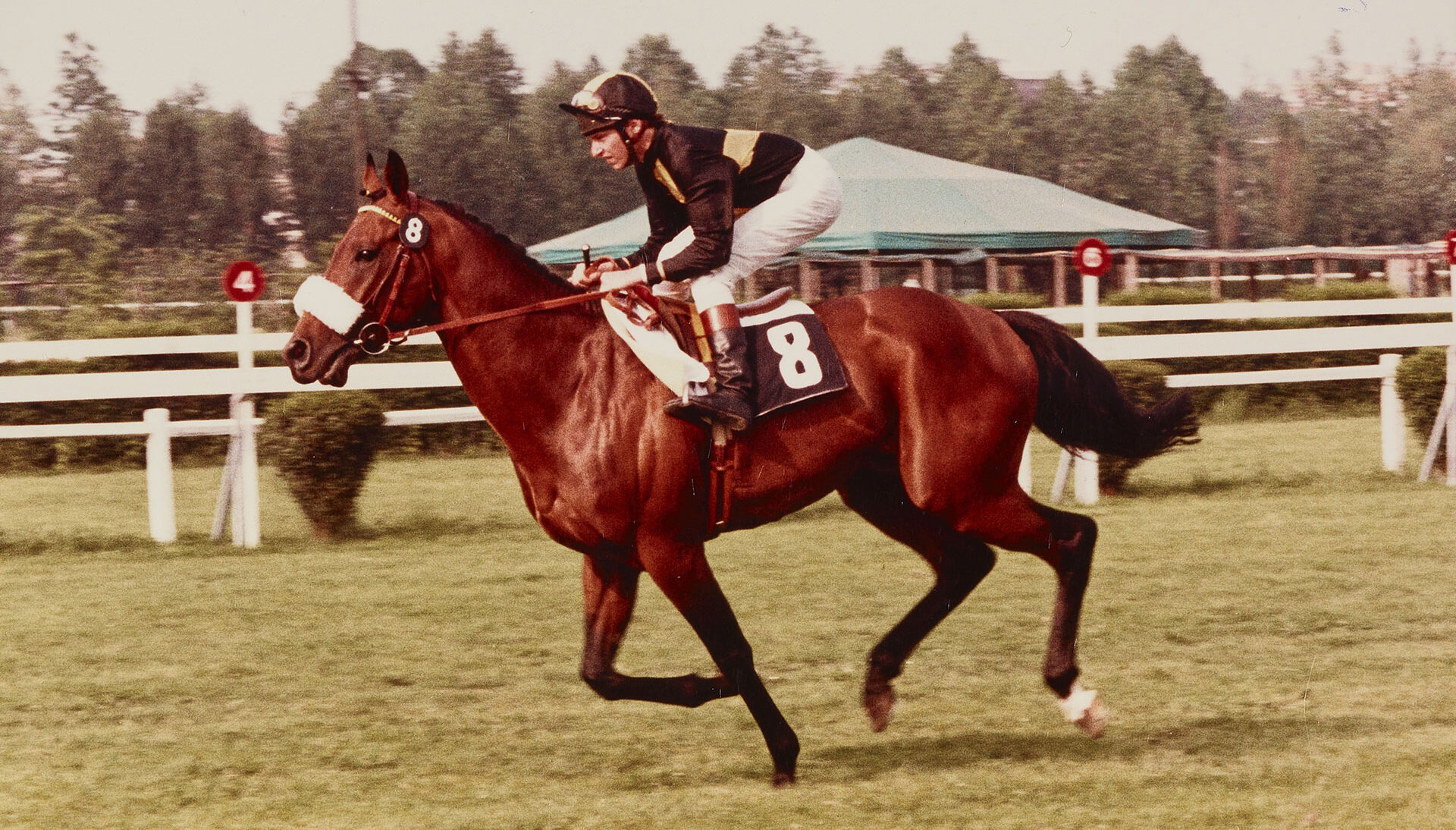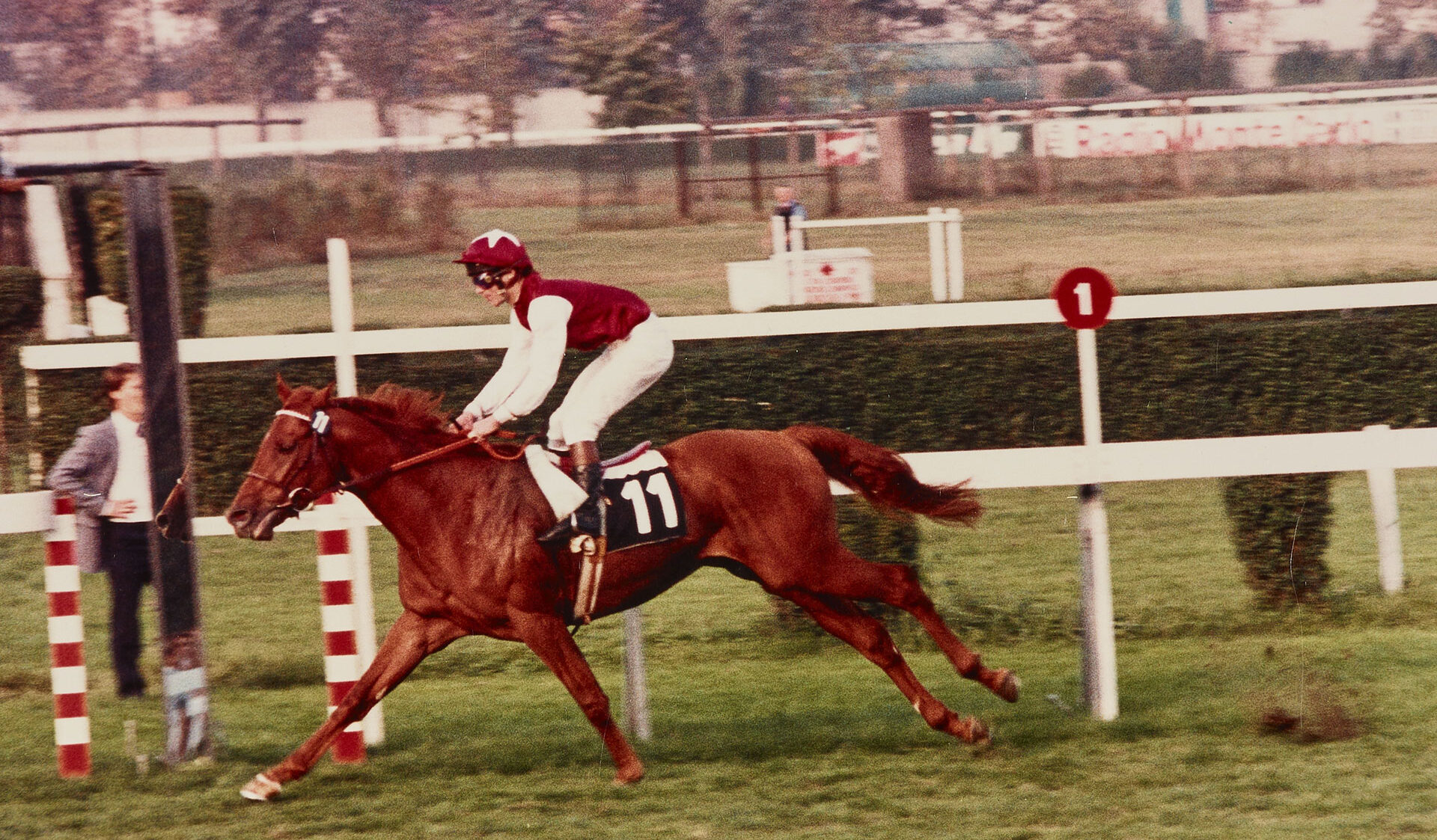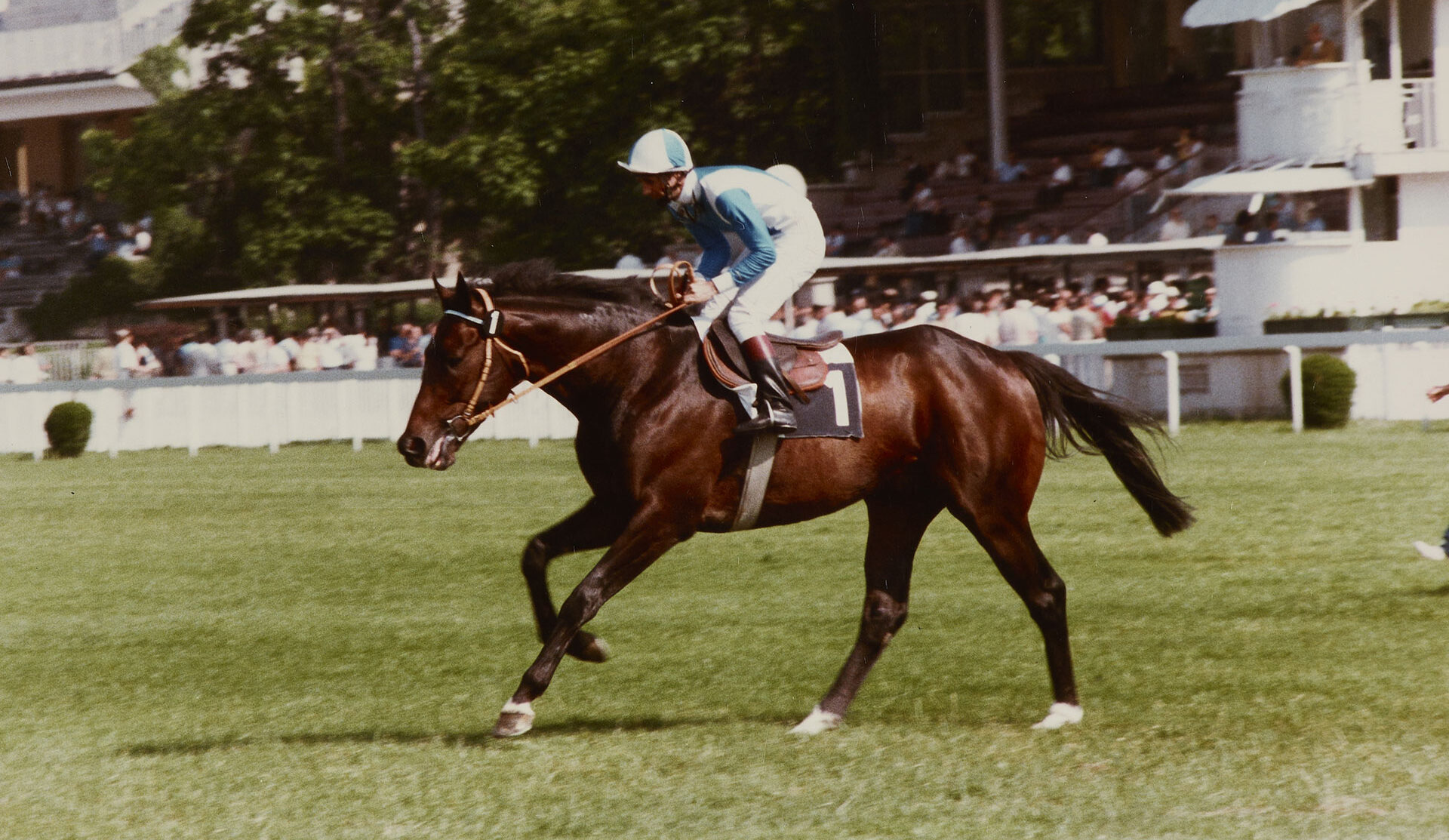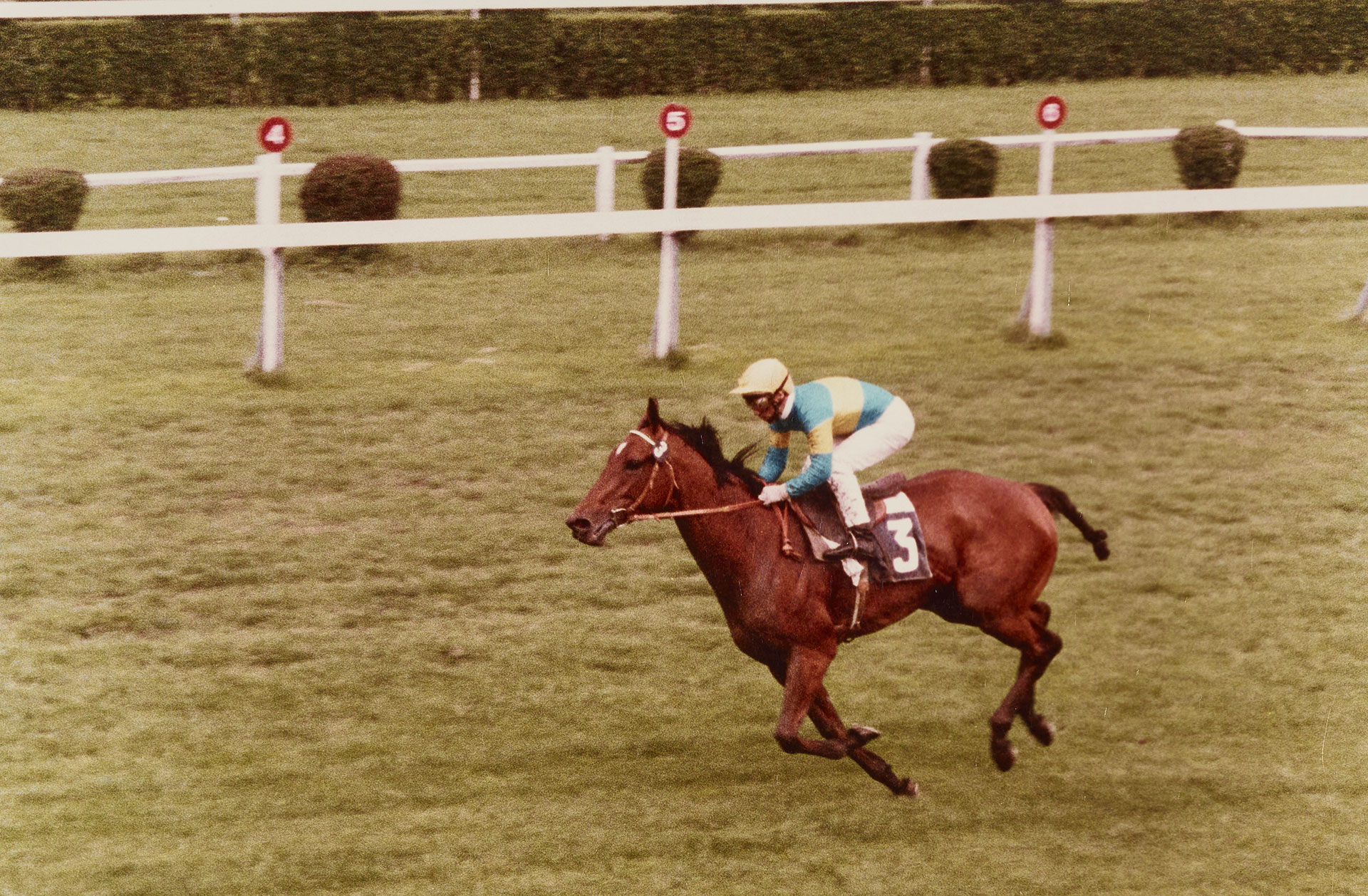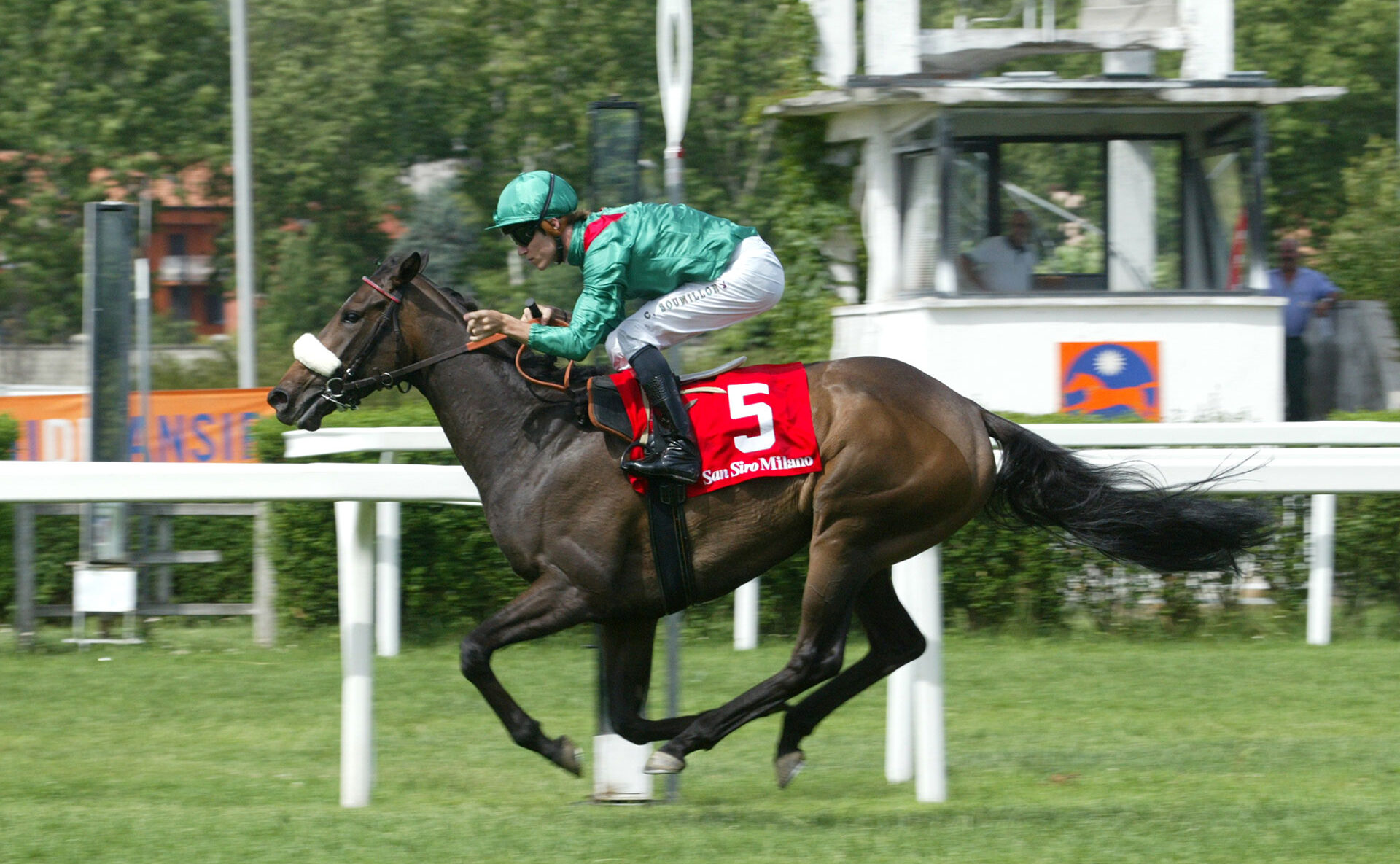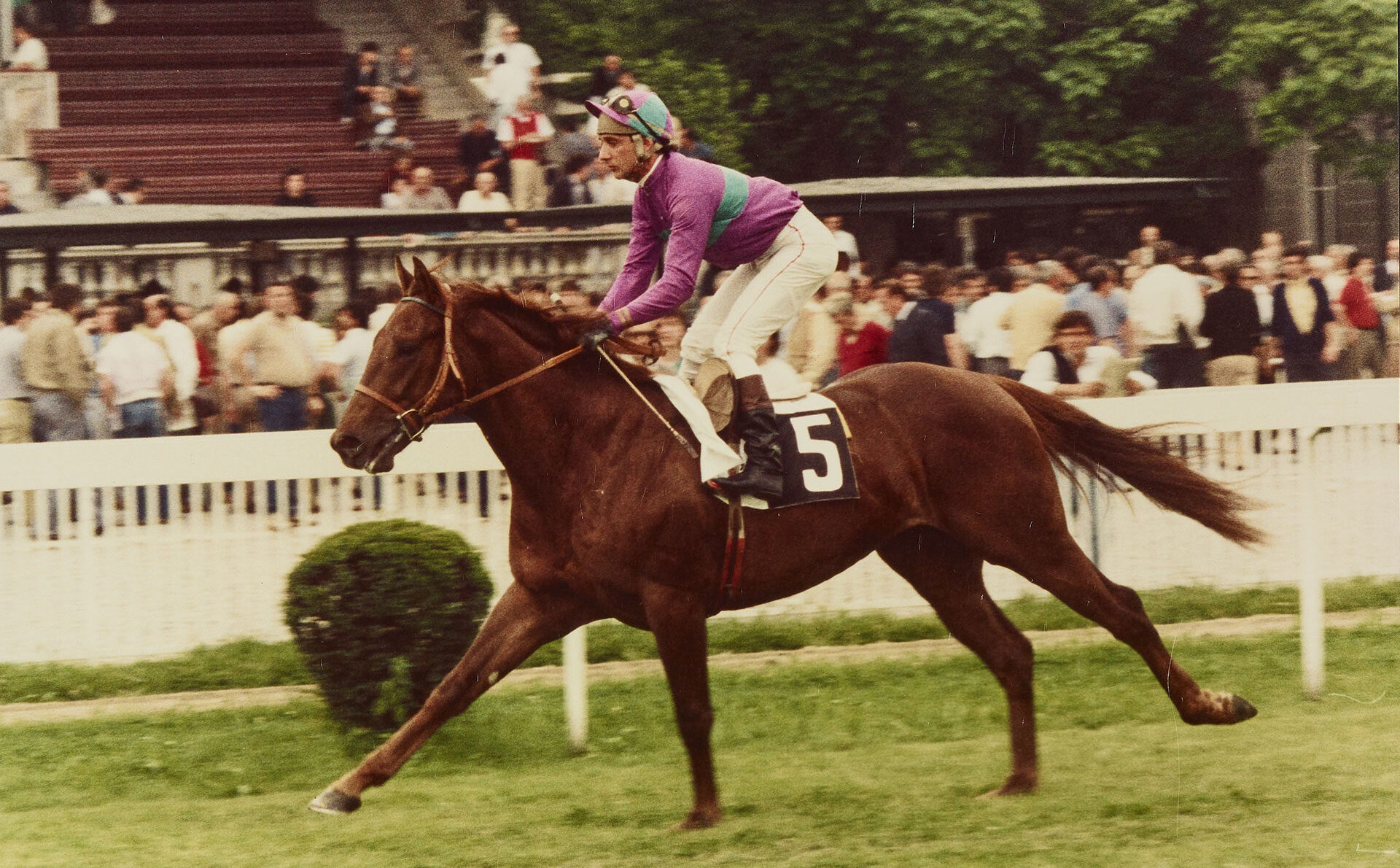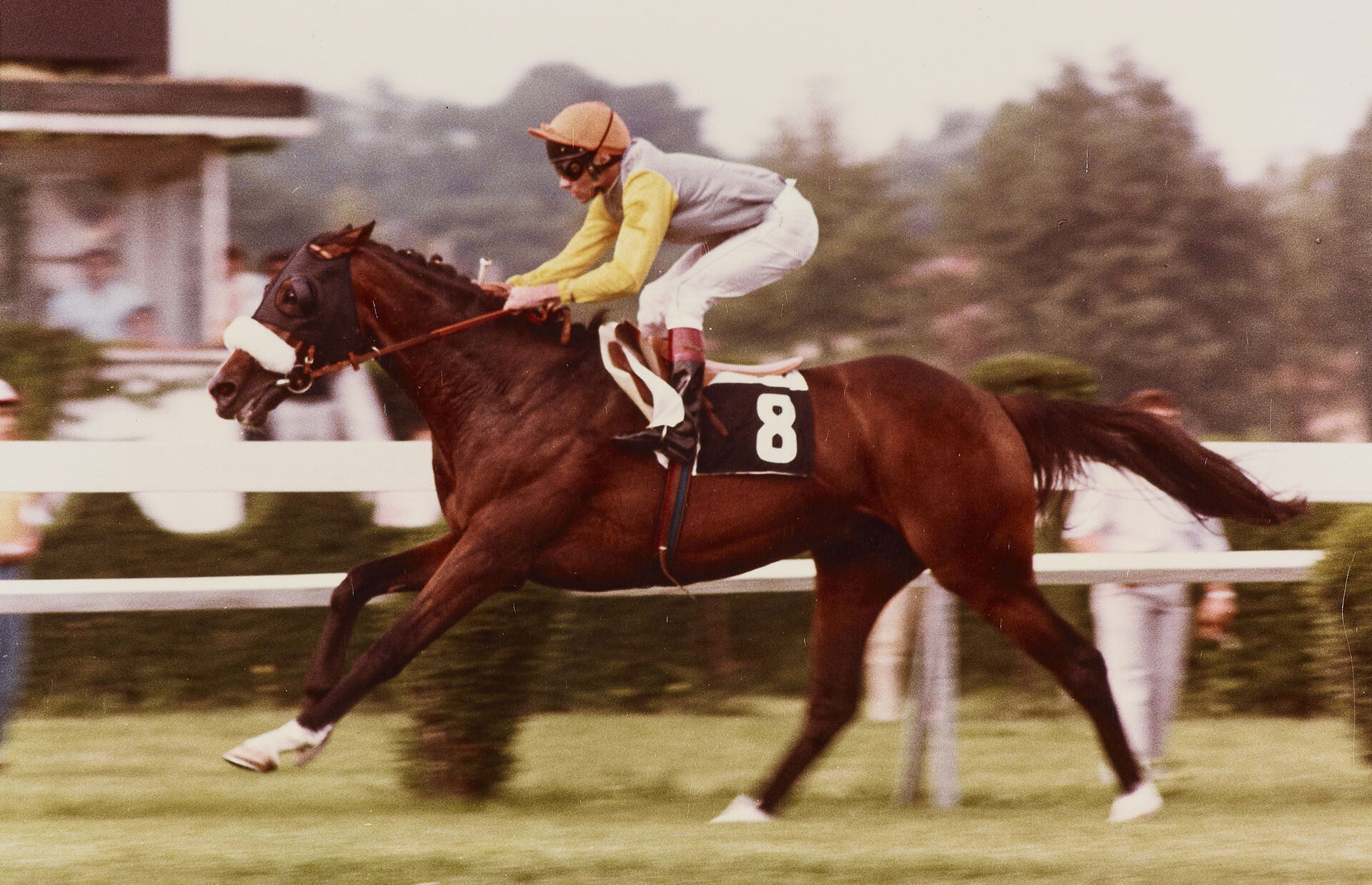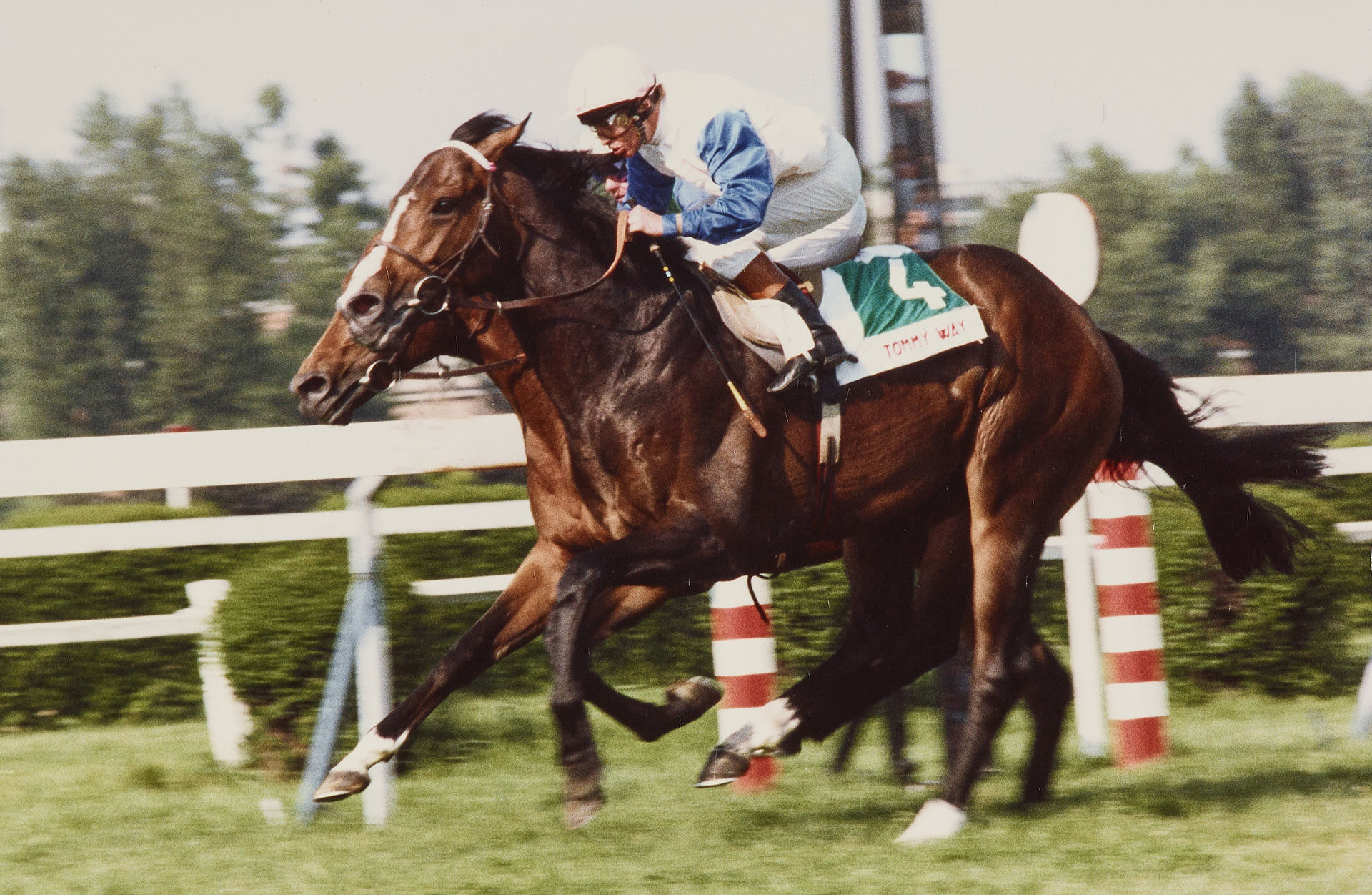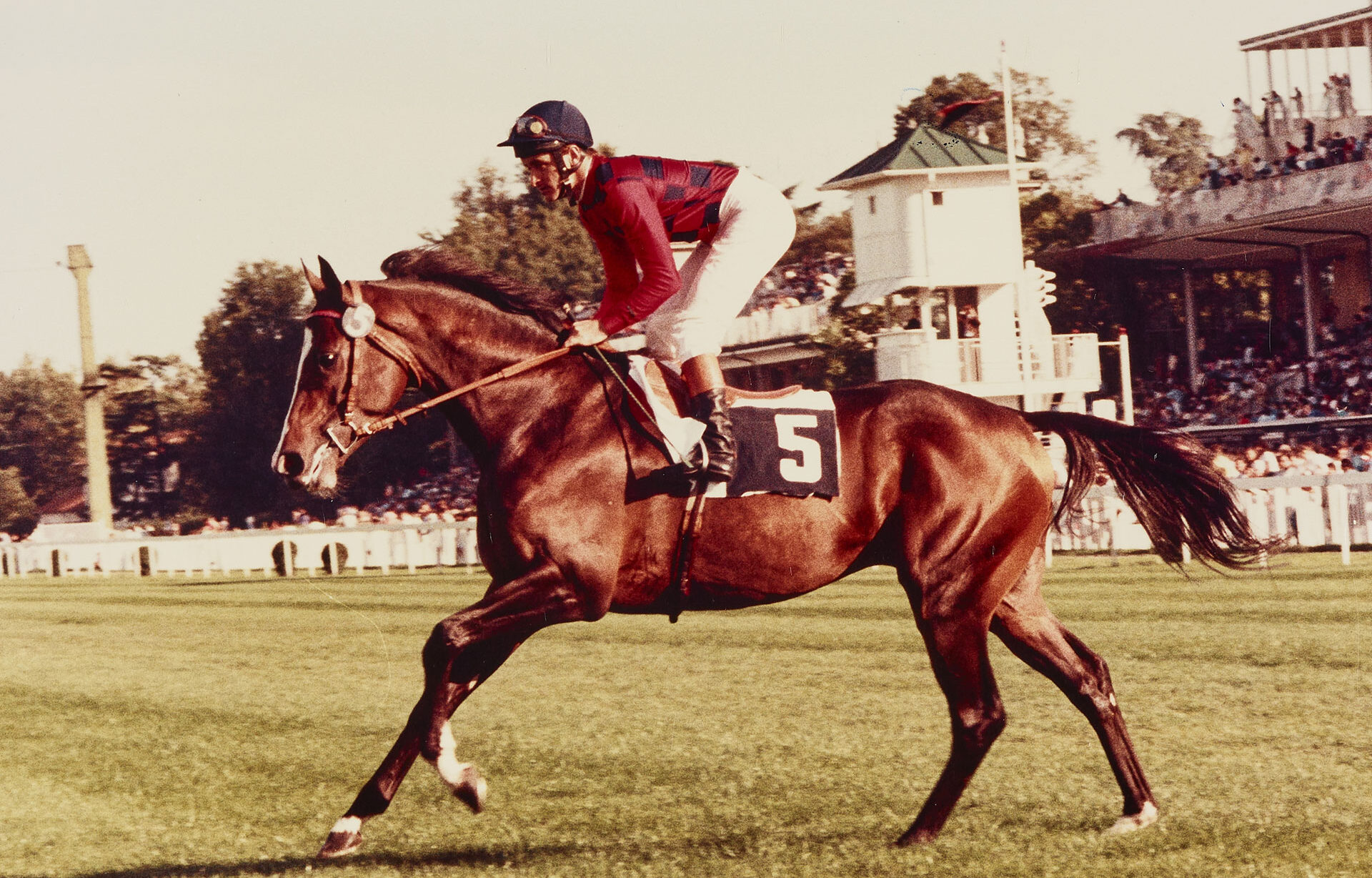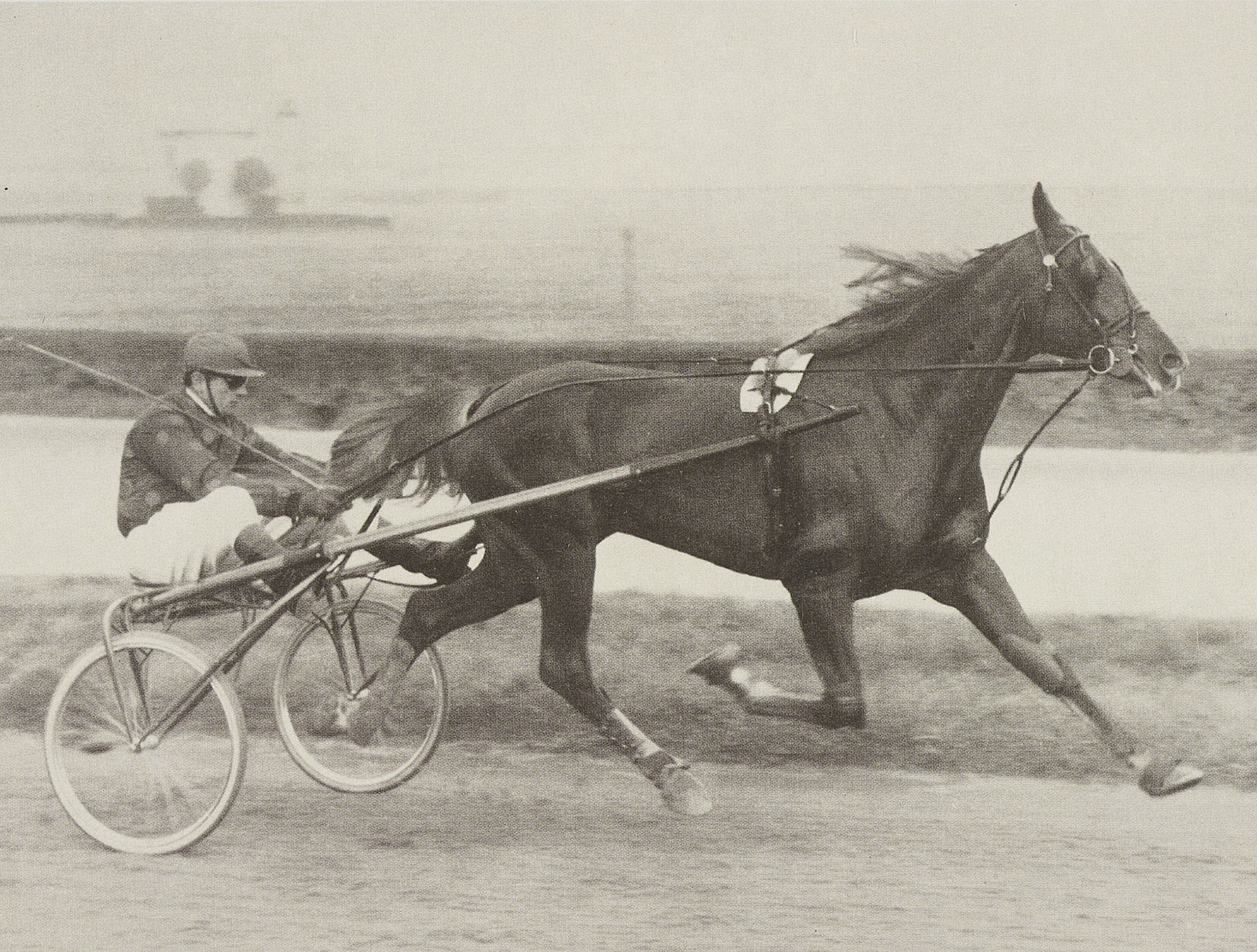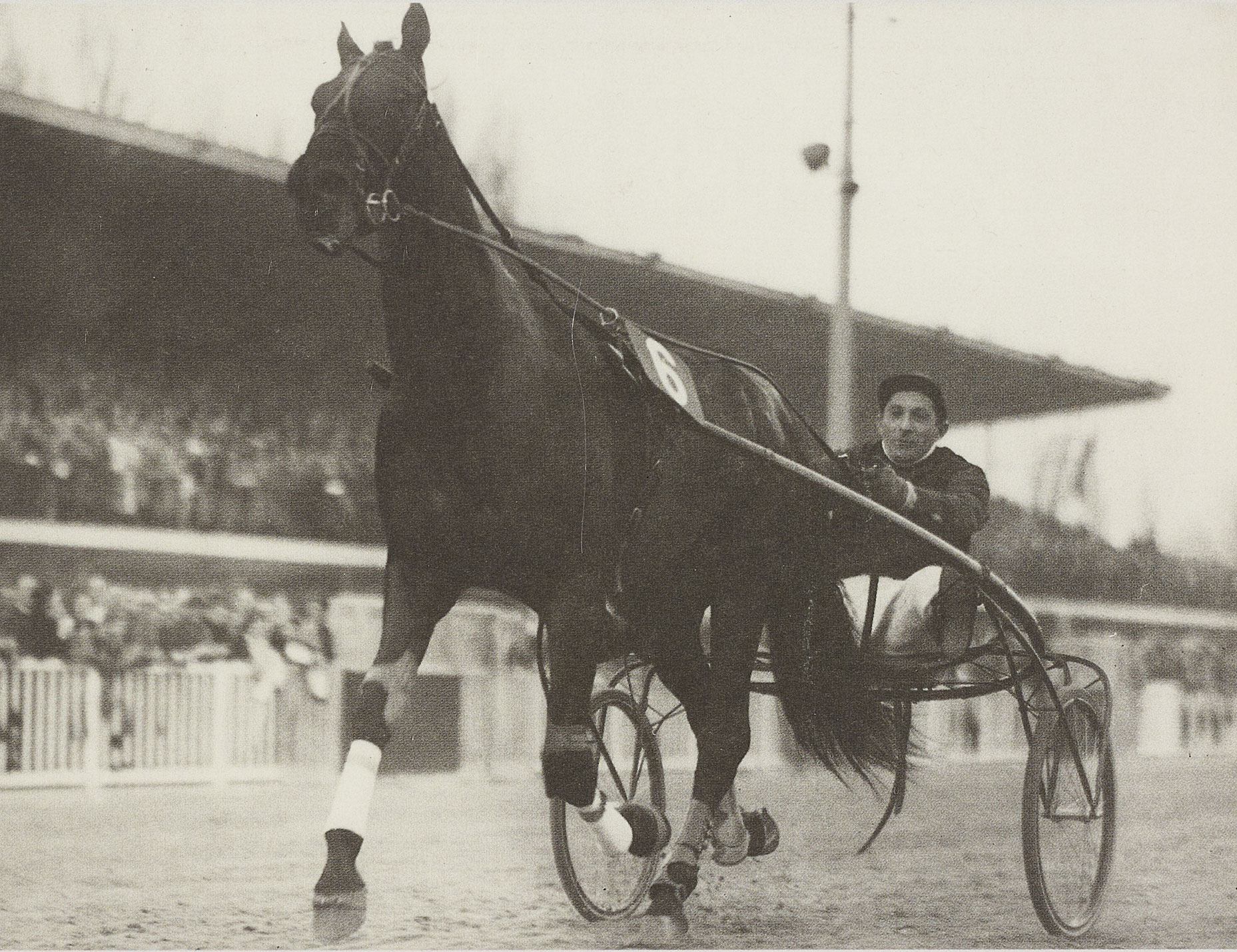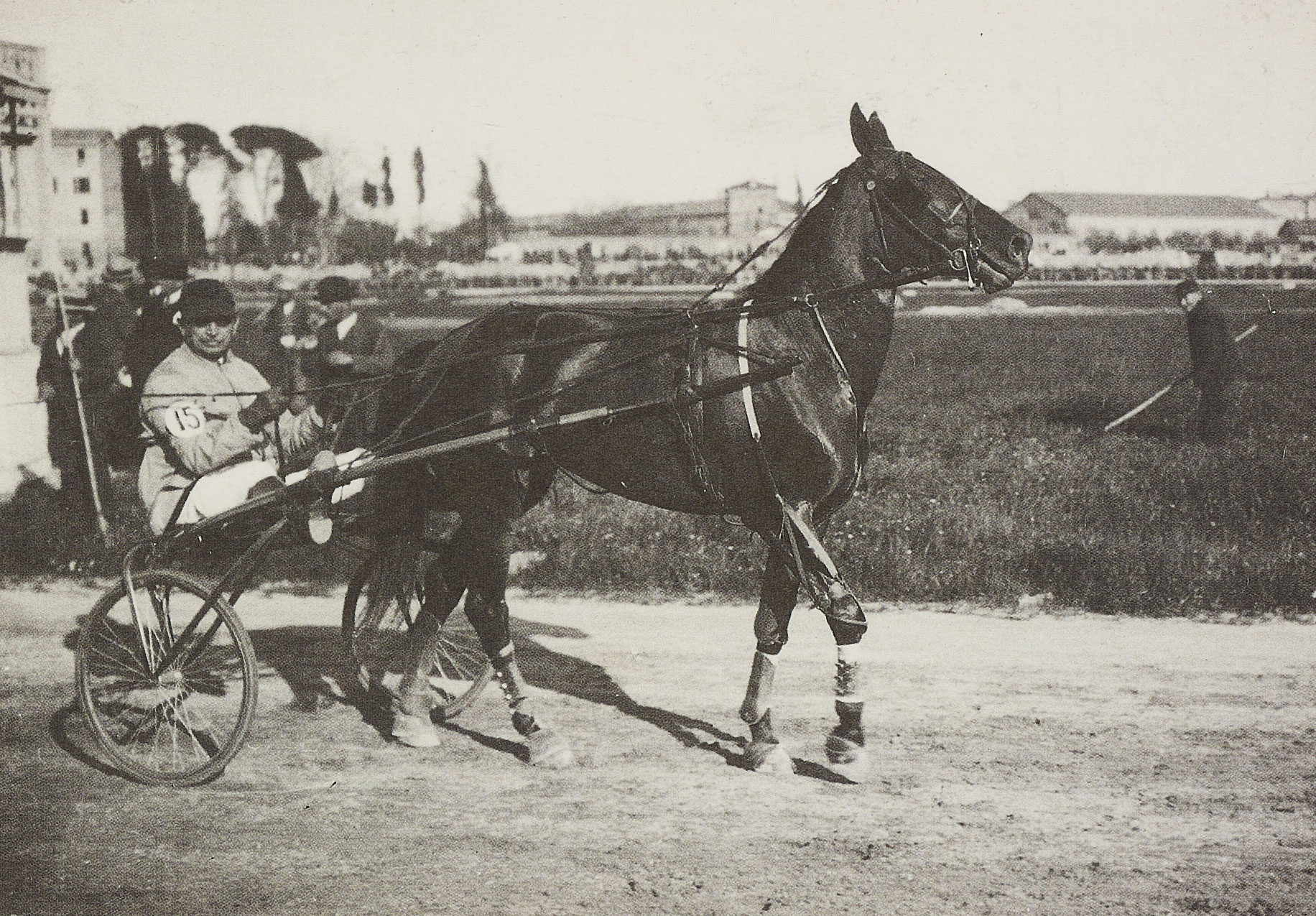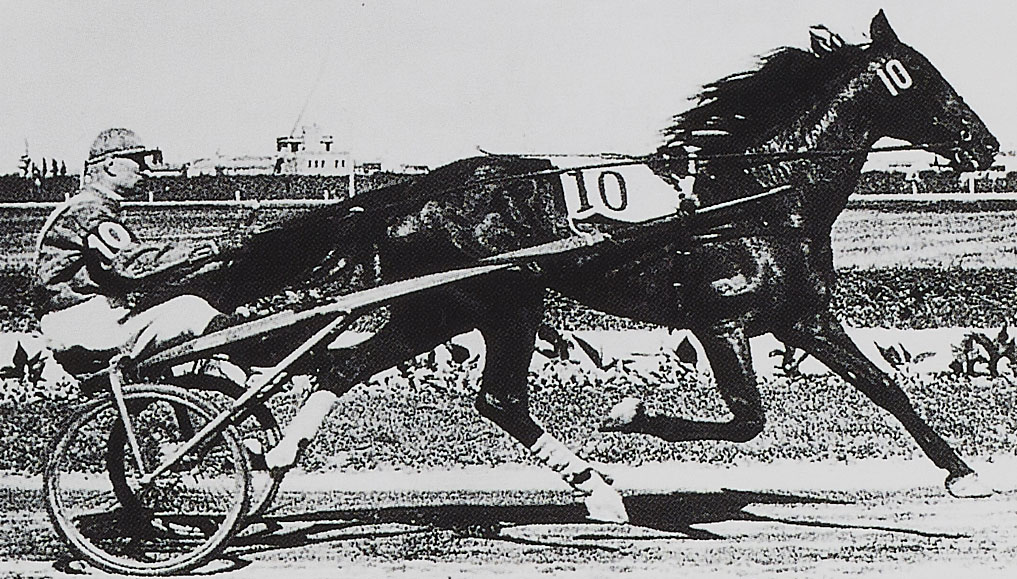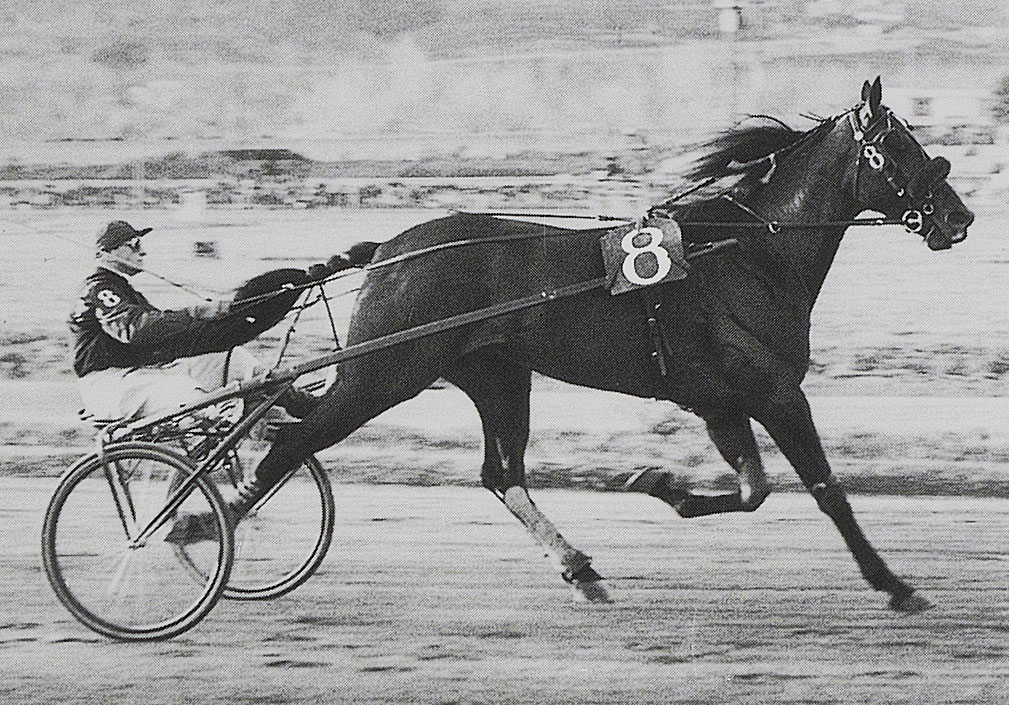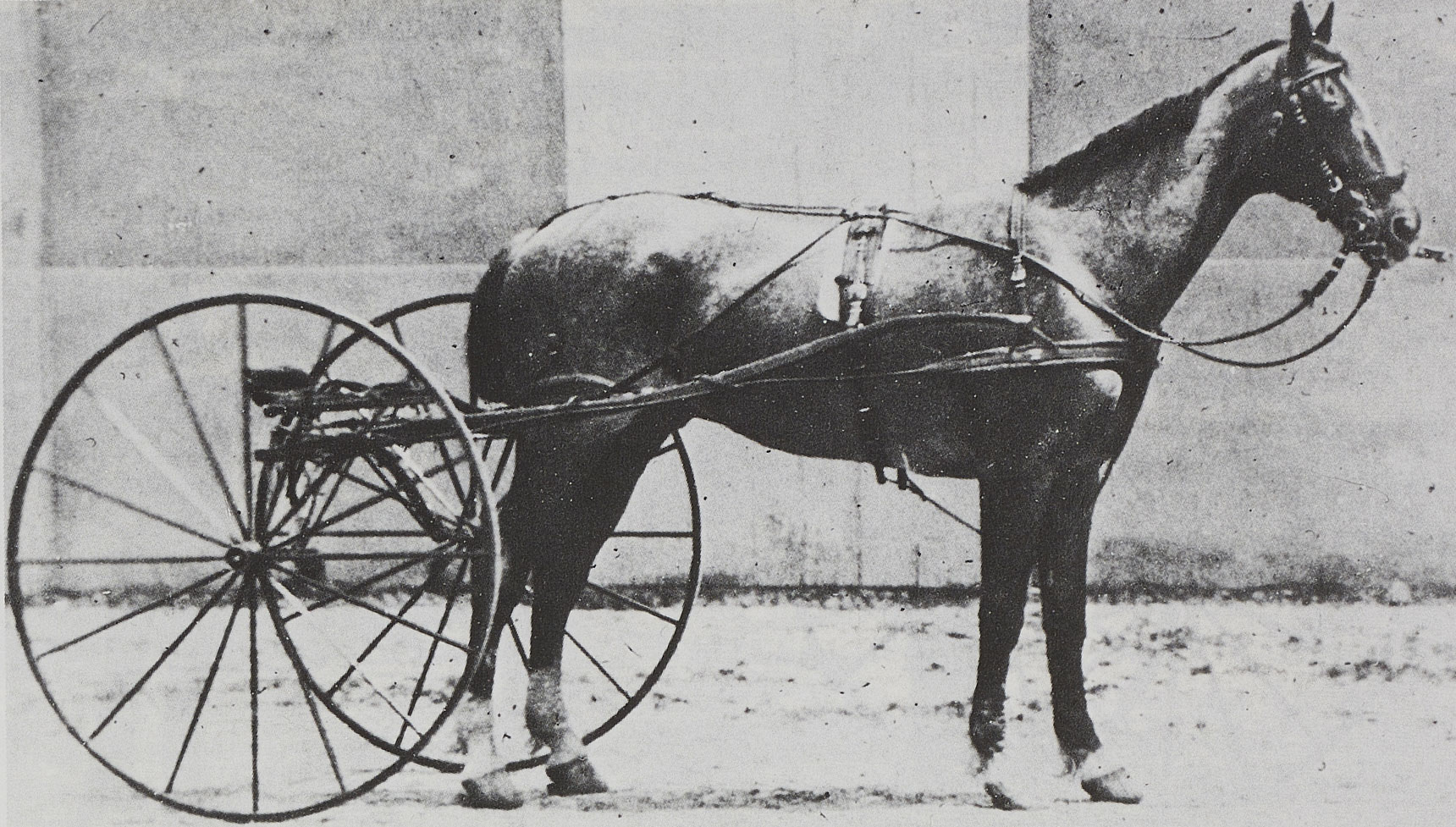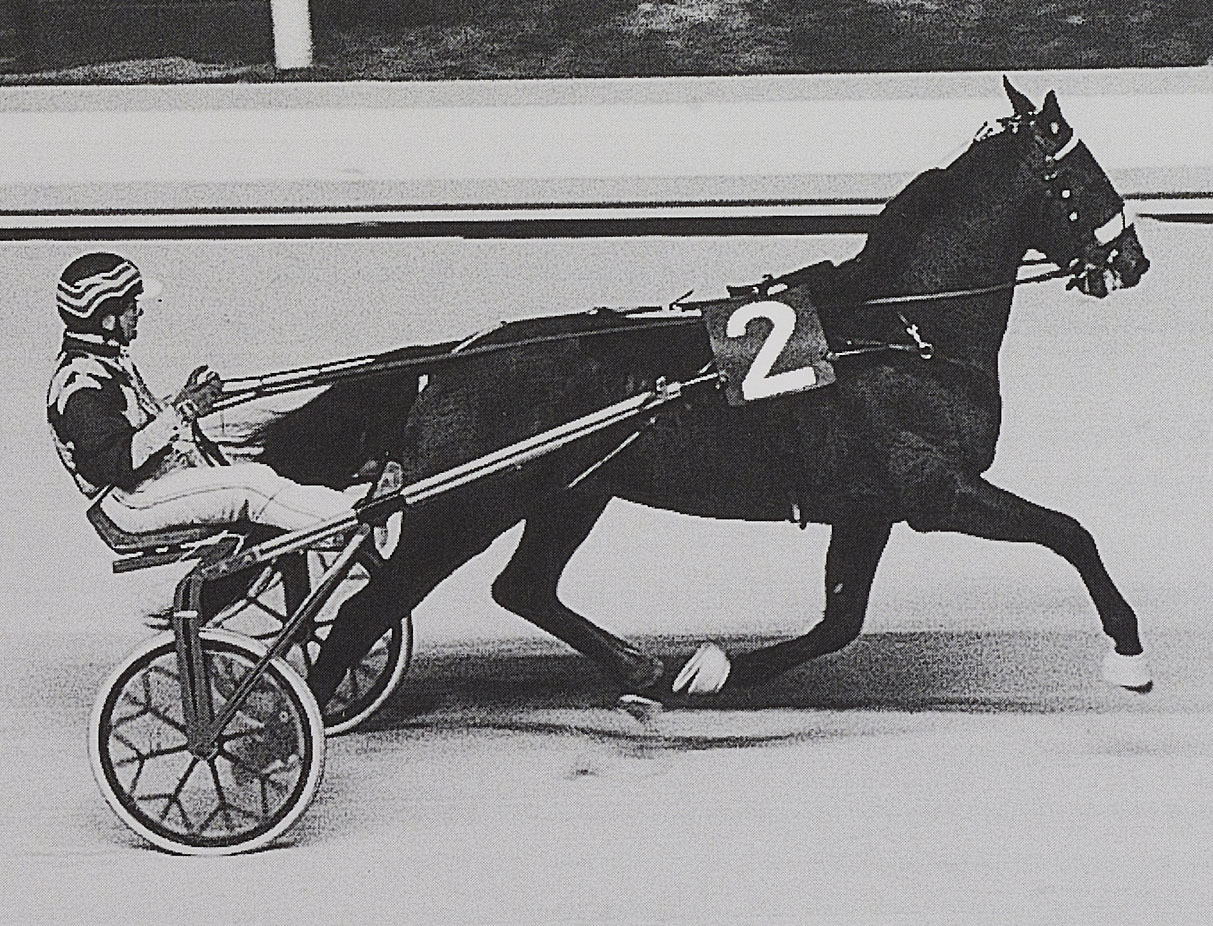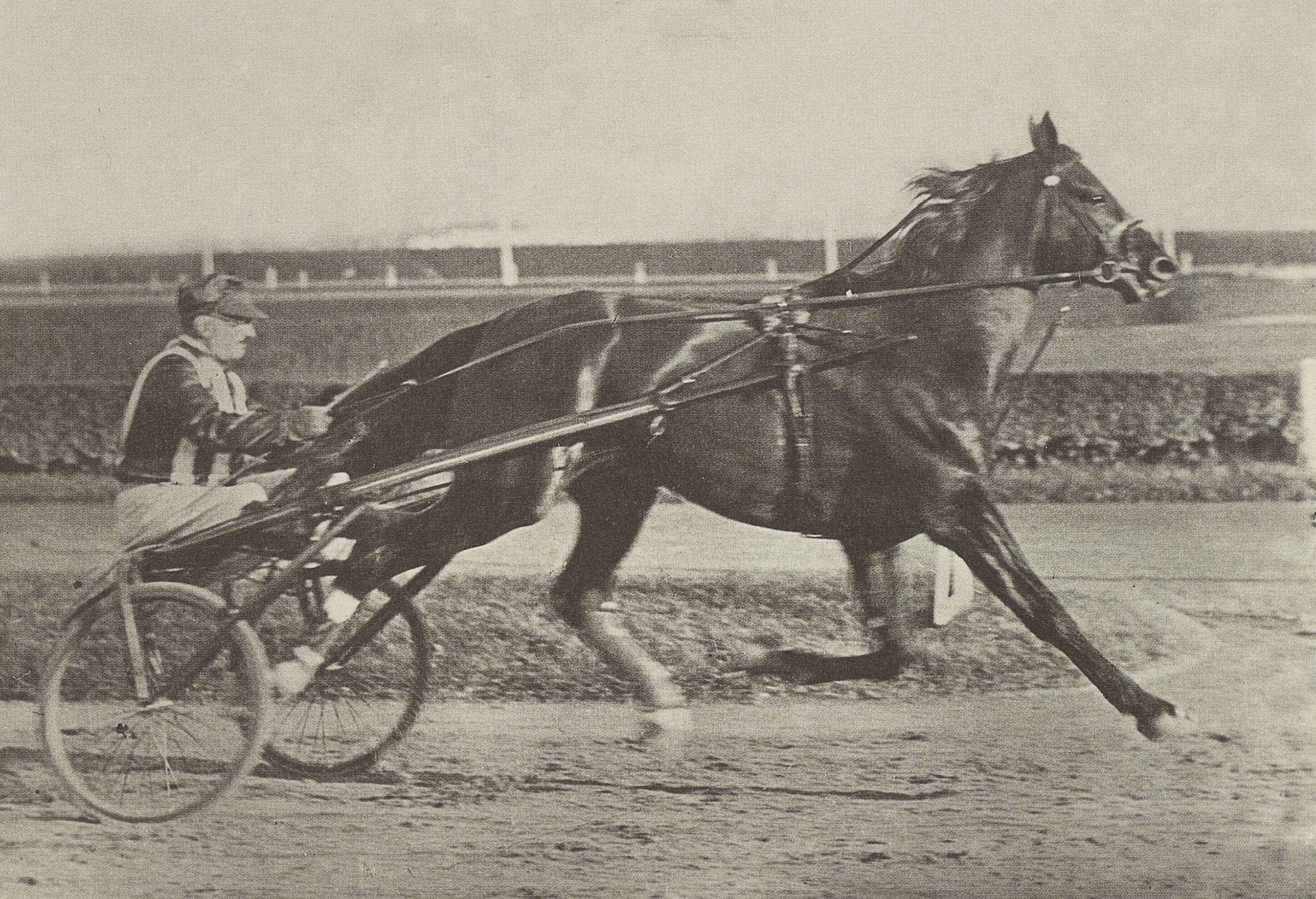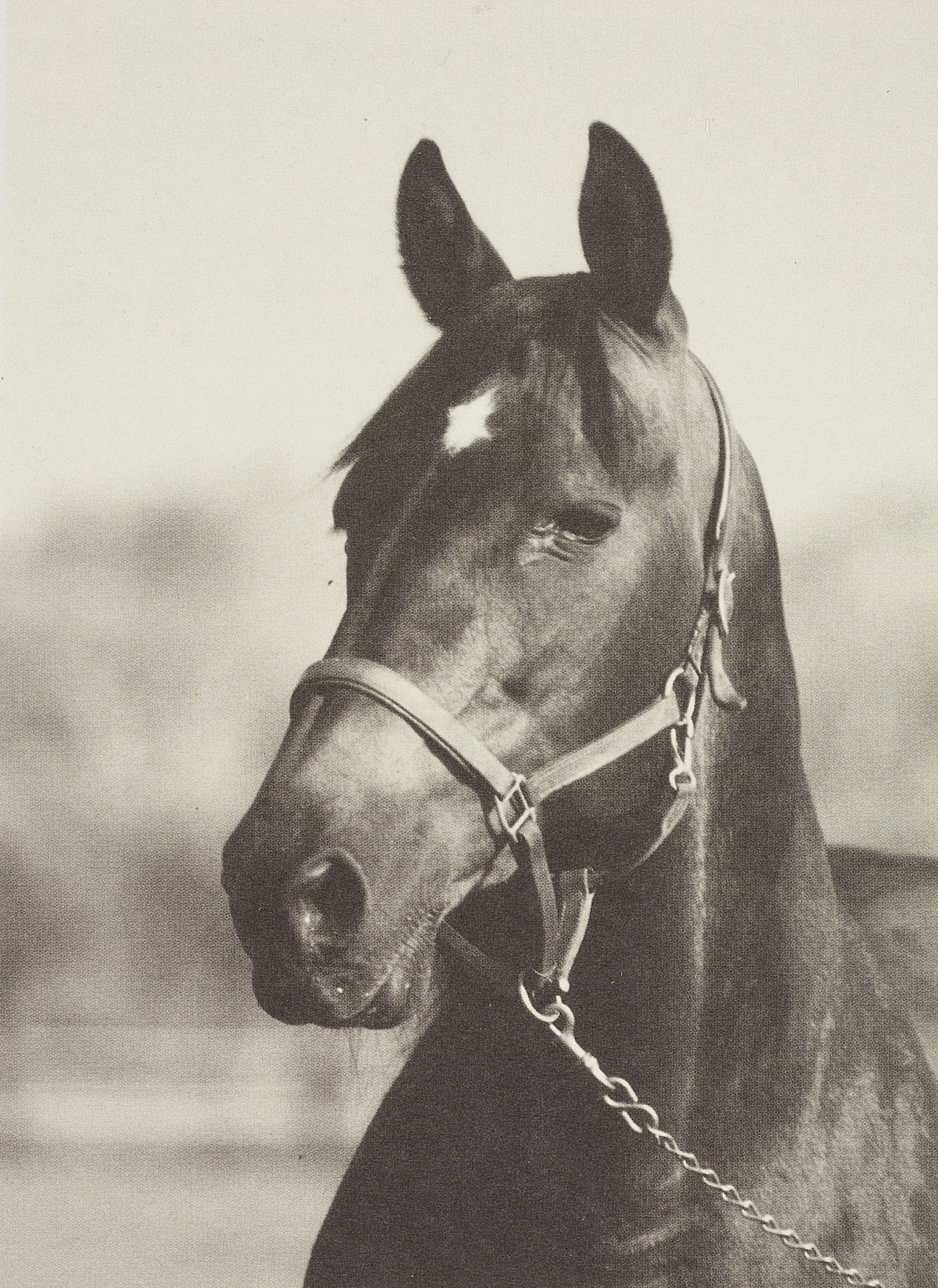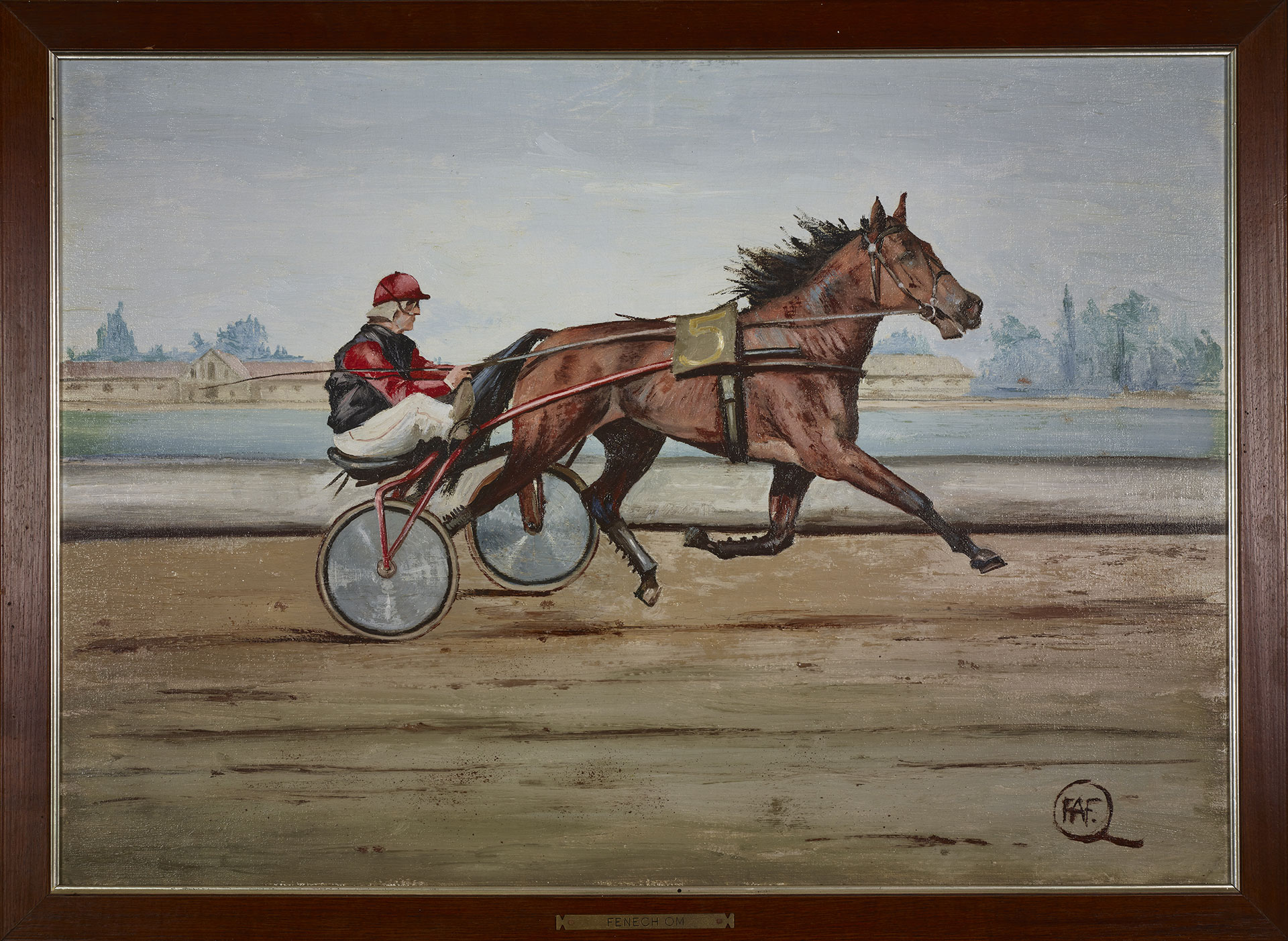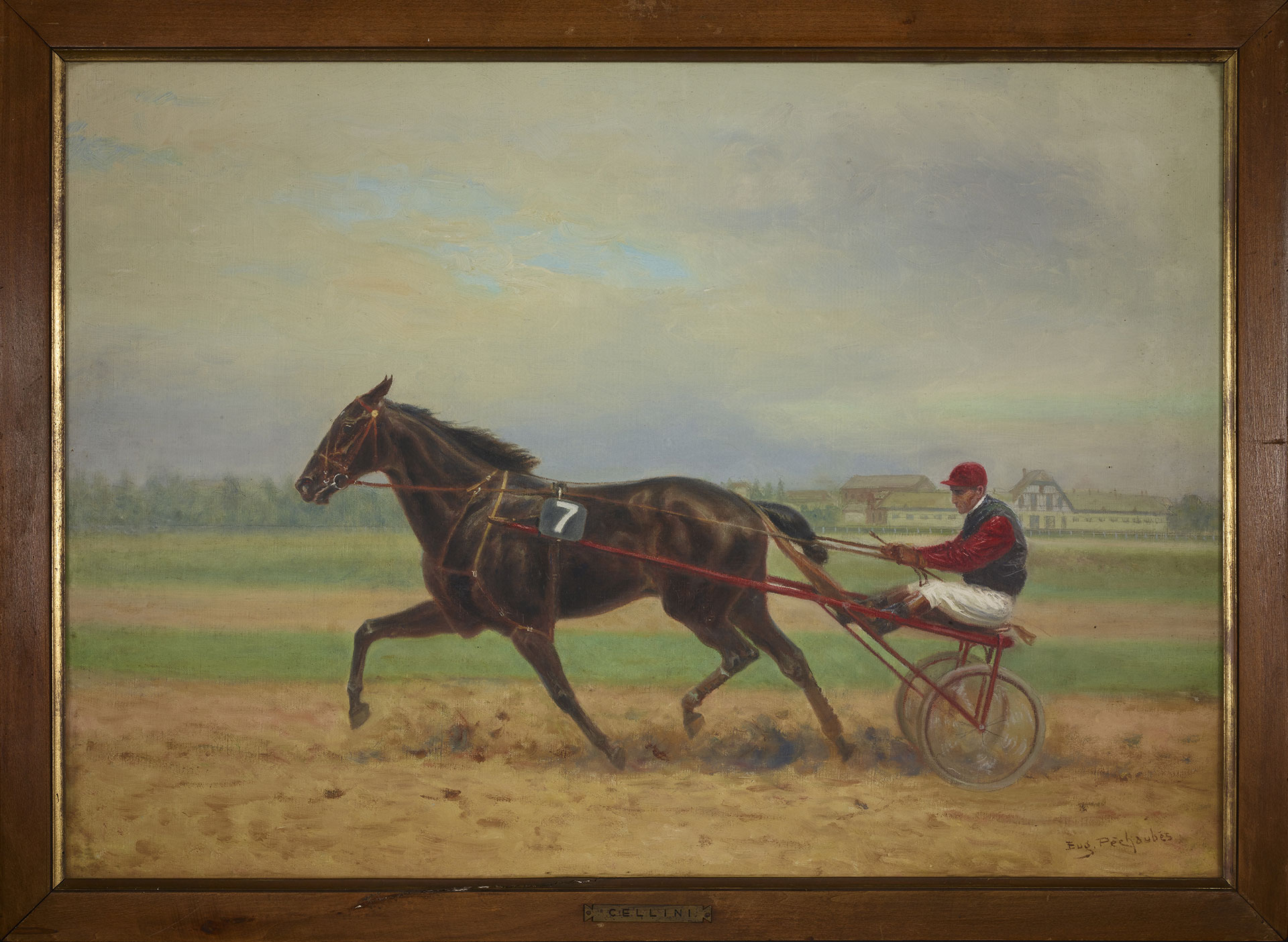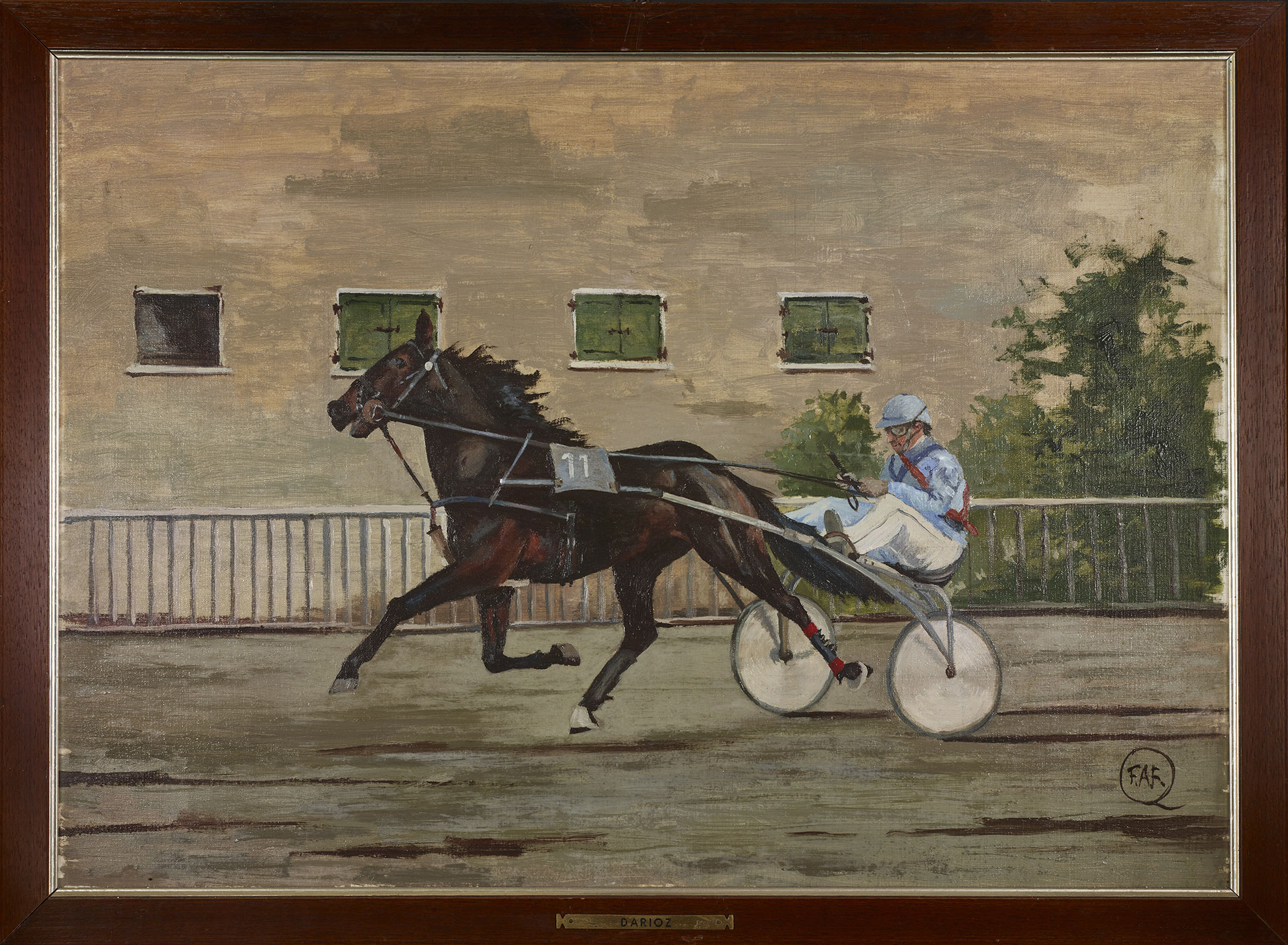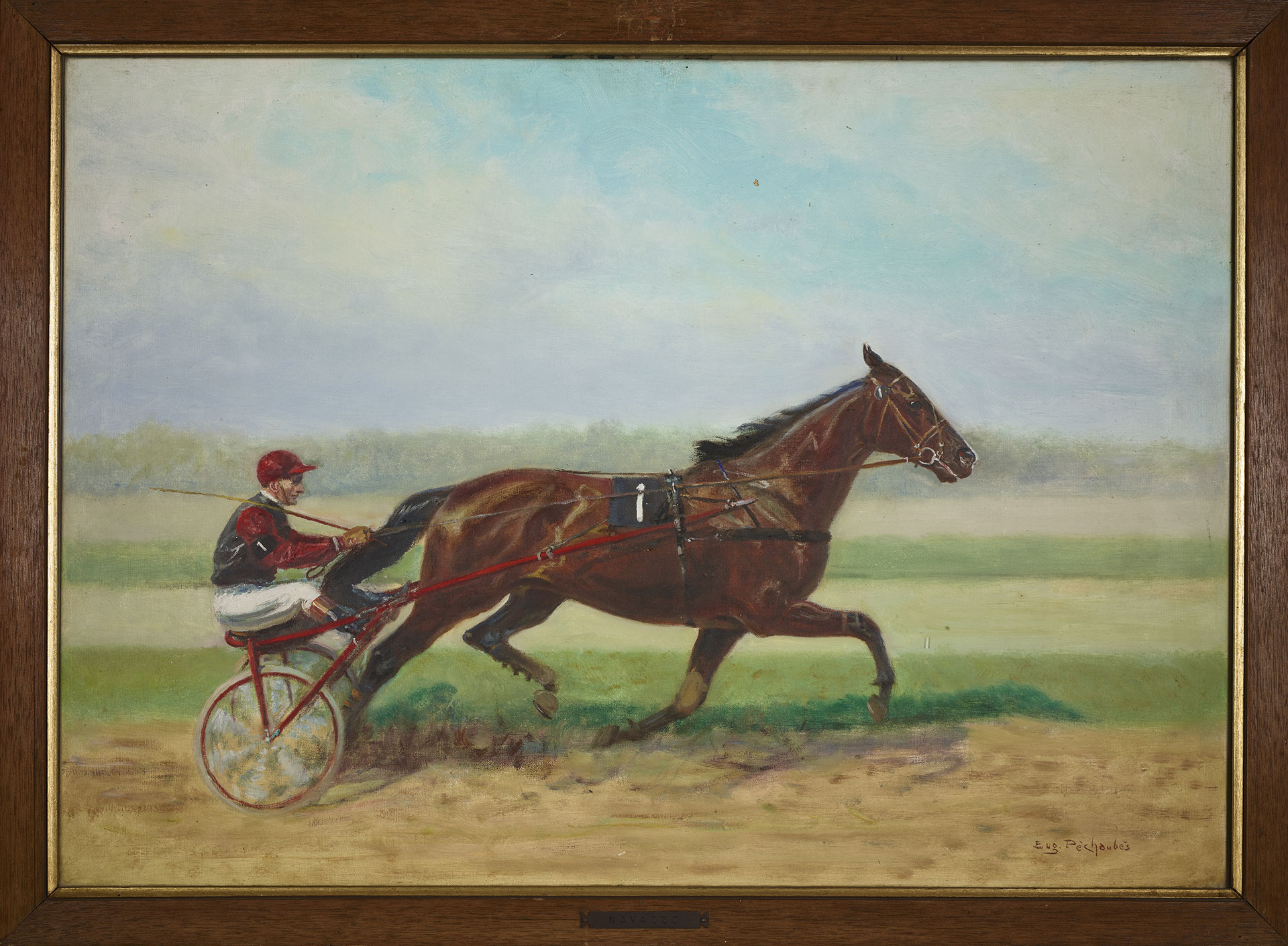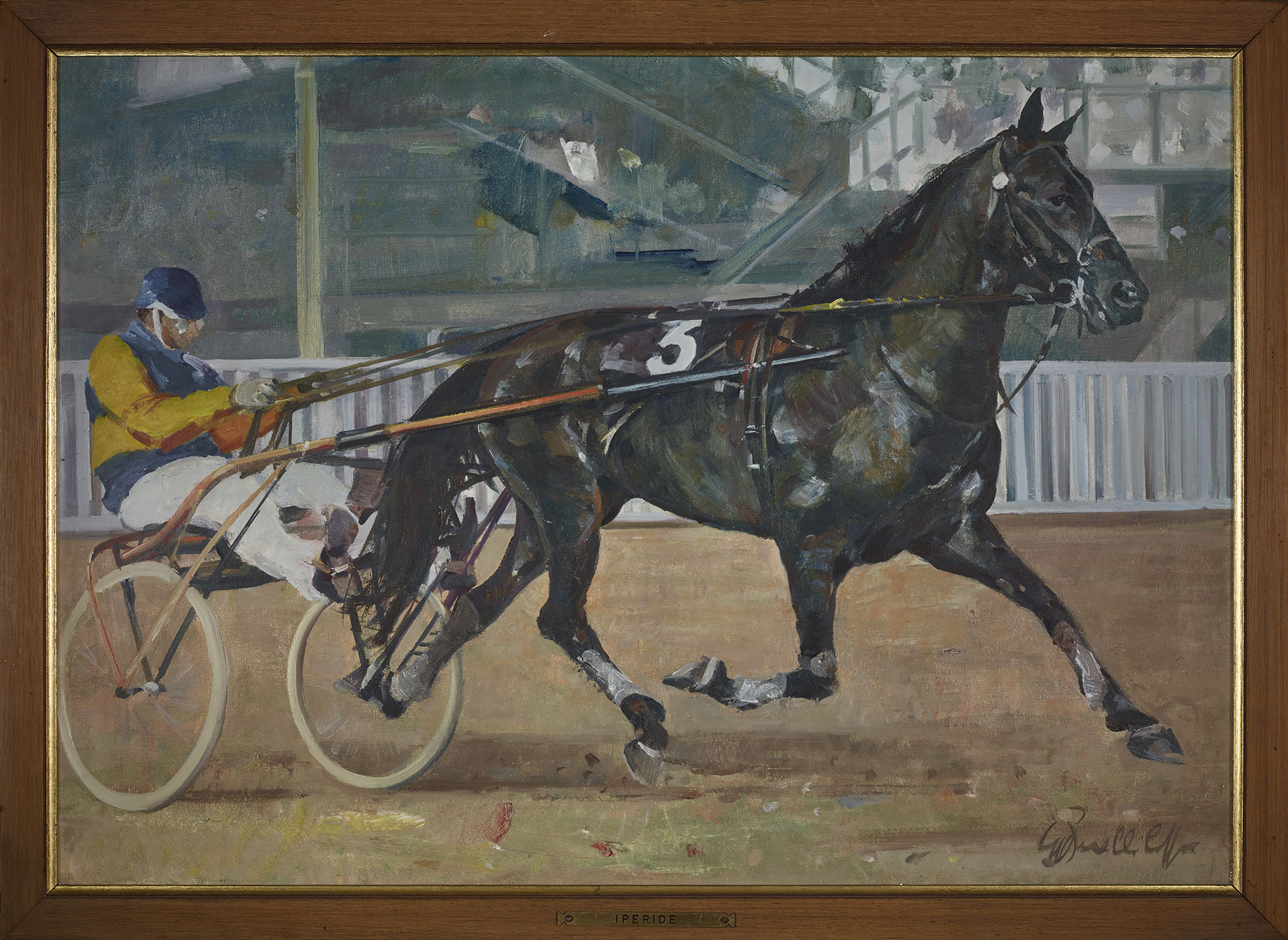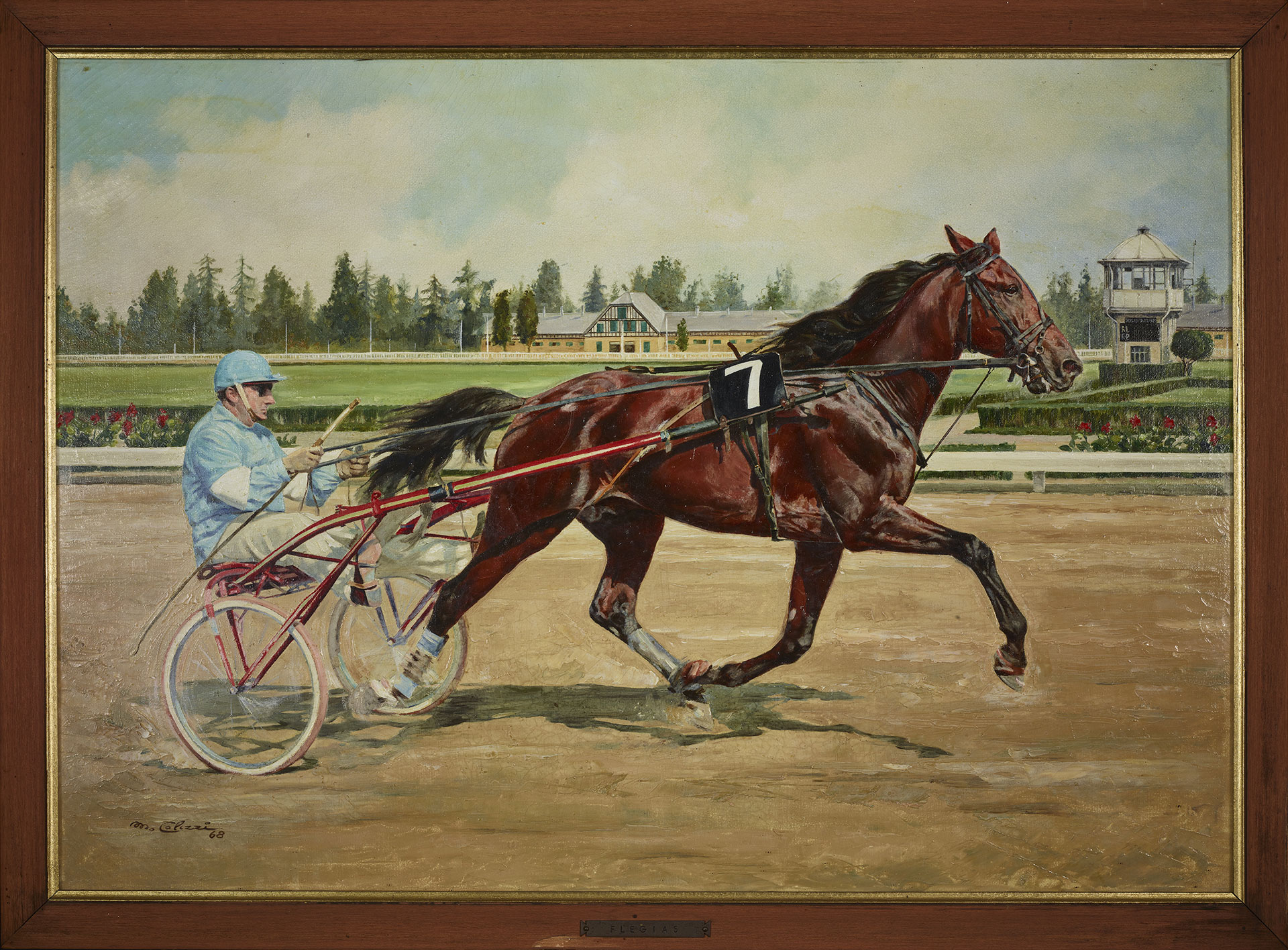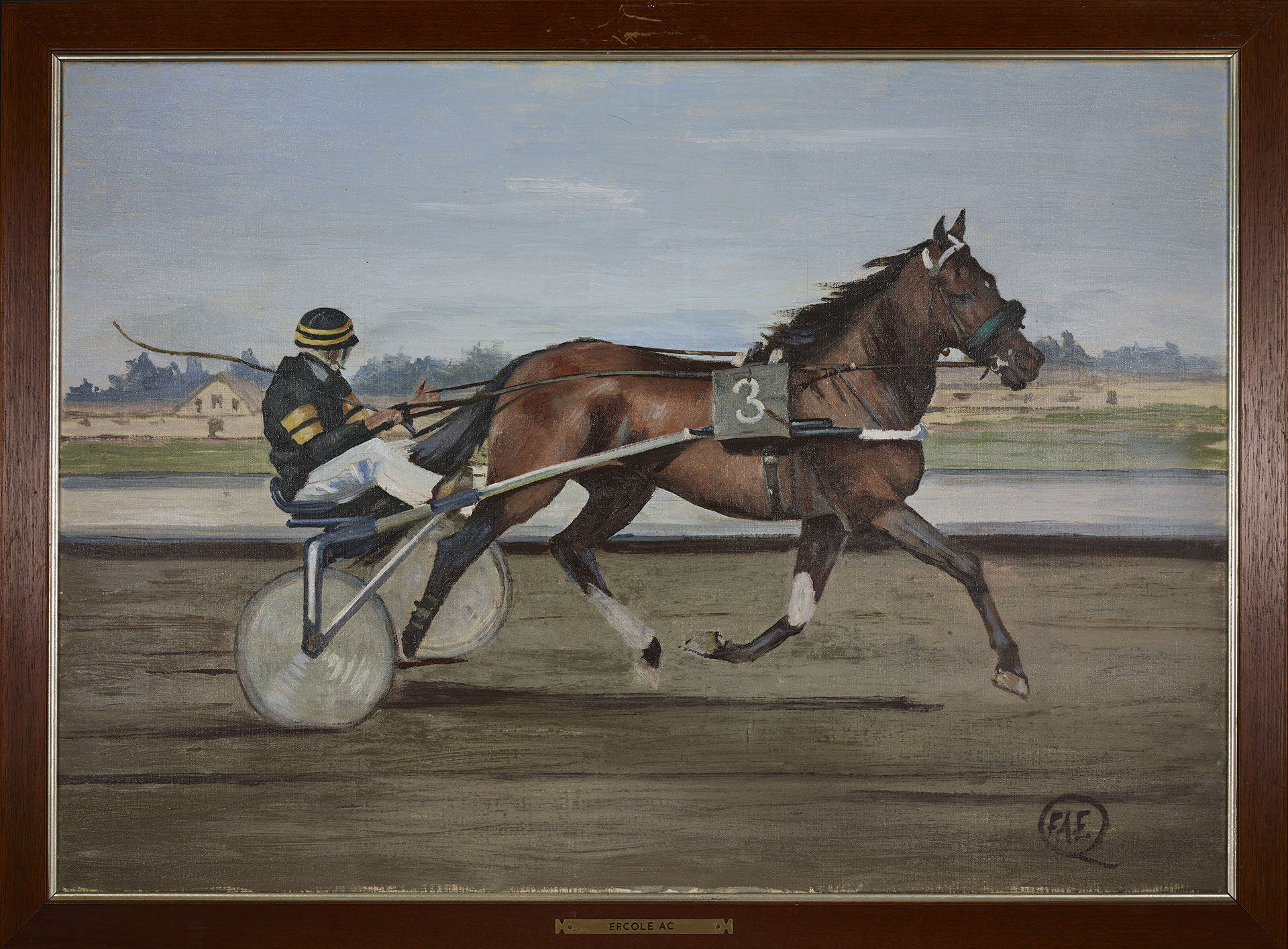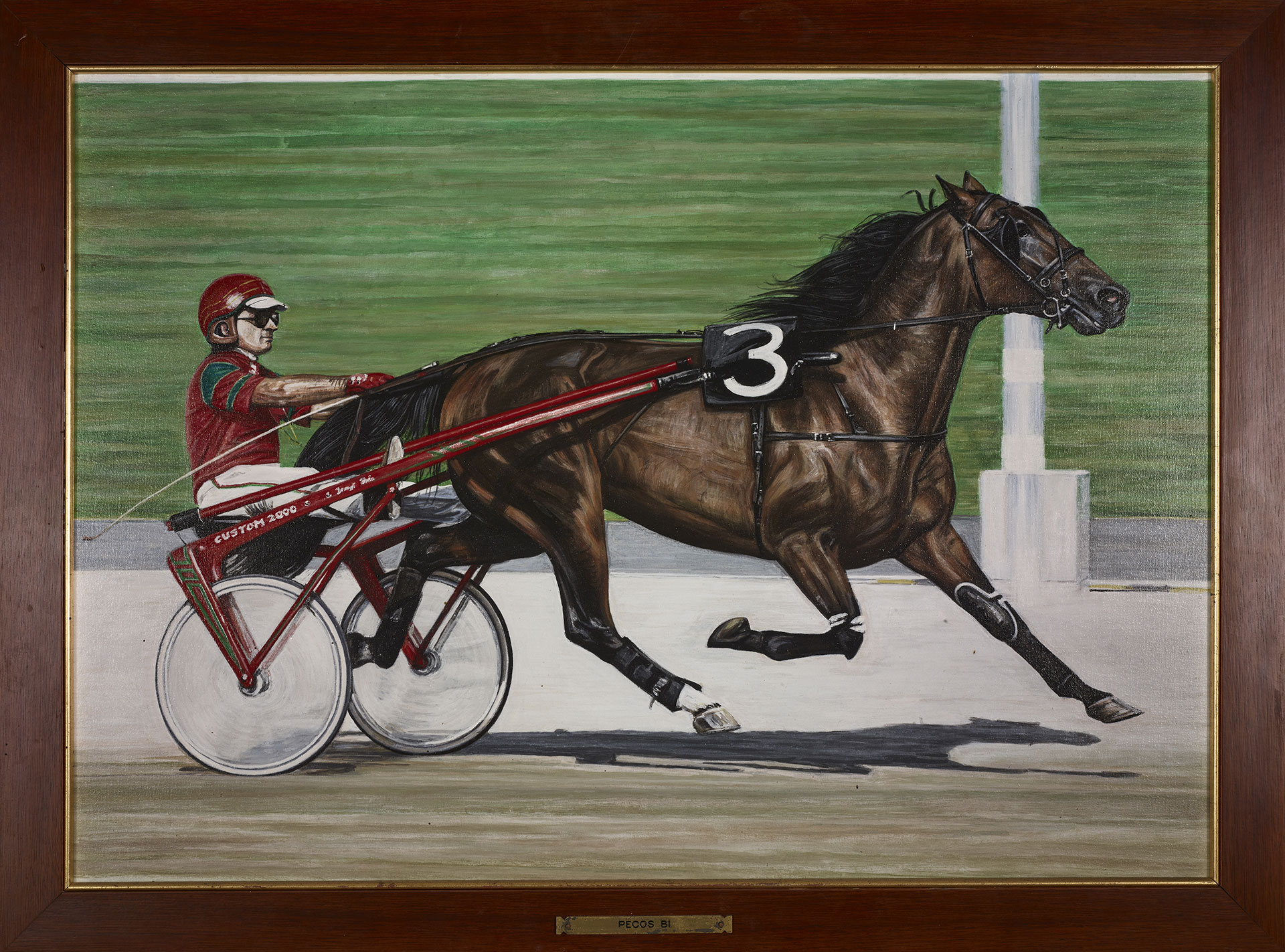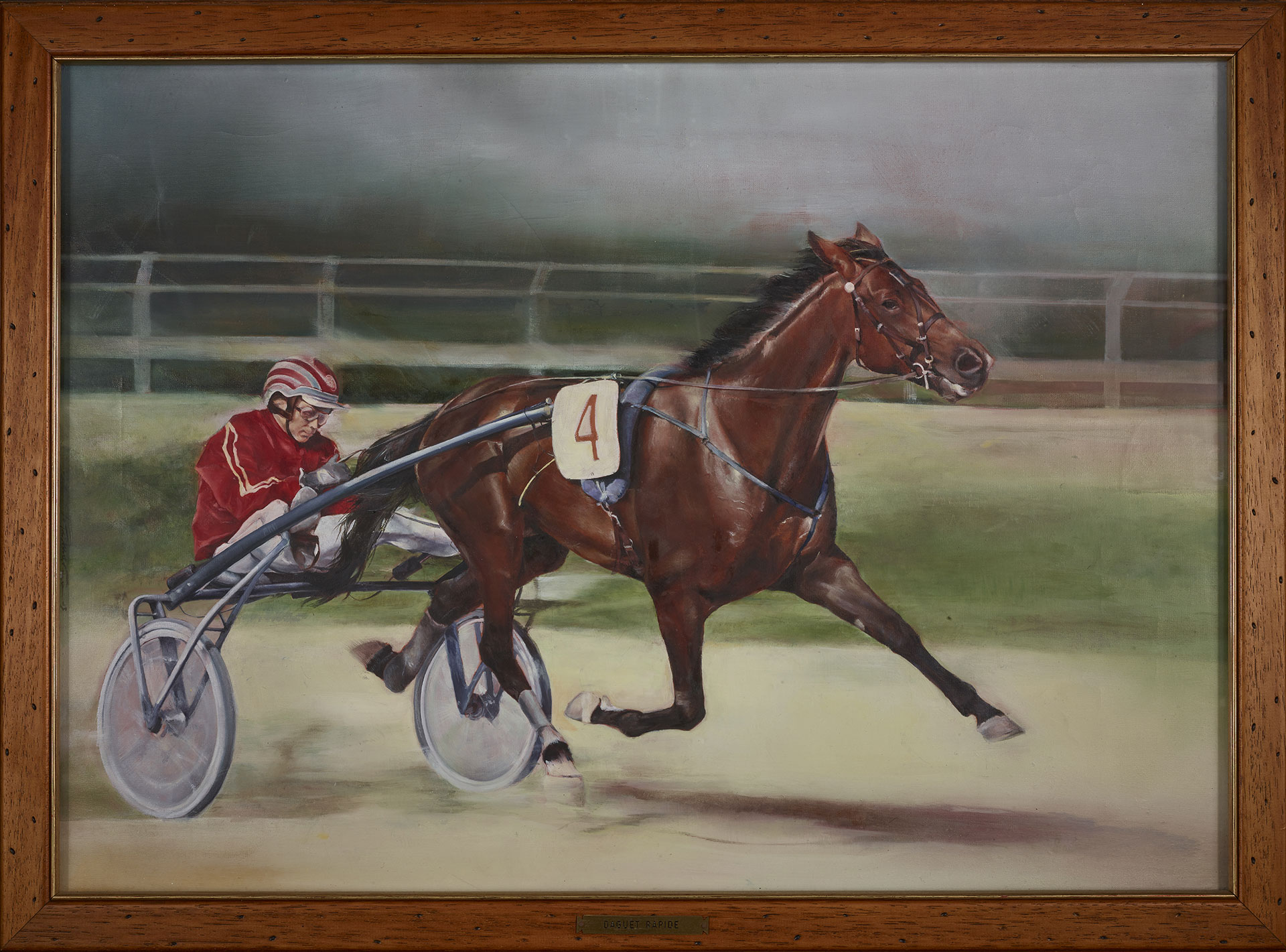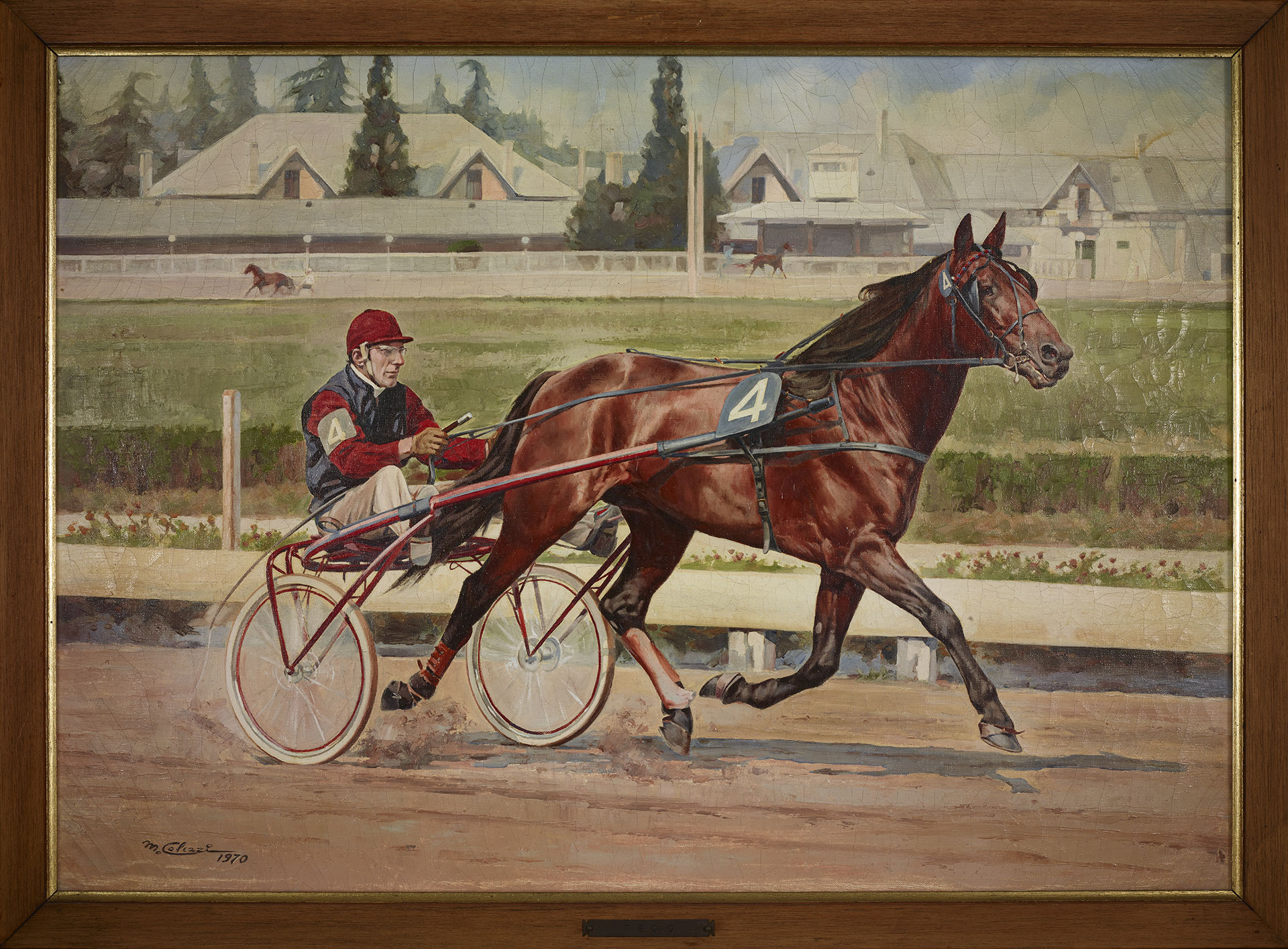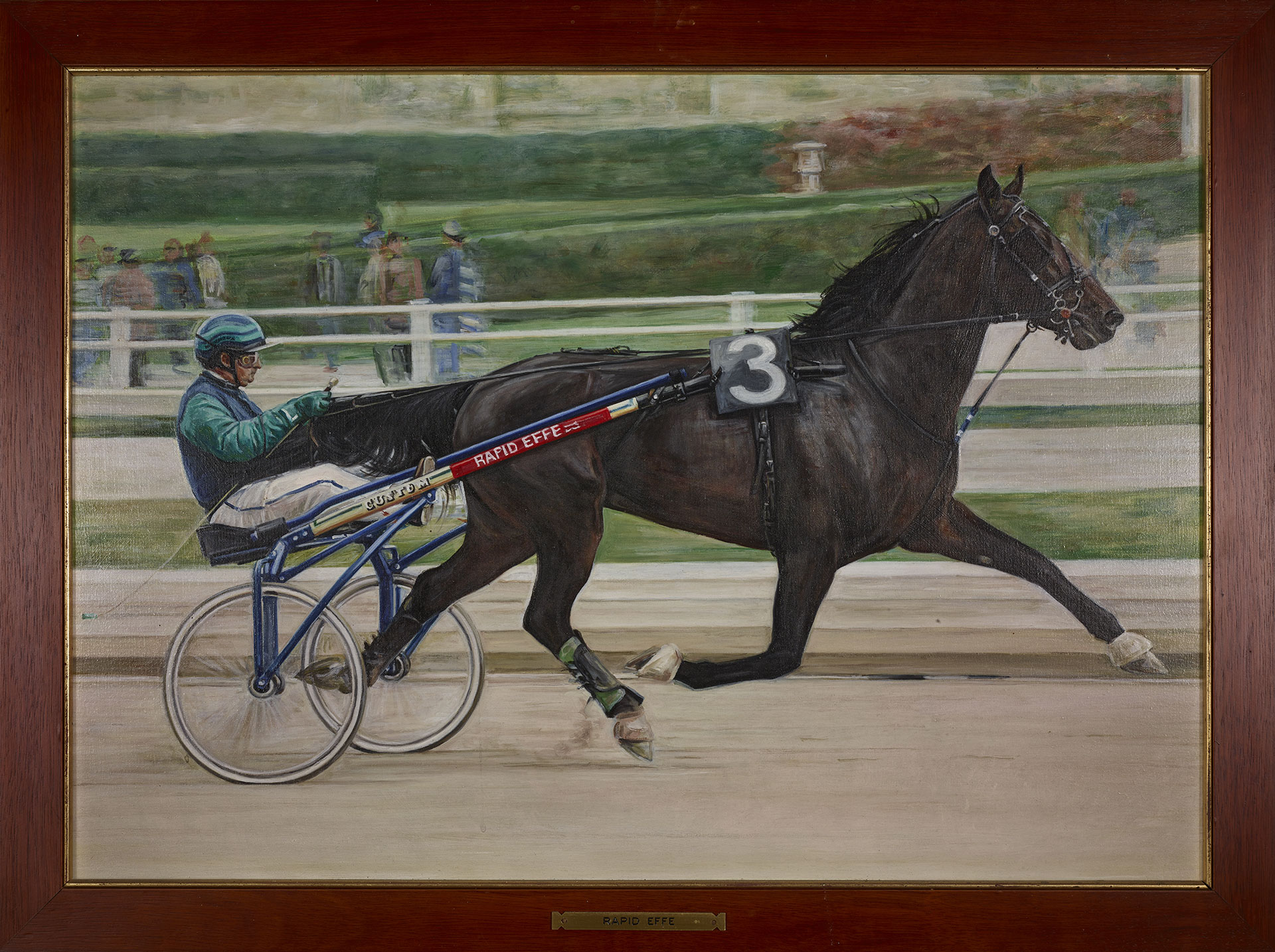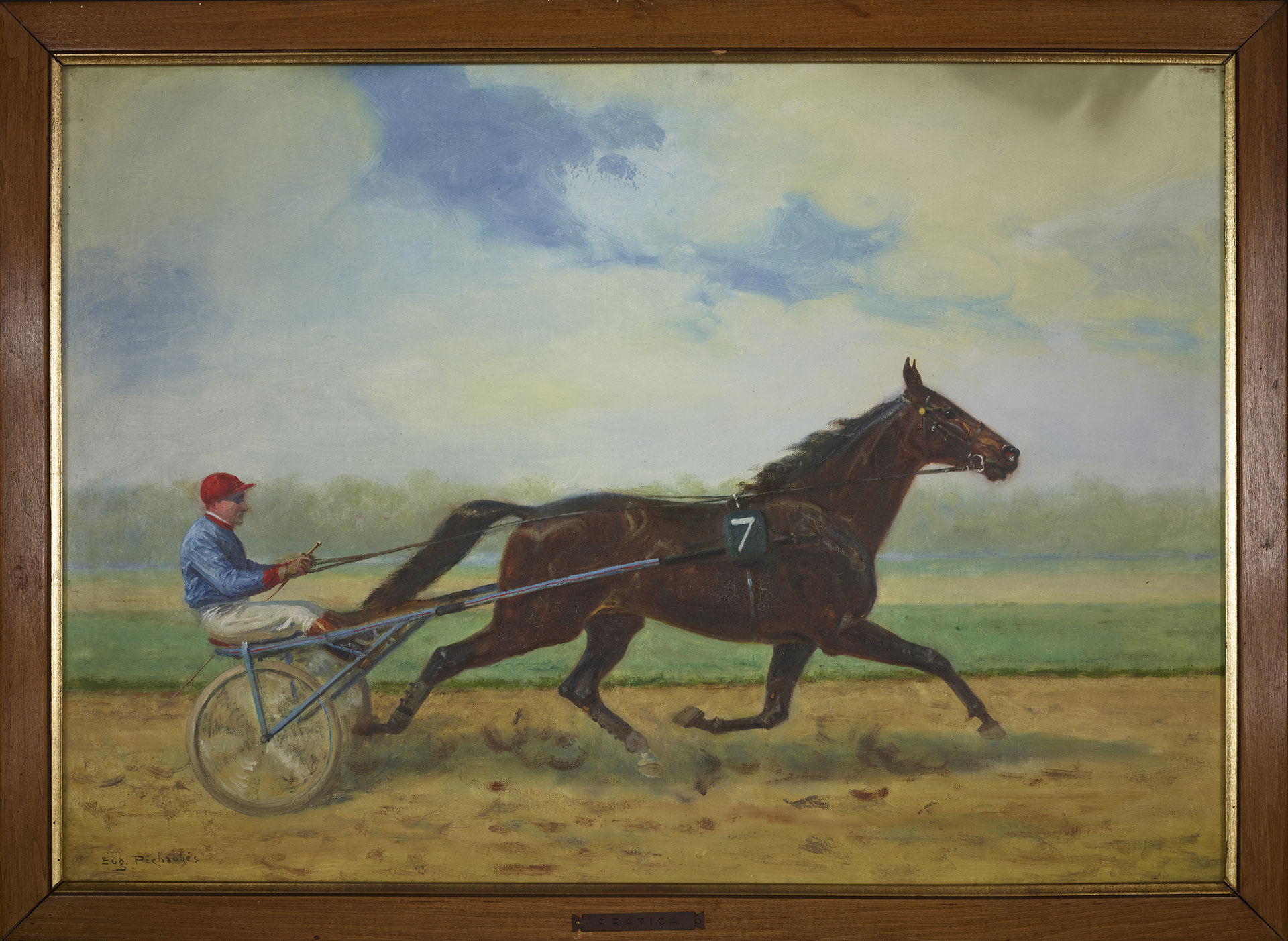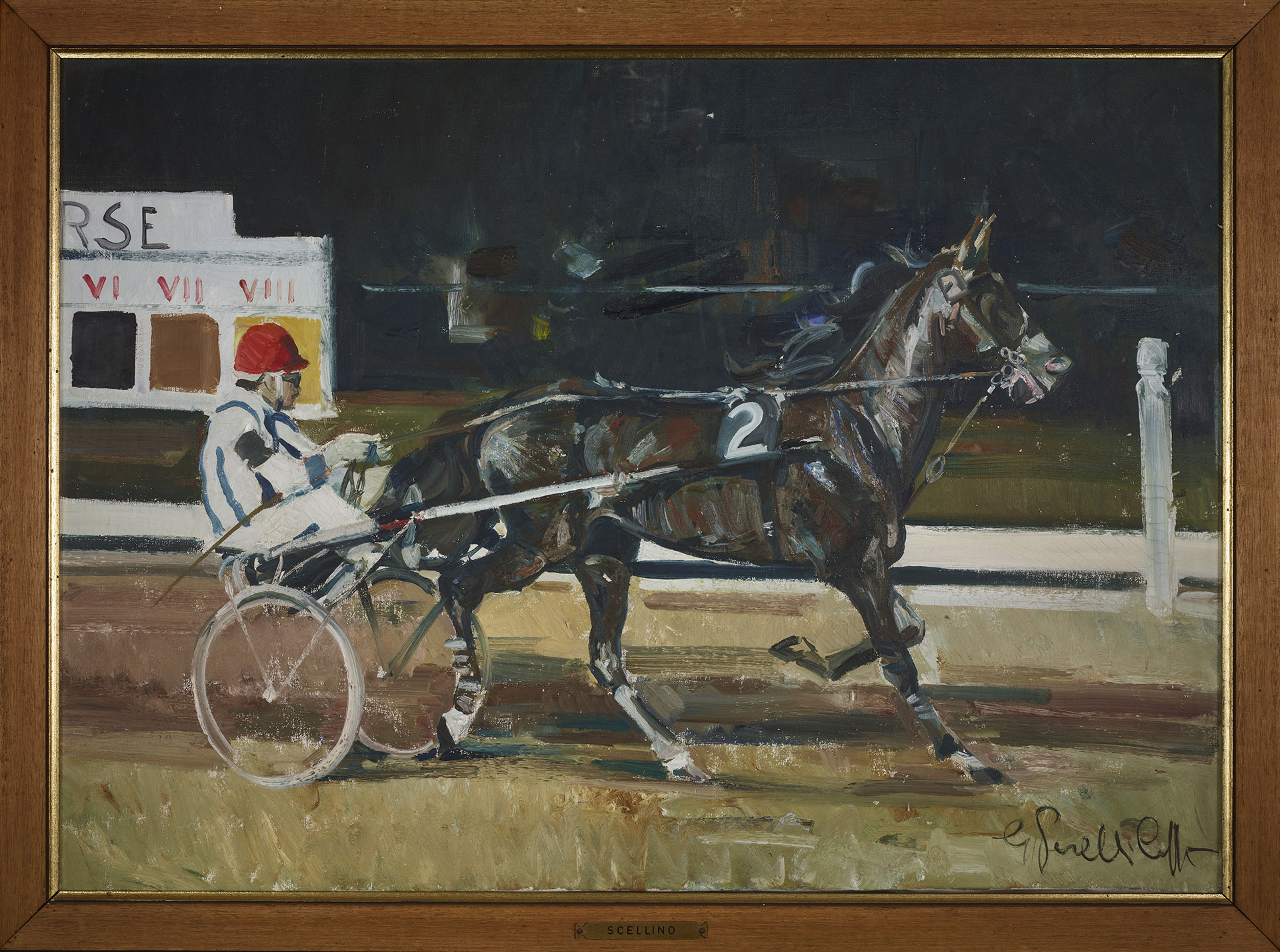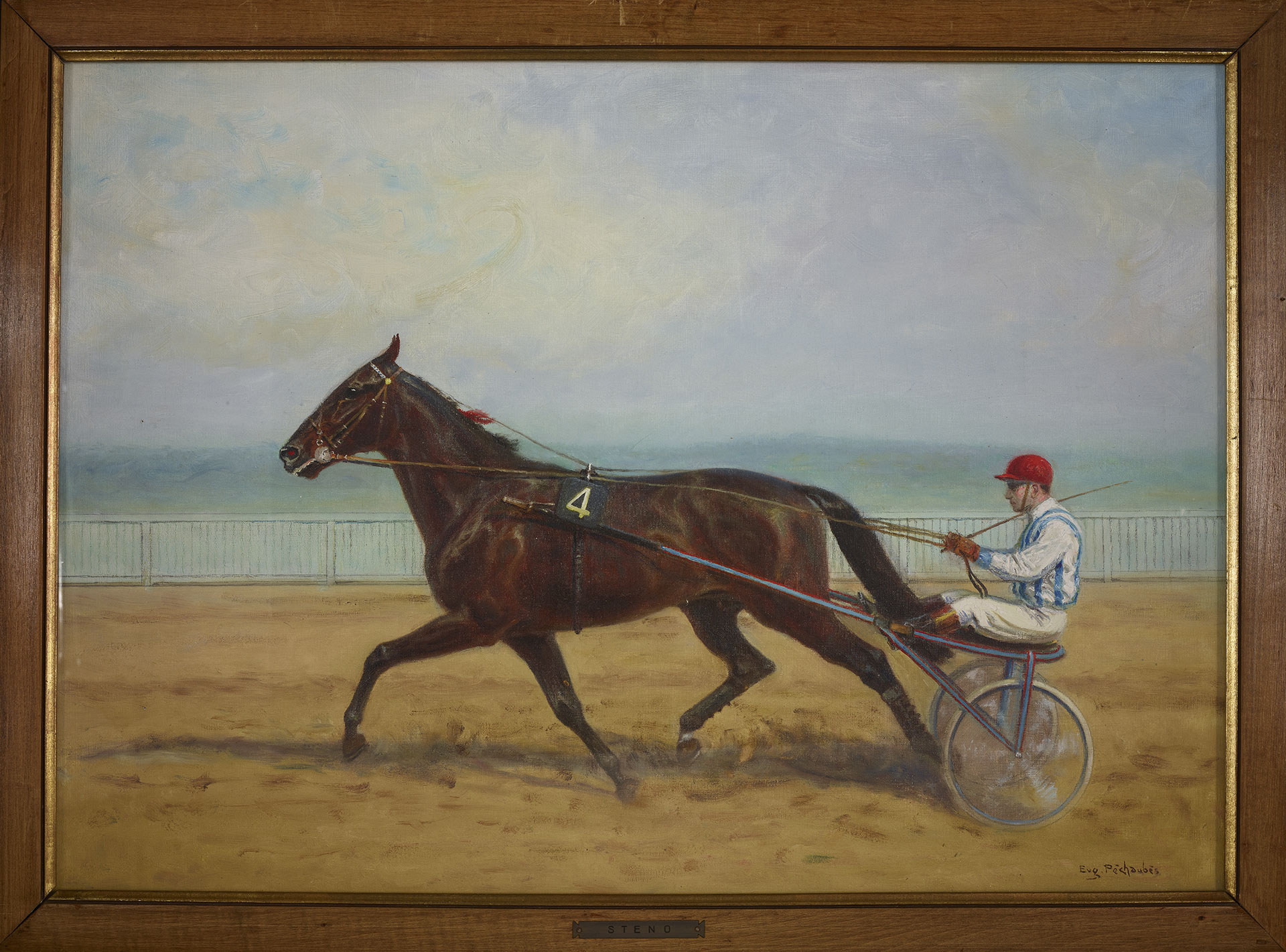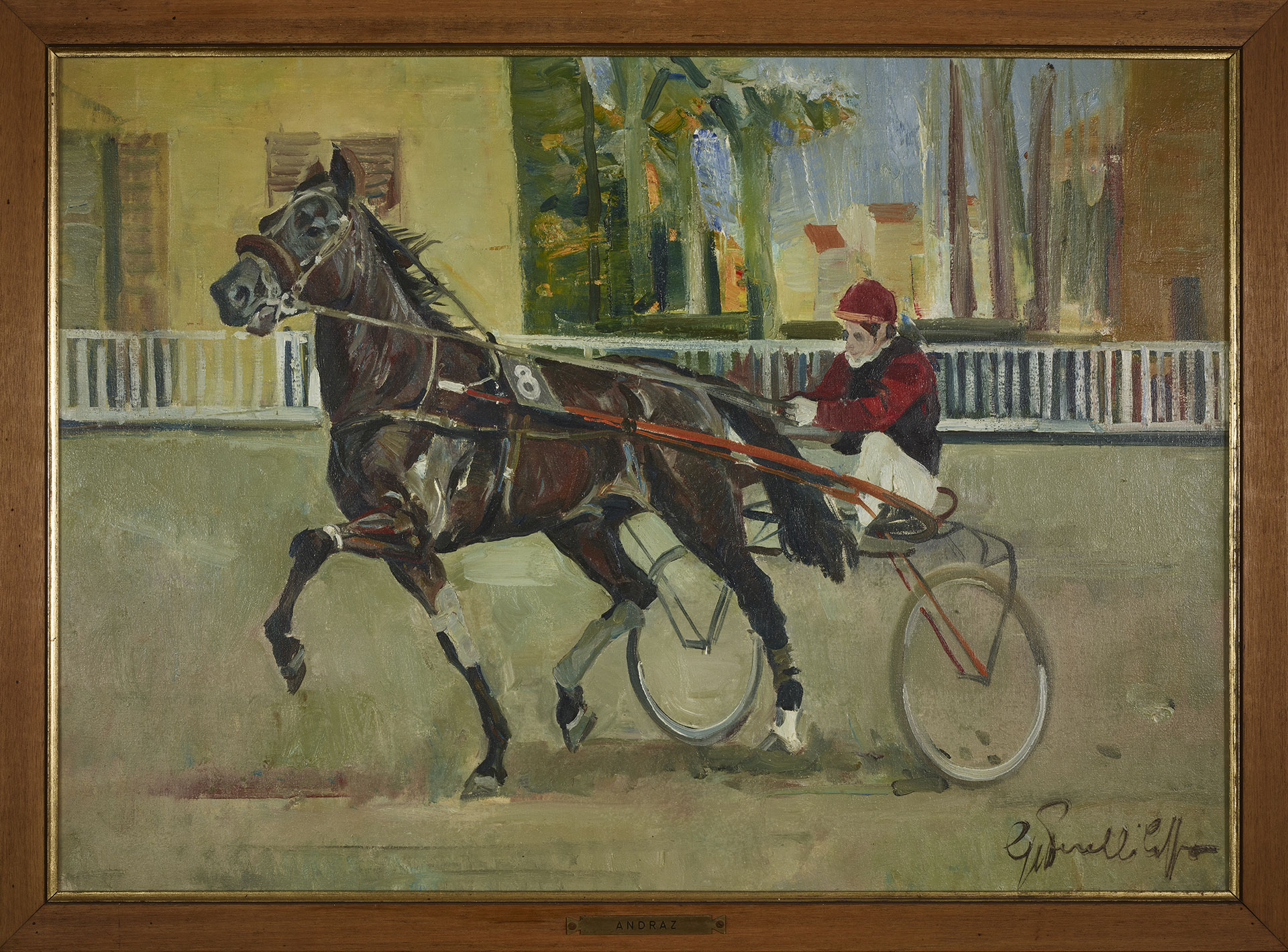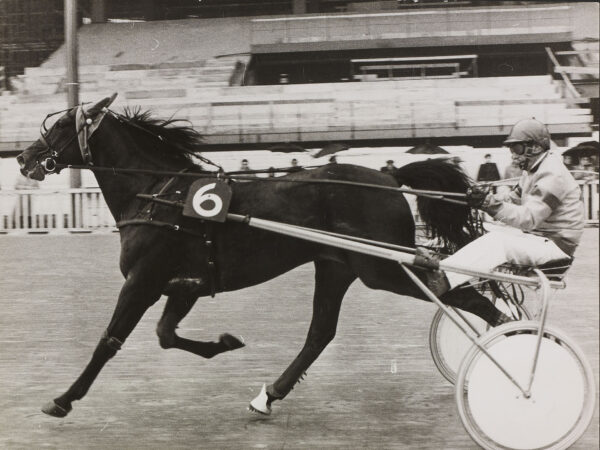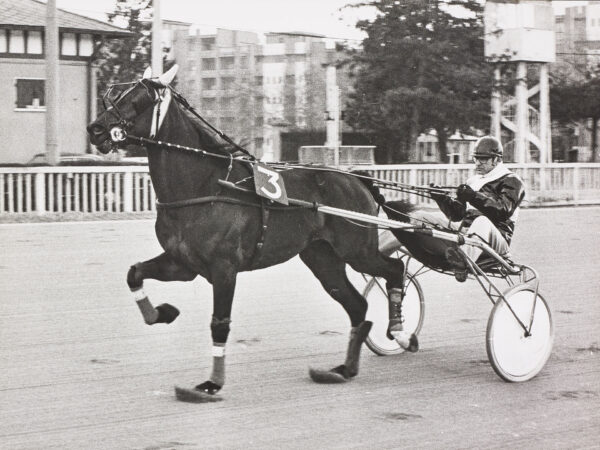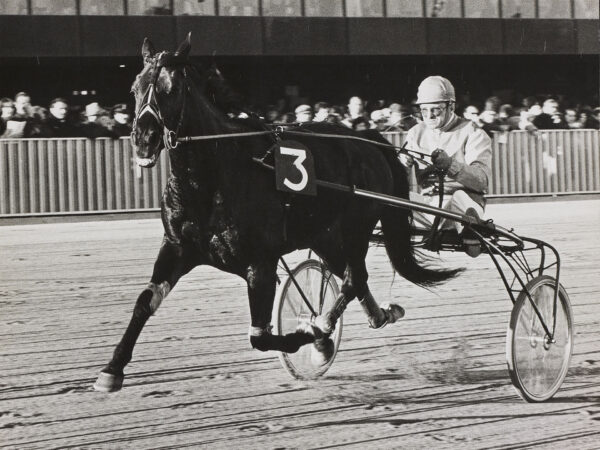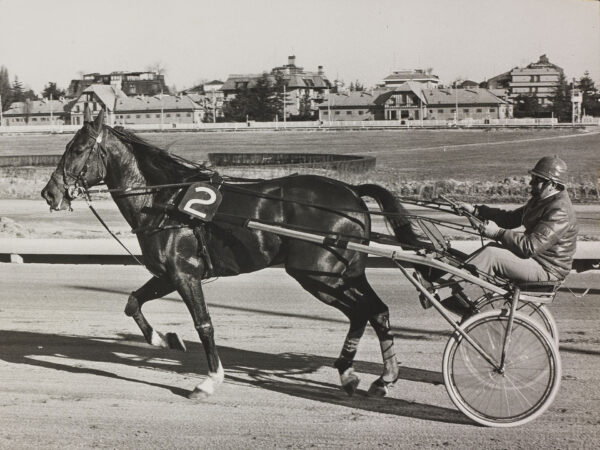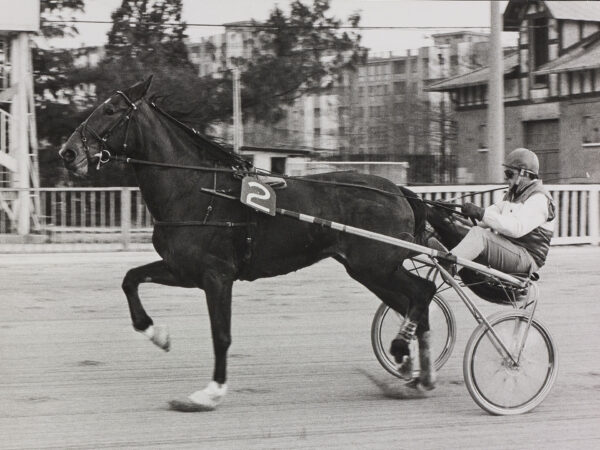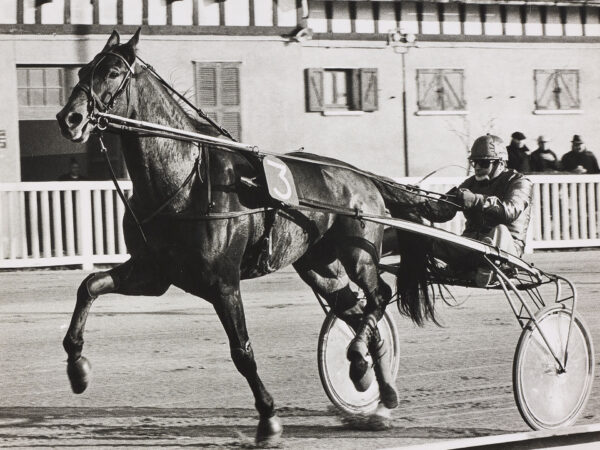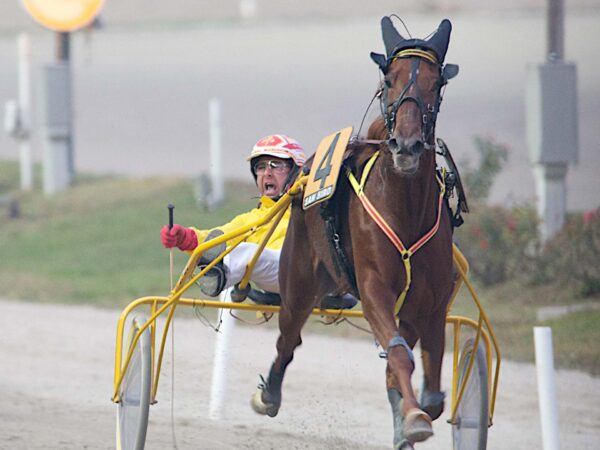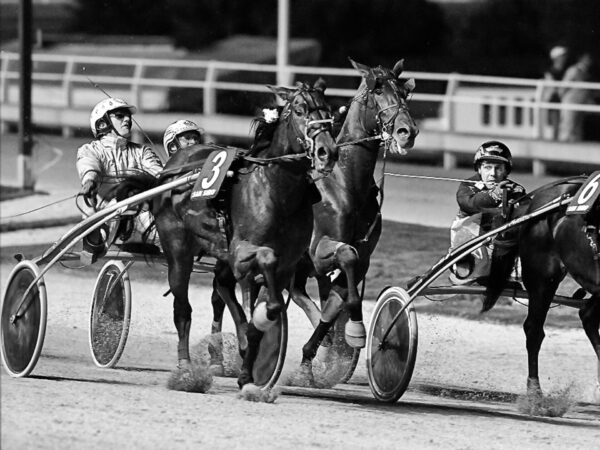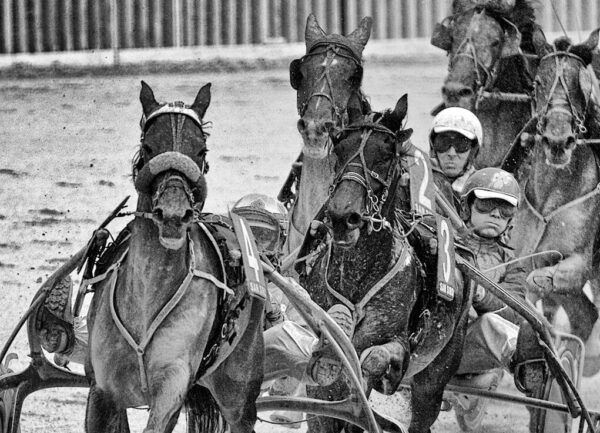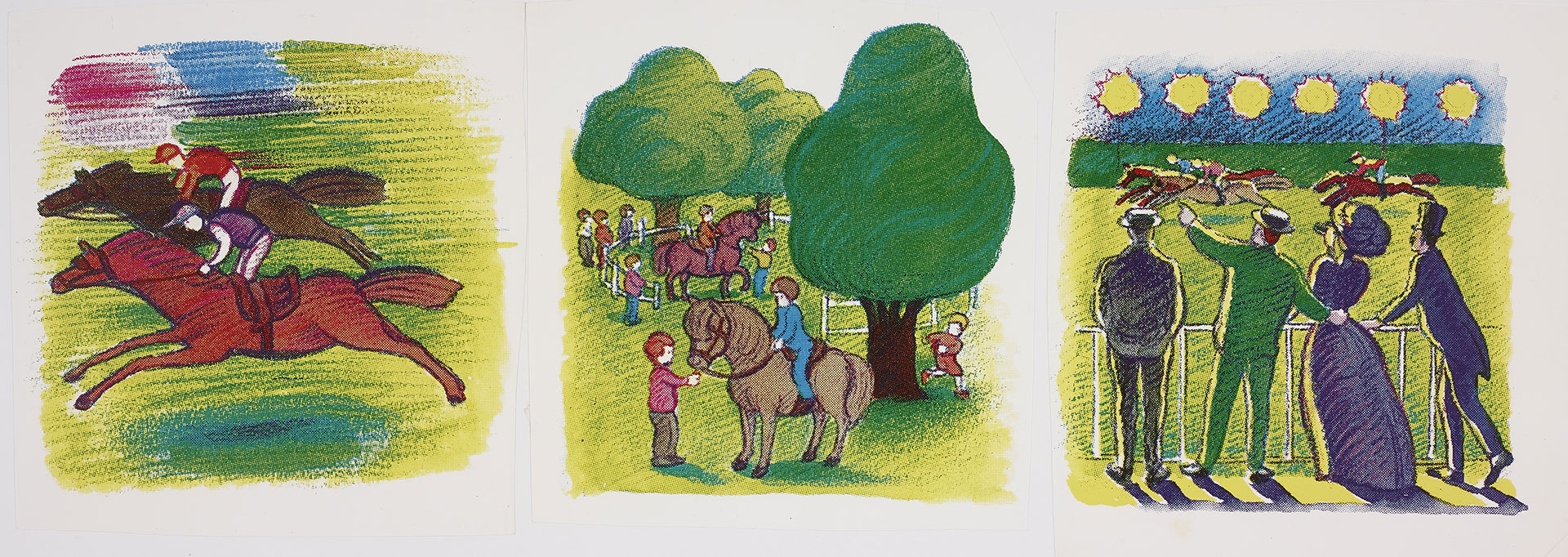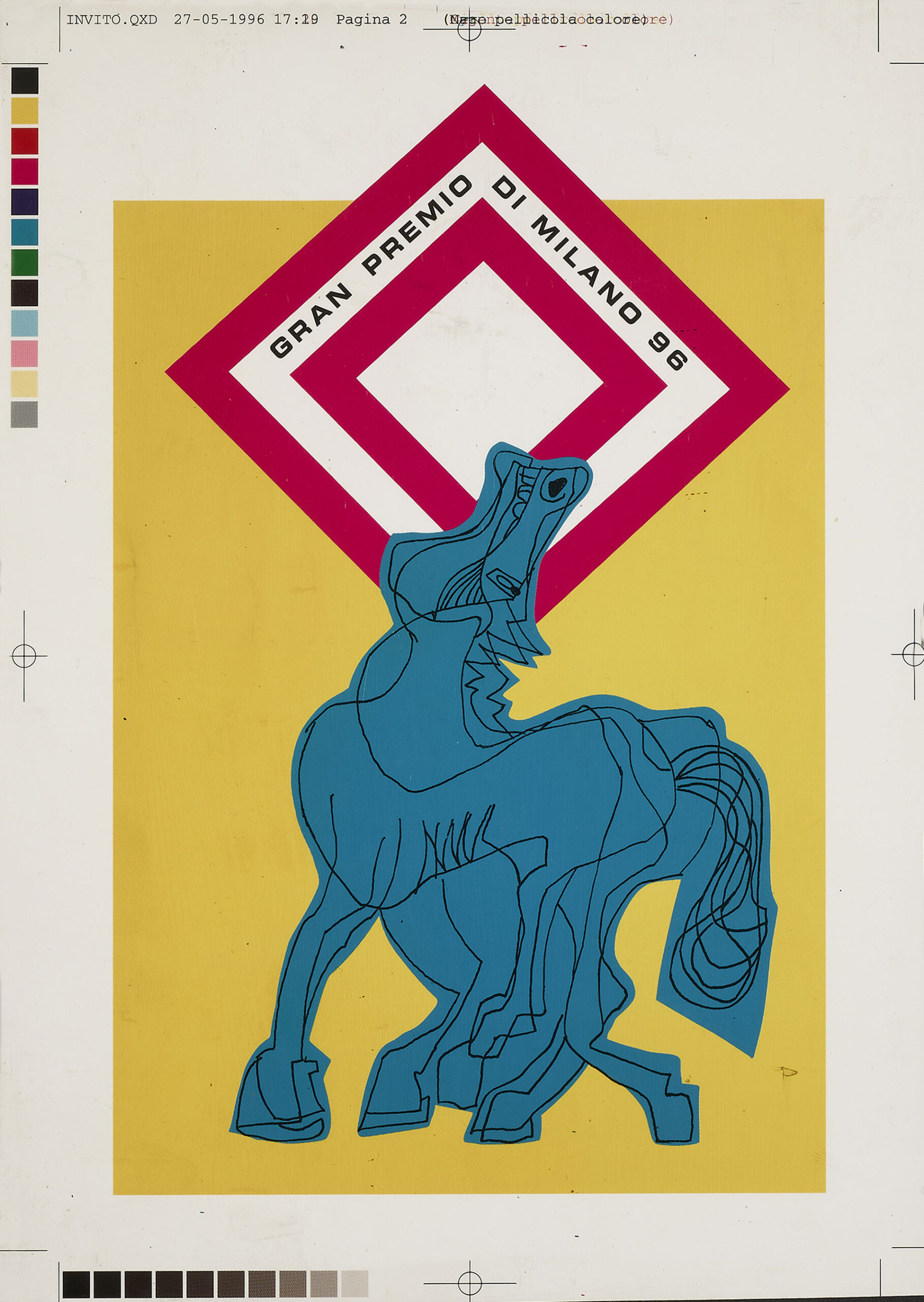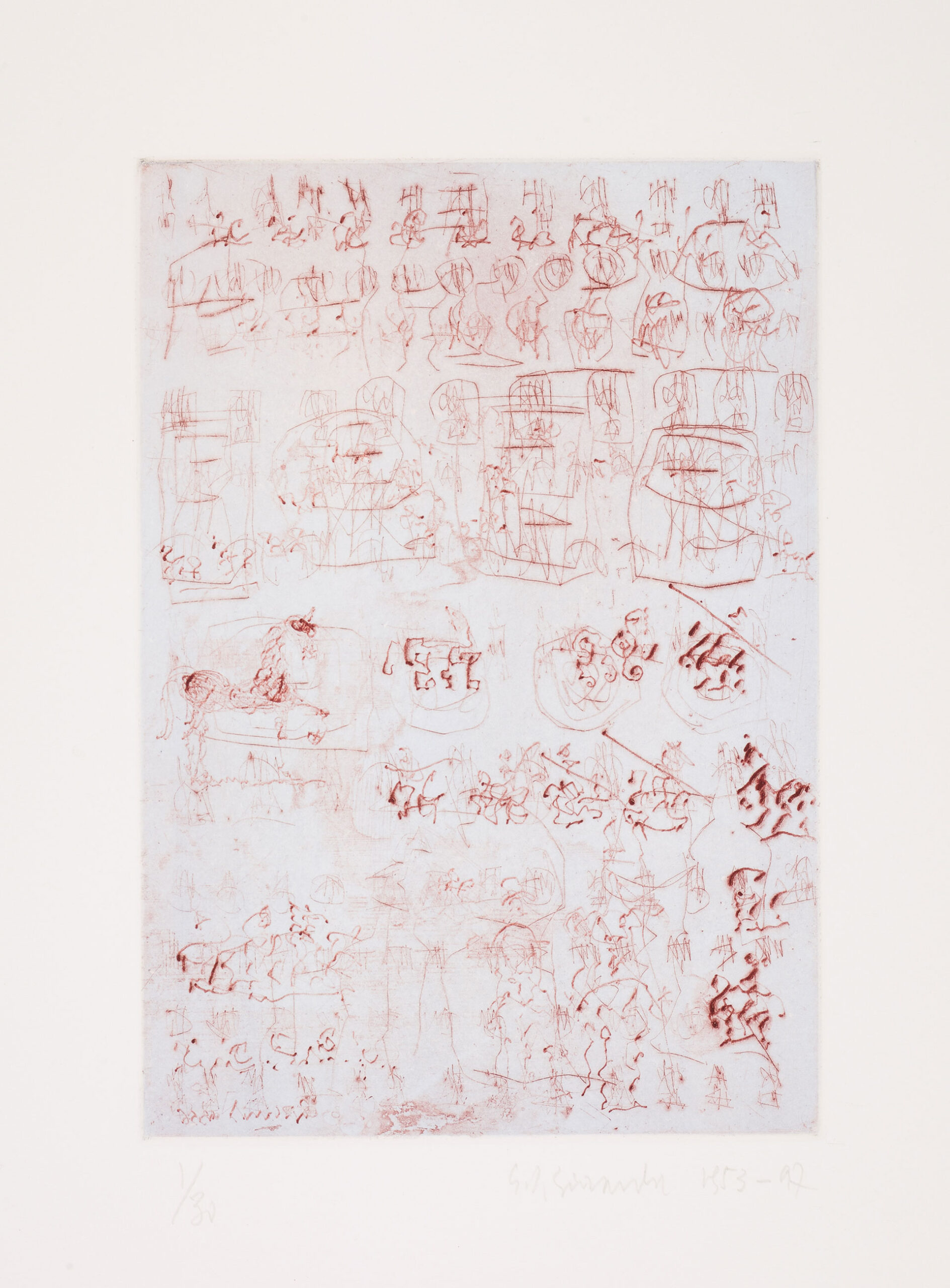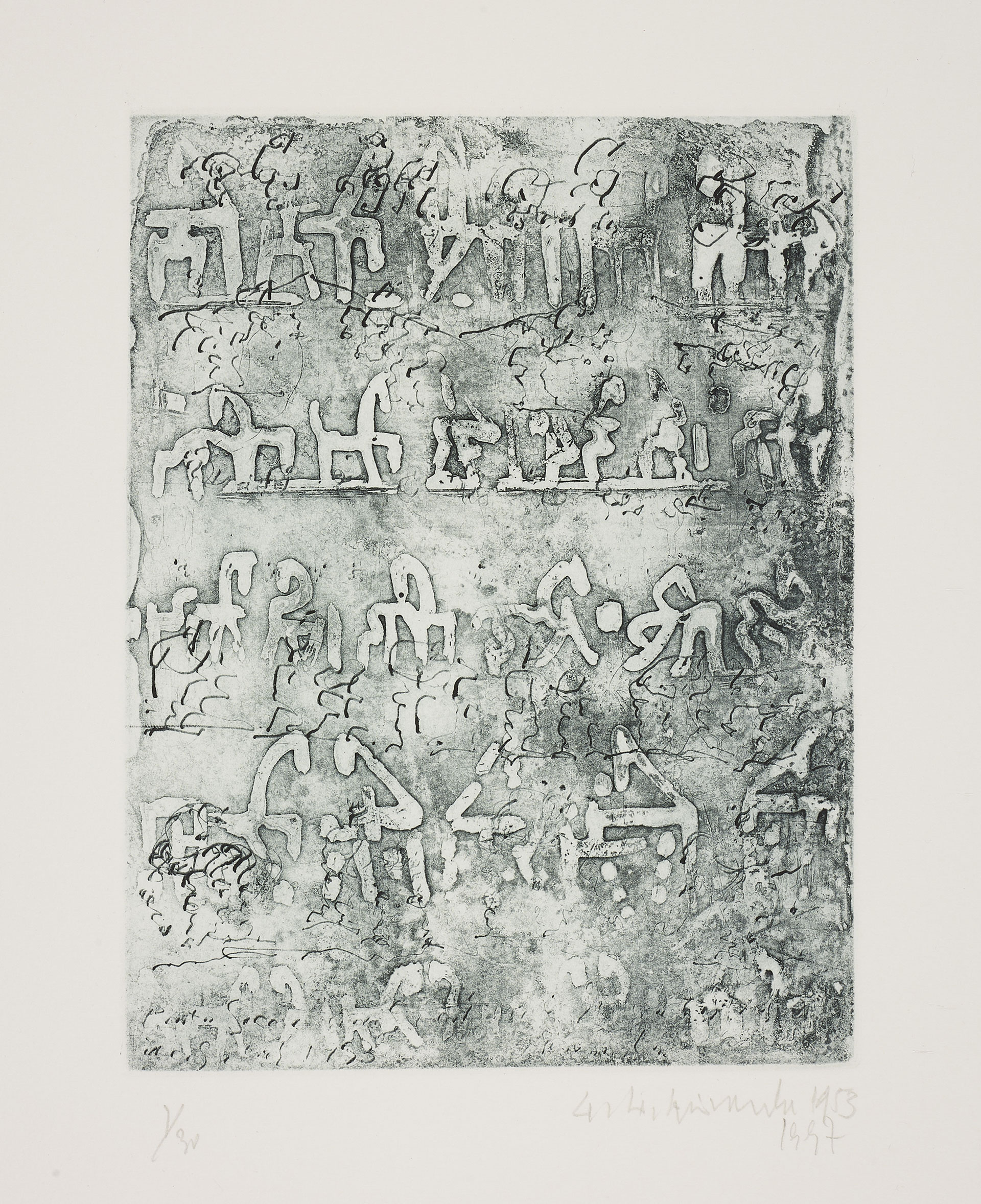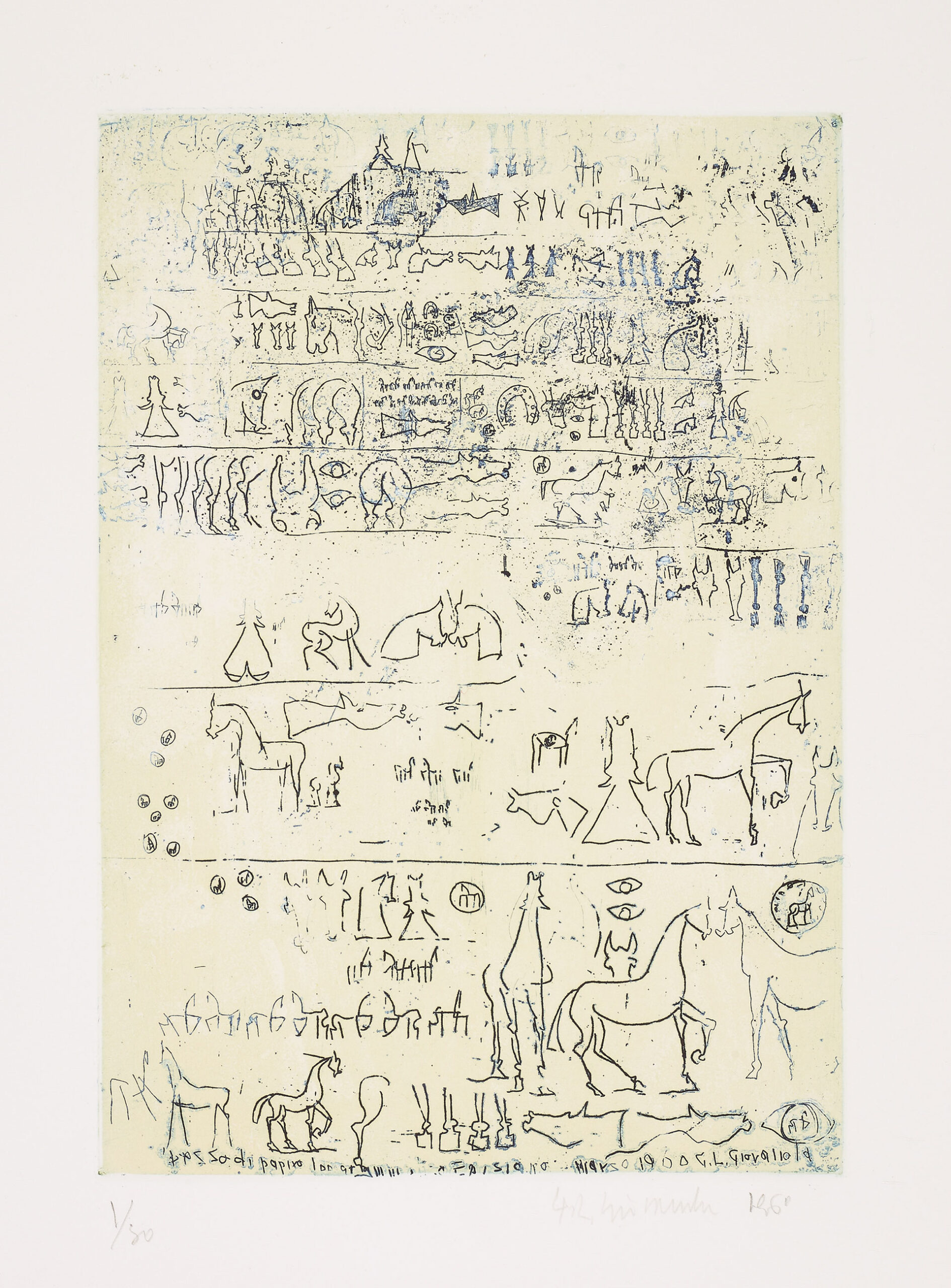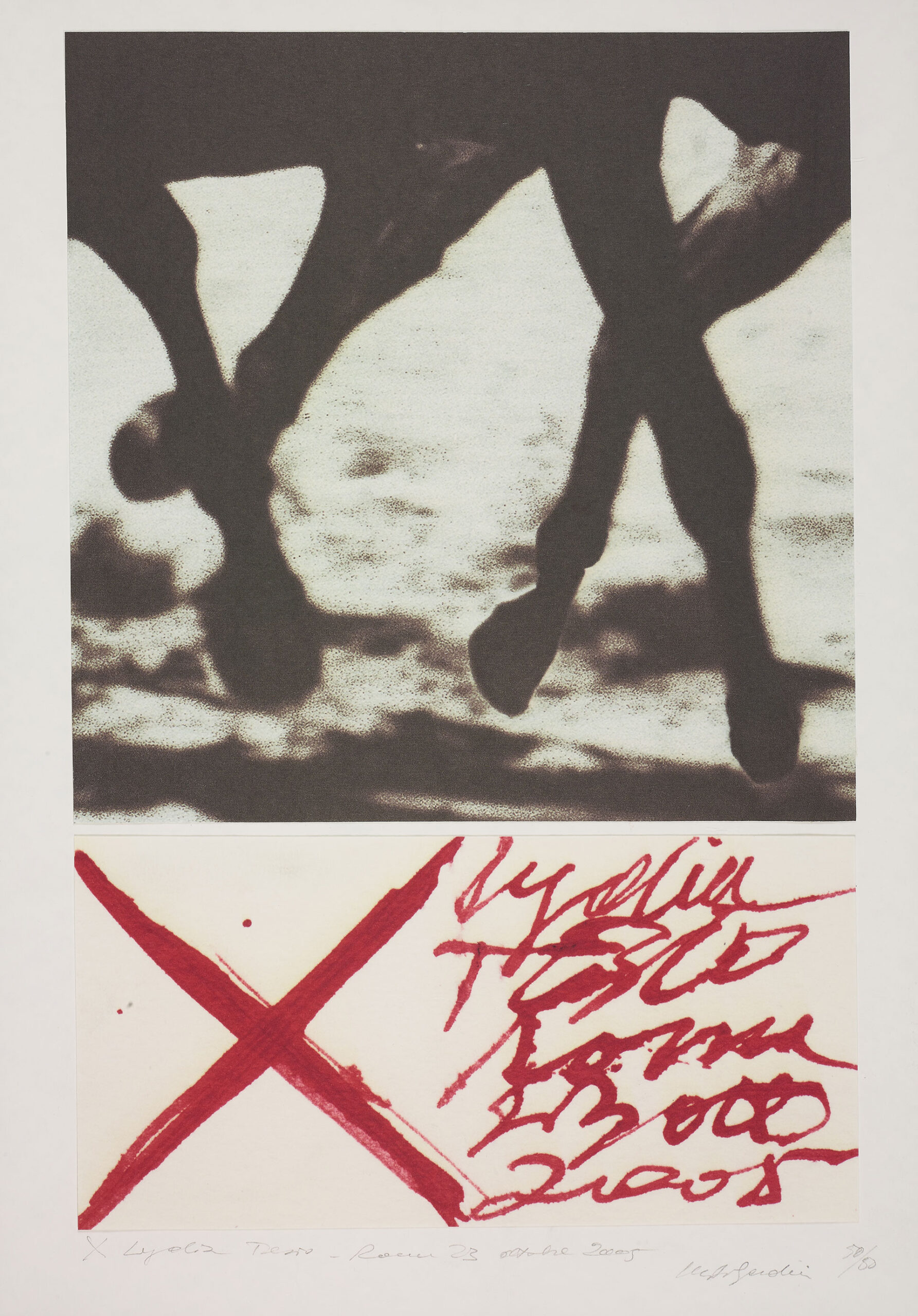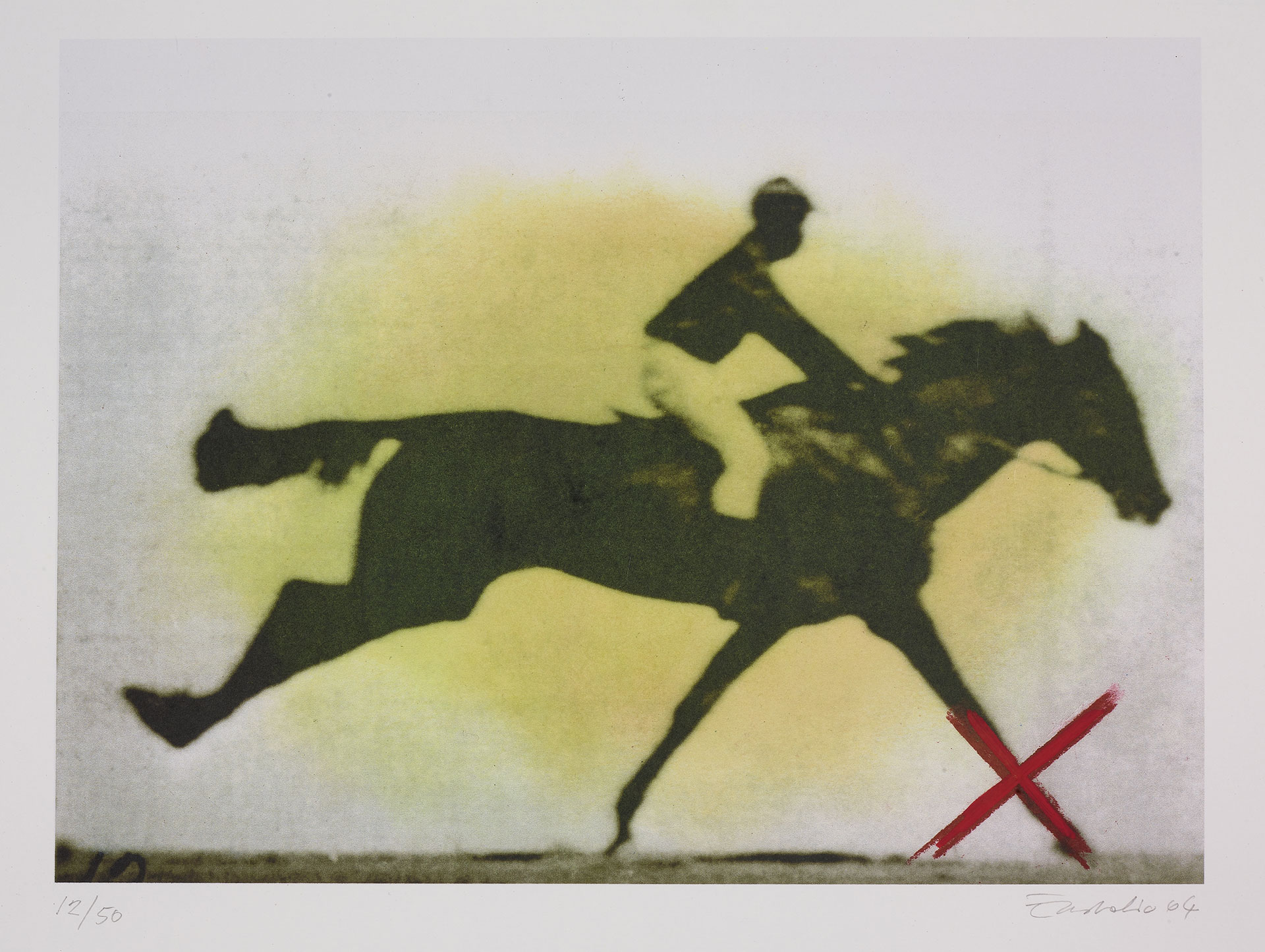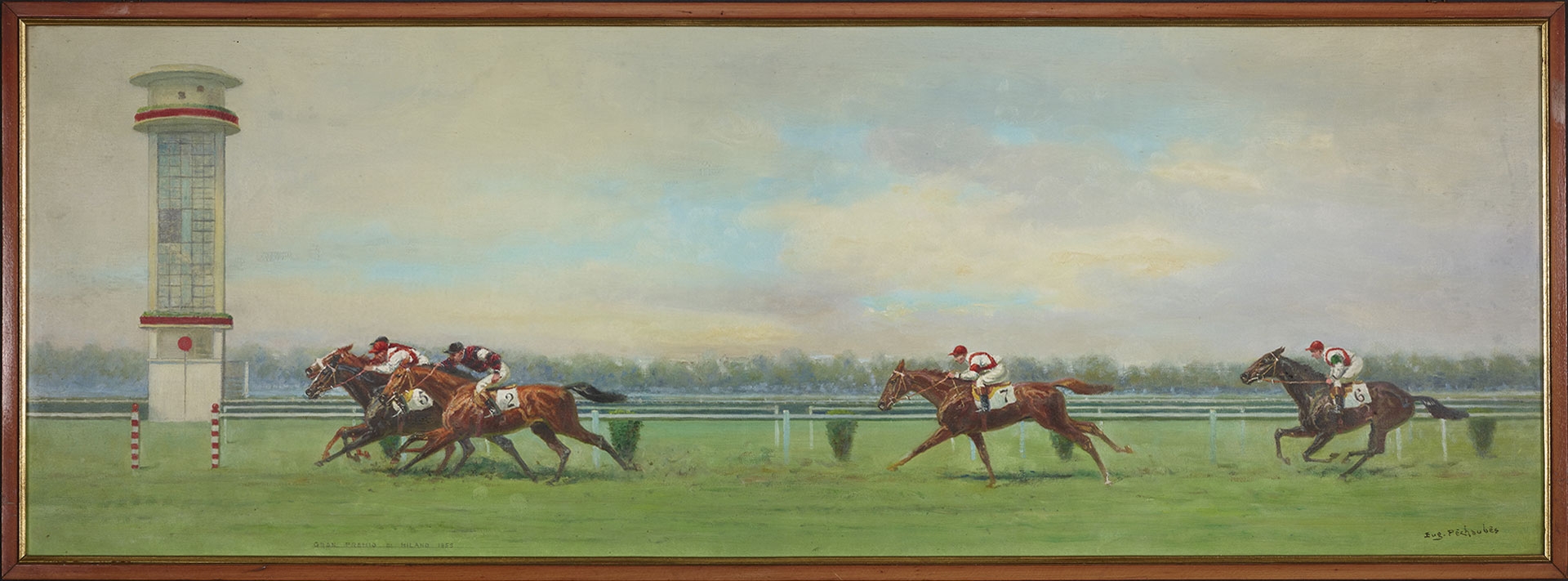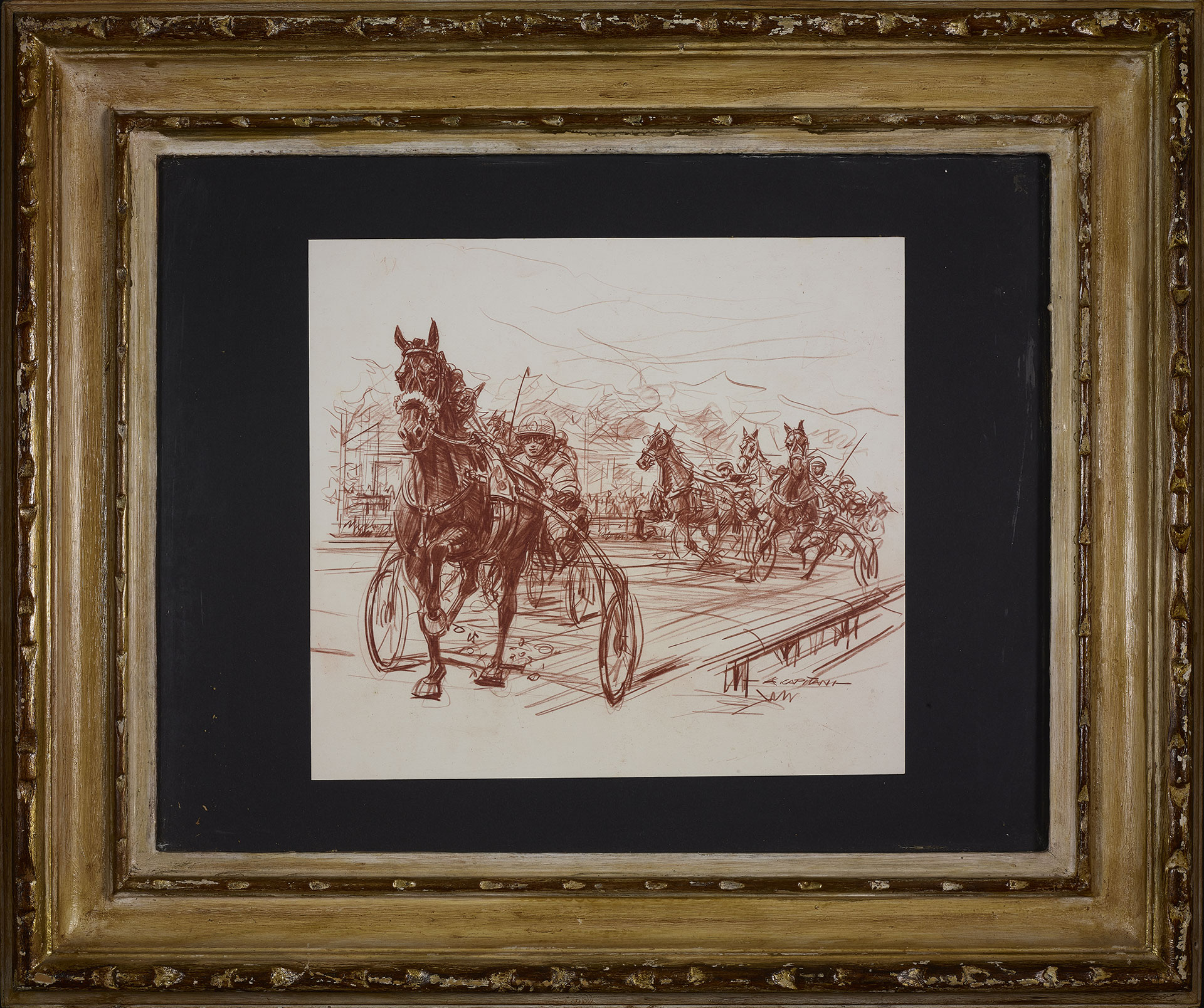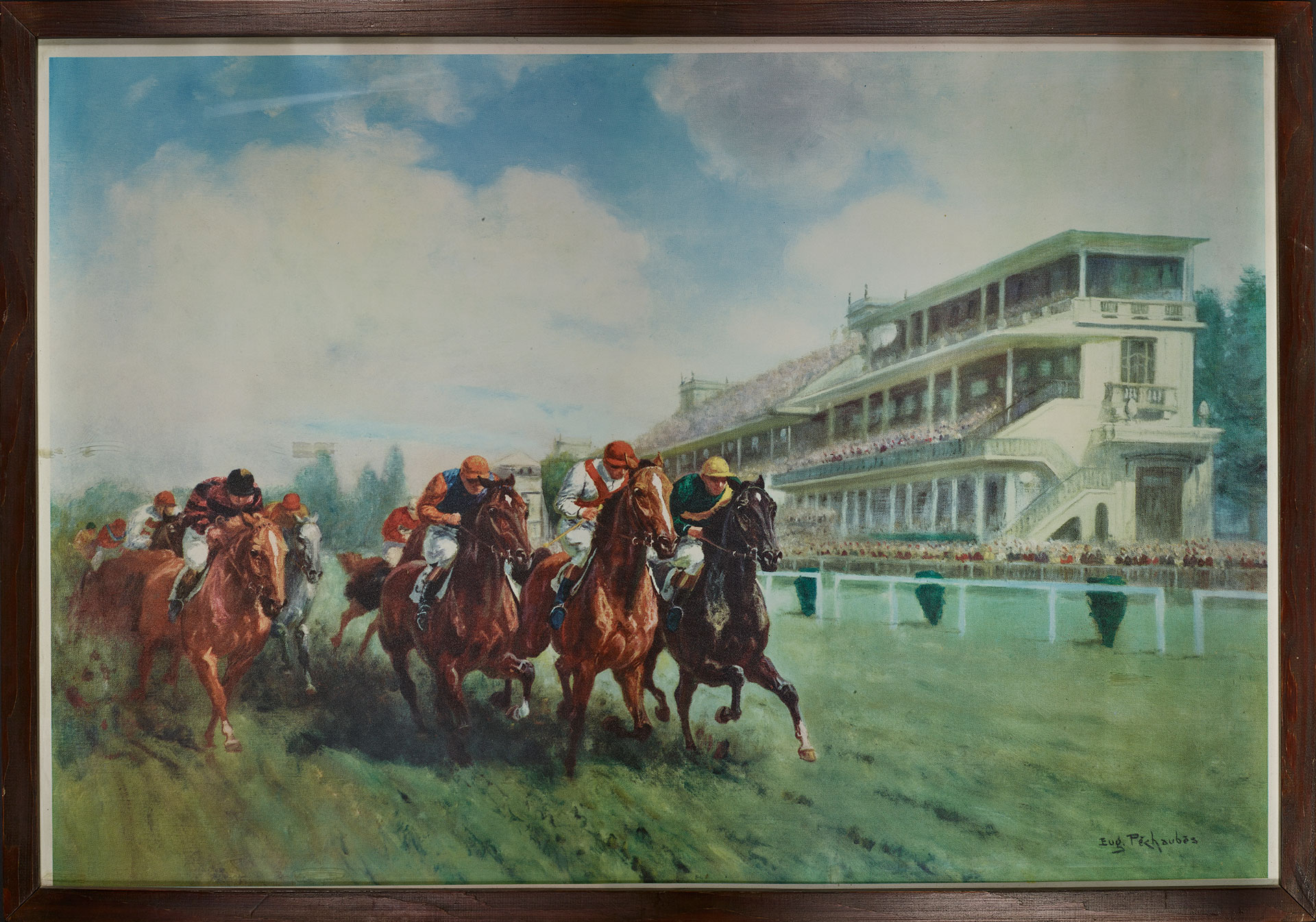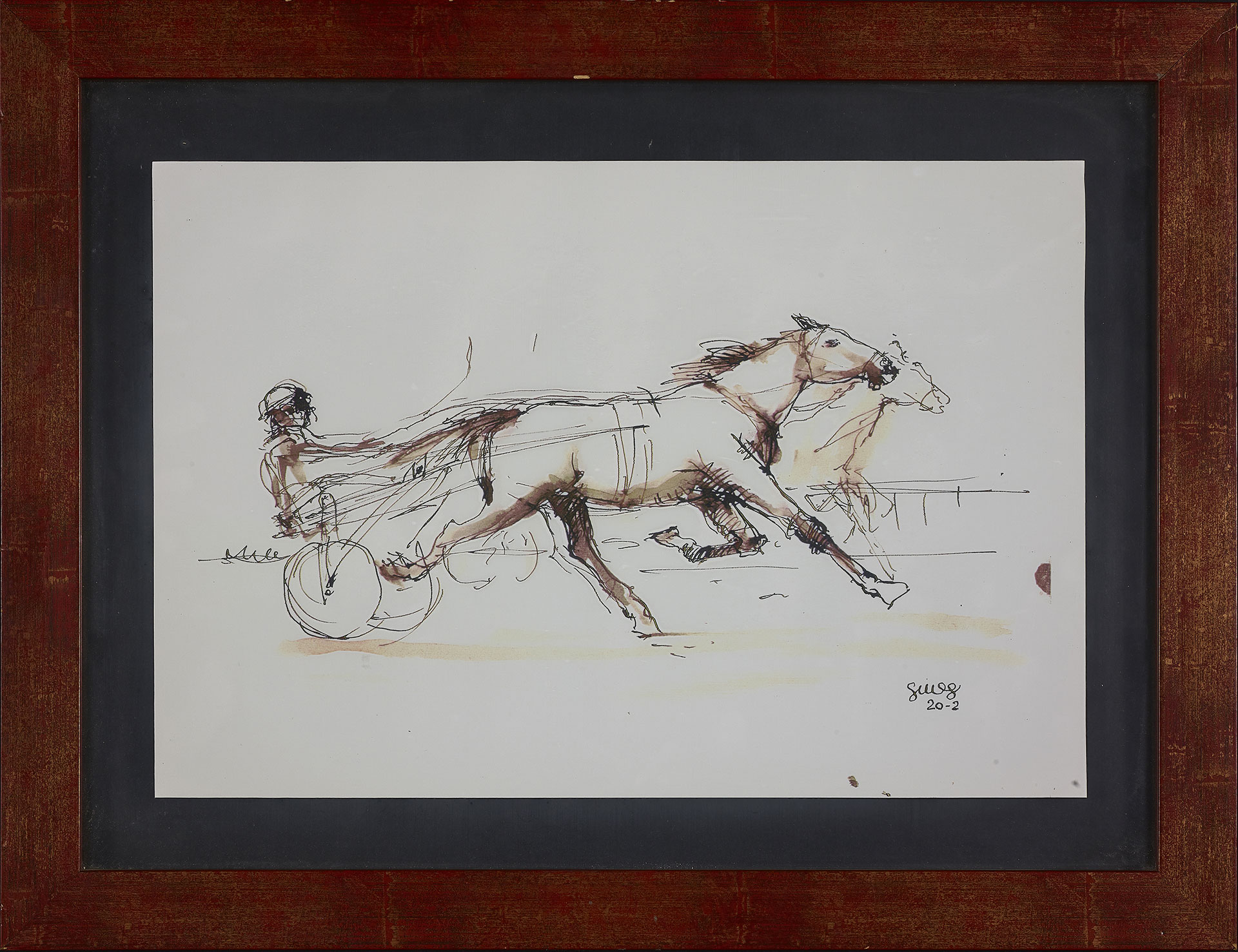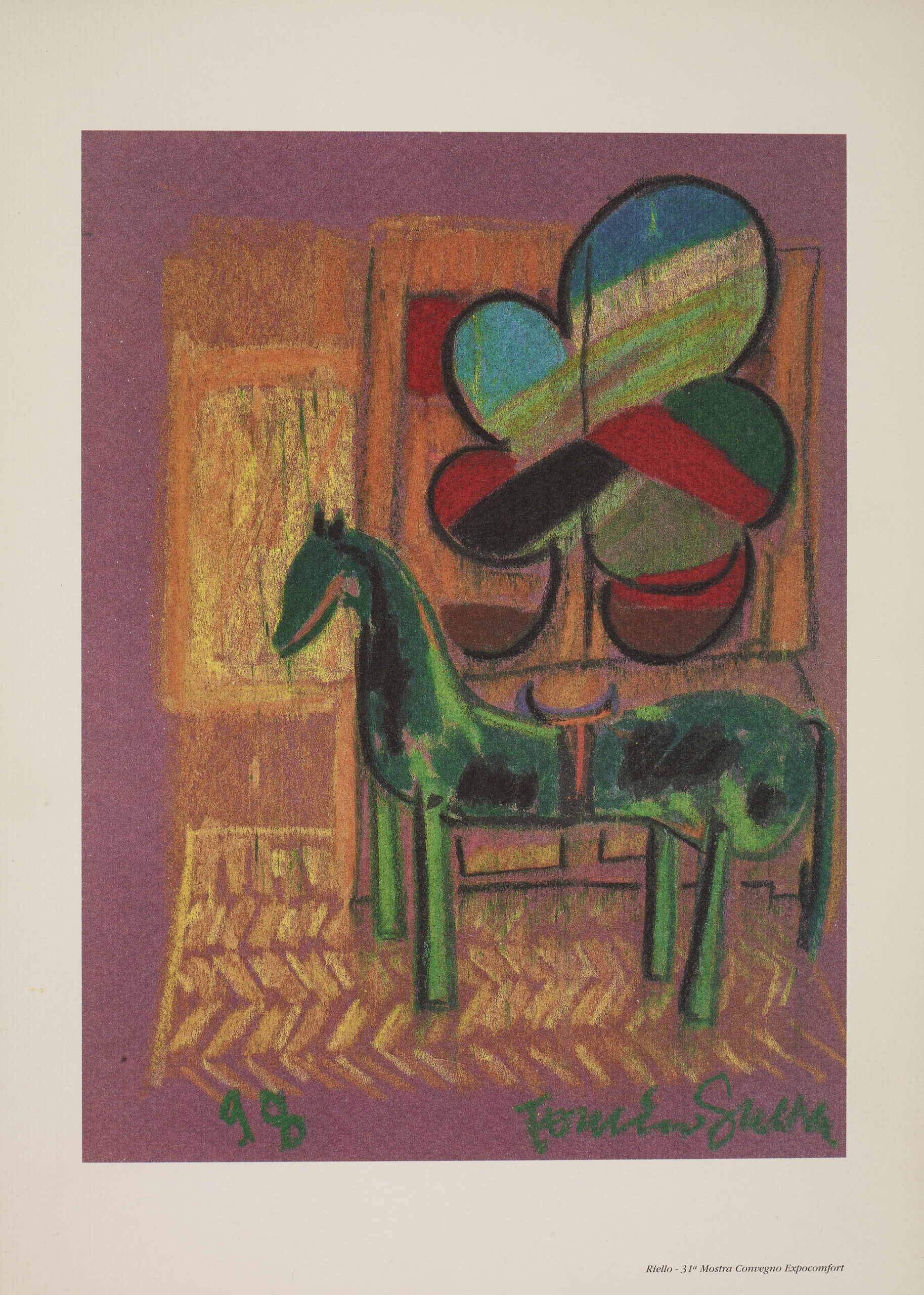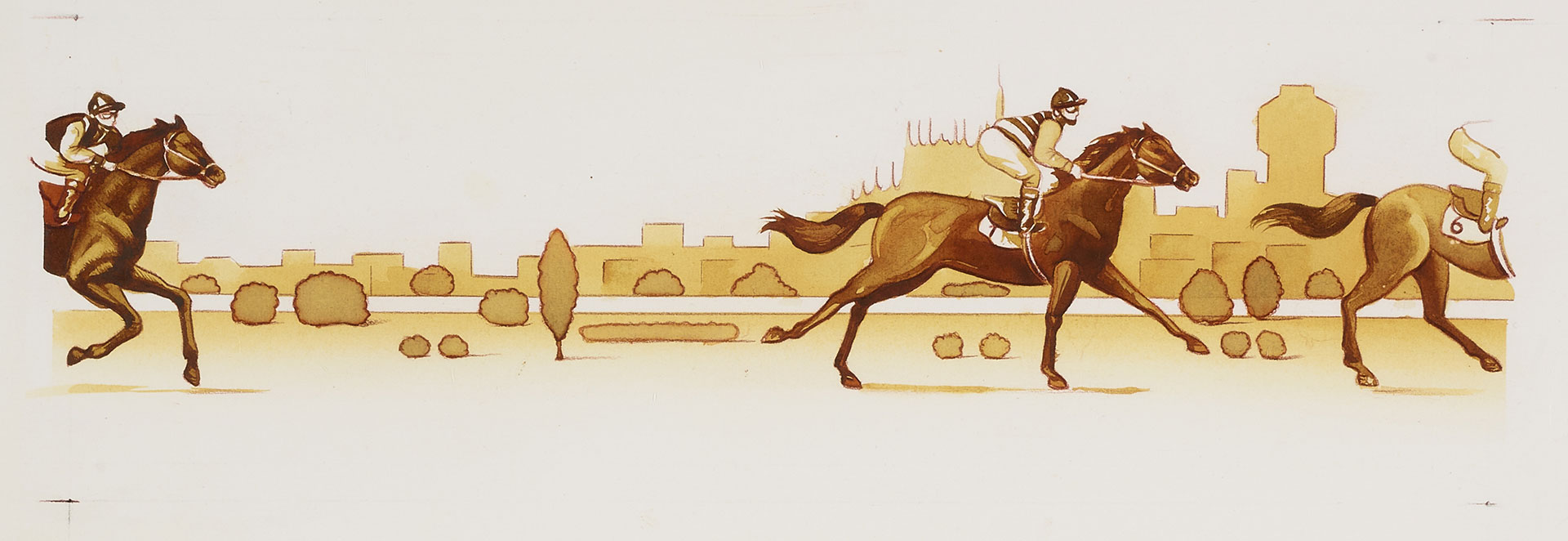In 1898 one of the first and most important stables was founded, paving the way for all modern breeding: Federico Tesio’s Dormello-Olgiata breed. The “Wizard of Dormello” brought great champions – still remembered today – to the most prestigious races, including those held on the gallop tracks of San Siro. A stable owner, breeder and trainer, but also a scholar and a lover of art and science, Tesio learned the delicate work of selecting mares and stallions in the field.
Federico Tesio’s horses.
© San Siro Racecourses Library
Trenno – Federico Tesio, a great Italian owner and breeder.
© San Siro Racecourses Librar
Tesio’s passion for horse racing took in the studies by Darwin and Mendel on the inheritance of genetic traits, but more than anything else it was experiments in crossbreeding horses that led to the success of the Dormello breed.
“Racing calendar”, 1773. A racing calendar, useful for assessing a horse’s performance over the year.
© San Siro Racecourses Library
“The general stud book”, 1891. The stud book contains valuable information on thoroughbreds, breeding and the first progenitors of the breed.
© San Siro Racecourses Library
“Stud book of thoroughbred horses imported into or born in Italy”, 1889.
© San Siro Racecourses Library
“The American stud book in seven volumes”, 1898.
© San Siro Racecourses Library
Genealogical studies on harness racing were systematised starting from the 1920s, thanks in particular to Count Paolo Orsi Mangelli (1880-1977). He soon understood that the fundamental aspects to raise a champion were genealogy and performance on the track, and accordingly studied all specialised publications with family trees and race results. His studies on genealogy took shape on his stud farm. The first “guests” were about fifteen mares, while he later began to import American champions, because at that time the trotters bred in the US were the fastest in the world.
Count Paolo Orsi Mangelli posing with the horse Erro.
© San Siro Racecourses Library
Babau, Count Paolo Orsi Mangelli’s first horse. This three-year-old sorrel colt dominated in the three mandatory trials of the Breeding Grand Prix in Milan with a time of 1:30 per km, which in those years was an exceptional record.
© San Siro Racecourses Library
Bulletin of the National Association of Trotter Horse Breeders. Year 1961.
© San Siro Racecourses Library
Bulletin of the National Association of Trotter Horse Breeders. Year 1972.
© San Siro Racecourses Library
P. Castelvetro, P. Castelvetro, “The American and French trotter: origins and developments of the two breeds”, 1953.
© San Siro Racecourses Library
© San Siro Racecourses Archive
The Laurel Hall – an imported stallion born in the US in 1900 – was the son of Peter The Great, who represented one of the two great lines of American harness racing. He sired both trotters and amblers. His famous sons included: Prince Hall, Filibustiere, Floridoro and Fuoco (all three born in 1936), Inverno (1938) and Loreto (1939).
© San Siro Racecourses Archive
Loreto, born in 1939, was considered by Count Paolo Orsi Mangelli to be the most complete horse born on his stud farm. He was the son of The Laurel Hall.
© San Siro Racecourses Archive
Prince Hall, born in the US in 1930, made his debut in Italy in 1935 and won. He was the sire of Mistero (born in 1940), the horse that won the Grand Prix d’Amérique (before him, no other trotter bred in Italy had achieved this feat).
© San Siro Racecourses Archive
Truax, an imported stallion (born in the US in 1921) bought by Count Paolo Orsi Mangelli in 1933. He sired both trotters and amblers.
© San Siro Racecourses Archive
When Count Paolo Orsi Mangelli supported the establishment of an institution that could organise, manage and control races and farms, Federico Tesio grasped the importance of the initiative and was among its most involved collaborators. A “Royal Decree” in 1932 established the UNIRE (Unione nazionale incremento razze equine, the National Union for the Increase of Equine Breeds), which encouraged the breeding and improvement of equine breeds for competition, particularly Italian trotters and English thoroughbreds.
© San Siro Racecourses Library
The thoroughbred is the fastest and most prestigious equine breed in the world. It dates back, in all probability, to the 18th century when three stallions of Arab origin were imported into England and would prove fundamental: Byerley Turk, Darnley Arabian and Godolphin. The crossbreeding of indigenous Anglo-Saxon mares and beyond with the three stallions blended endurance and speed to provide an elite breed. For this reason, the great Federico Tesio liked to define thoroughbreds as “the most perfect of bastards”.
HISTORICAL PRINTS AND IMAGES
Ribot (1957)
© San Siro Racecourses Archive
Punta Gorda
© San Siro Racecourses Archive
THE GREAT GALLOPERS OF MILAN
Paintings
© San Siro Racecourses Archive
IMAGES OF THE GREAT STARS
Photographs
© San Siro Racecourses Archive
Photographs
© San Siro Racecourses Archive
© Archivio Ippodromi di San Siro
HISTORICAL PRINTS AND IMAGES
Tornese (1952)
© San Siro Racecourses Library
Historical prints and images
© San Siro Racecourses Library
Sharif Di Jesolo (1969 – father of Indro Park. He was the most important indigenous Italian stallion)
© San Siro Racecourses Library
THE GREAT TROTTERS OF MILAN
Pictures
© San Siro Racecourses Archive
IMAGES OF THE GREAT STARS
Milan, 13 January 1963: an oceanic crowd fills Piazza Duomo to greet Tornese and Sergio Brighenti, the “flying sauro” and the “Pilot”.
© Photo Perrucci. San Siro Racecourses Archive
Waymaker (1971)
© San Siro Racecourses Archive
Horses and harness and gallop races have always fascinated artists of all eras. Diverse examples of pictures and graphics have been found in the San Siro Racecourses Archive, depicting various horses with different techniques and styles.
These three small graphics represent the activities at the San Siro Gallop Racecourse: the races and the side events.
© San Siro Racecourses Archive
© San Siro Racecourses Archive
Original engravings made with the etching technique by the artist Gian Luigi Giovanola, contained in the portfolio “Giovanola’s Horses” published by the Historical Harness Racing Museum.
© San Siro Racecourses Archive
Artist prints
© San Siro Racecourses Archive
Painting representing the 1955 Grand Prix of Milan. Picture by Eugène Péchaubès (signed).
© San Siro Racecourses Archive
Paintings depicting racing horses.
© Private collection – painting kept at the San Siro Racecourse
Print created by the poet Antonio Guerra (known as Tonino) on the occasion of the 31st Expocomfort Conference Exhibition in 1998.
© San Siro Racecourses Archive
Small watercolour depicting horses galloping during a race. In the background is a skyline of Milan, with the lines of the Duomo and the Torre Velasca clearly recognisable.
© San Siro Racecourses Archive



